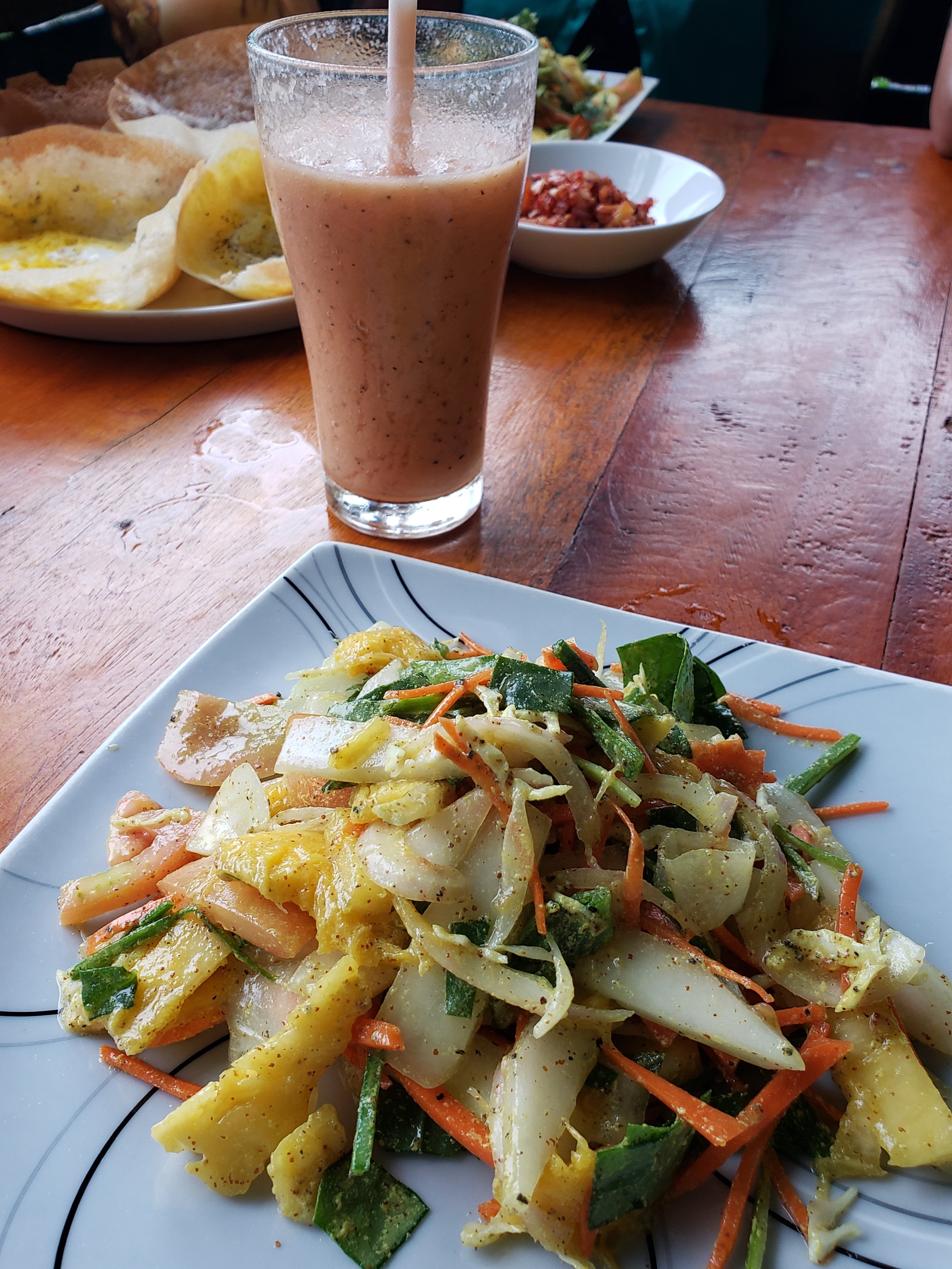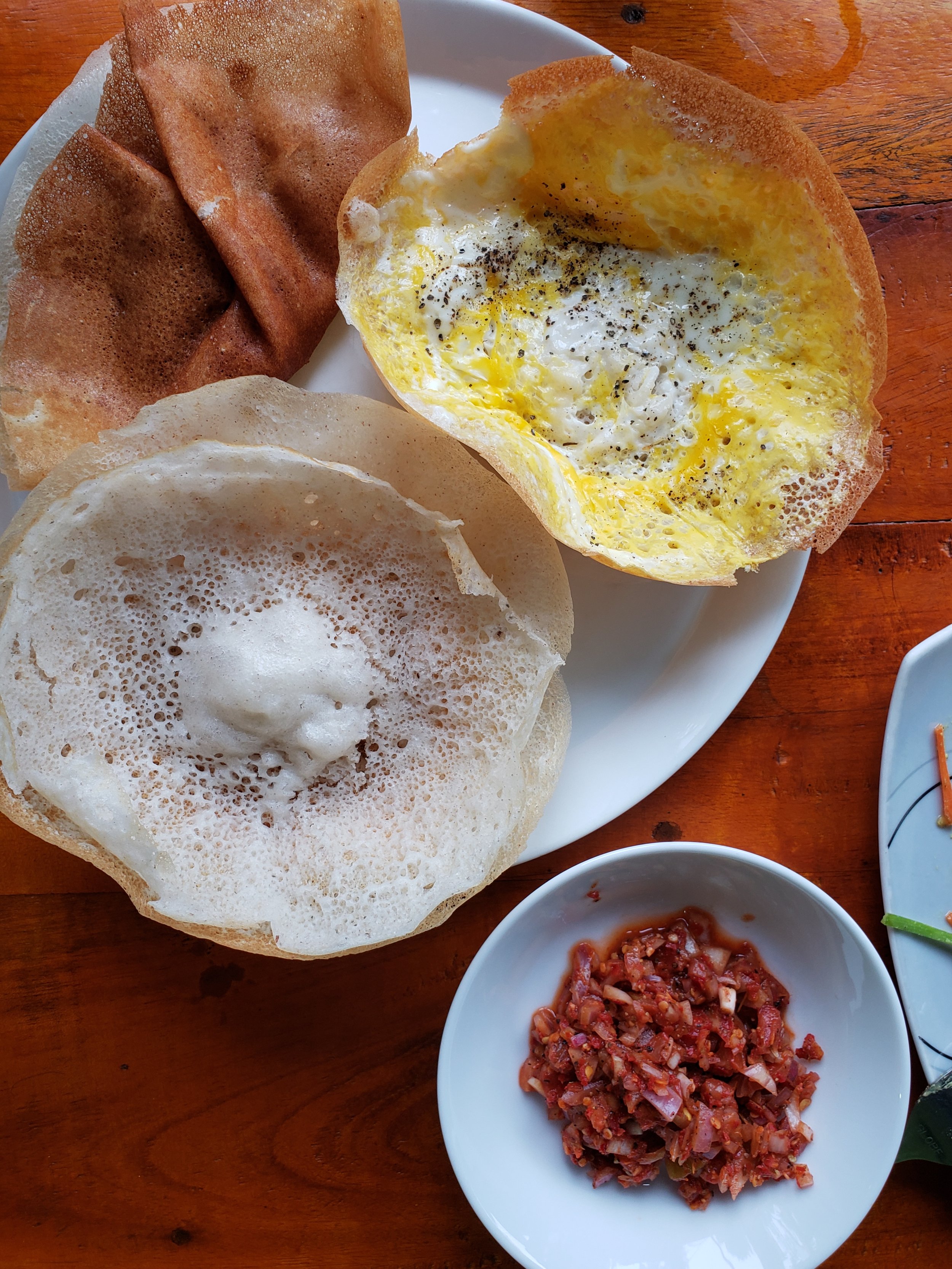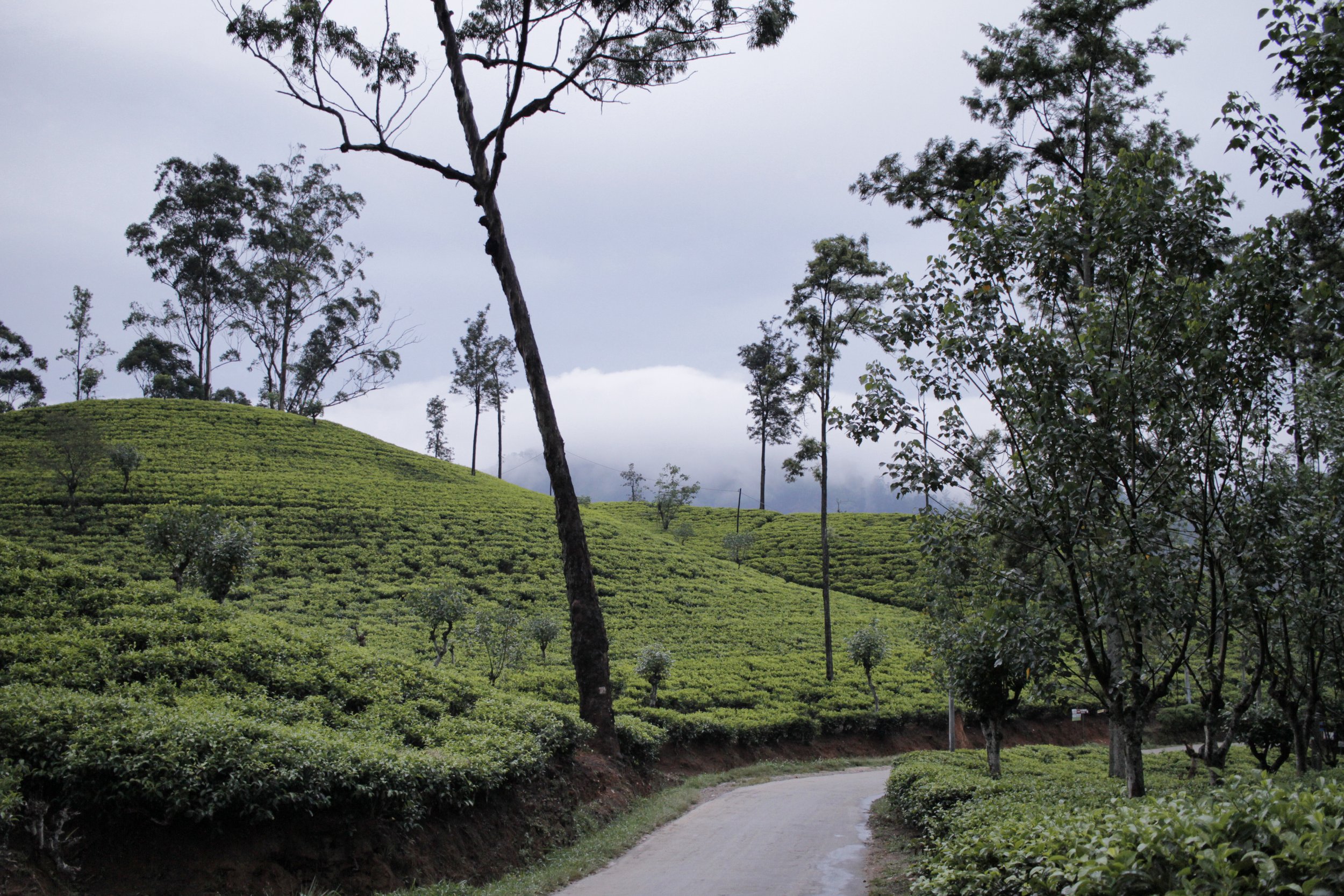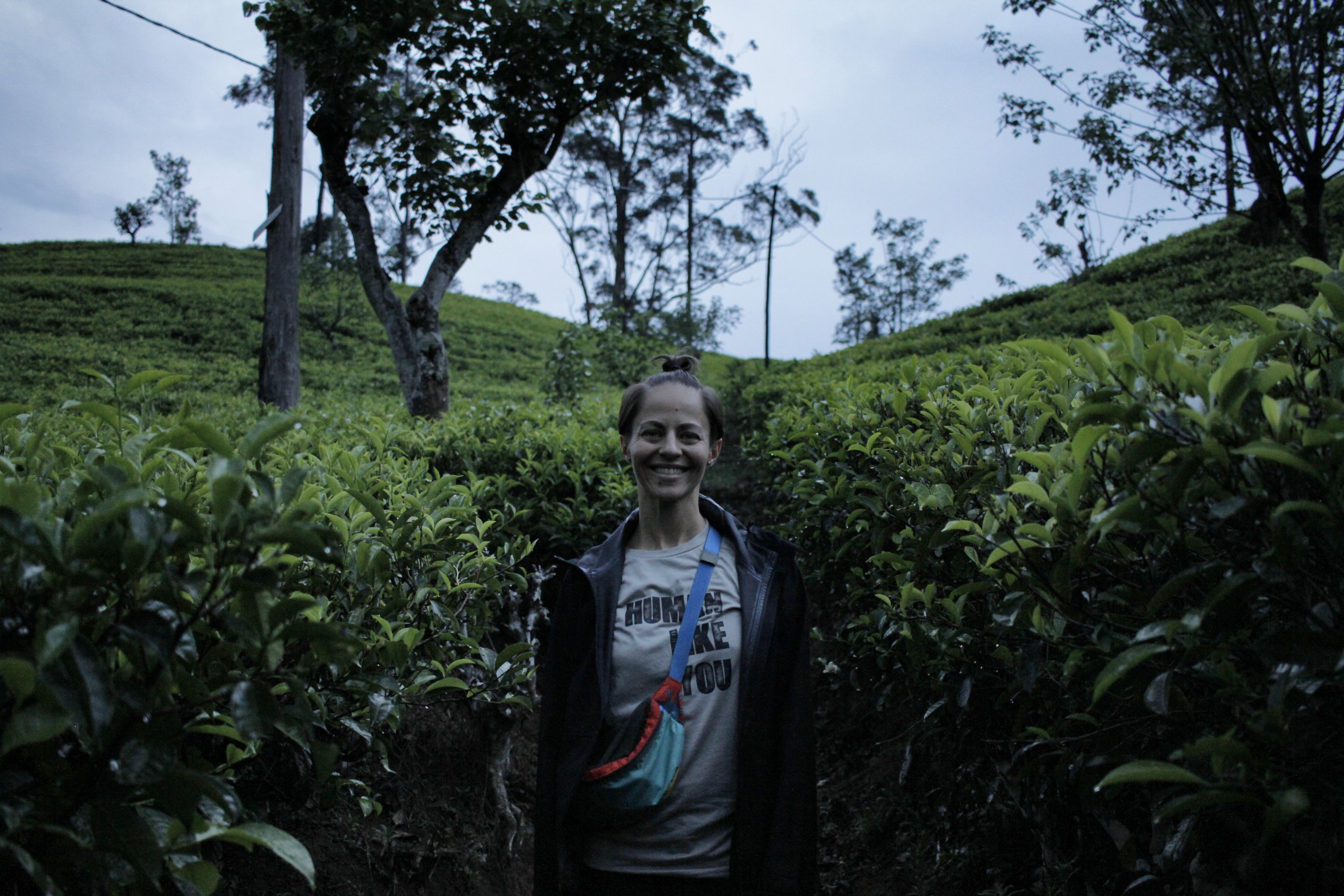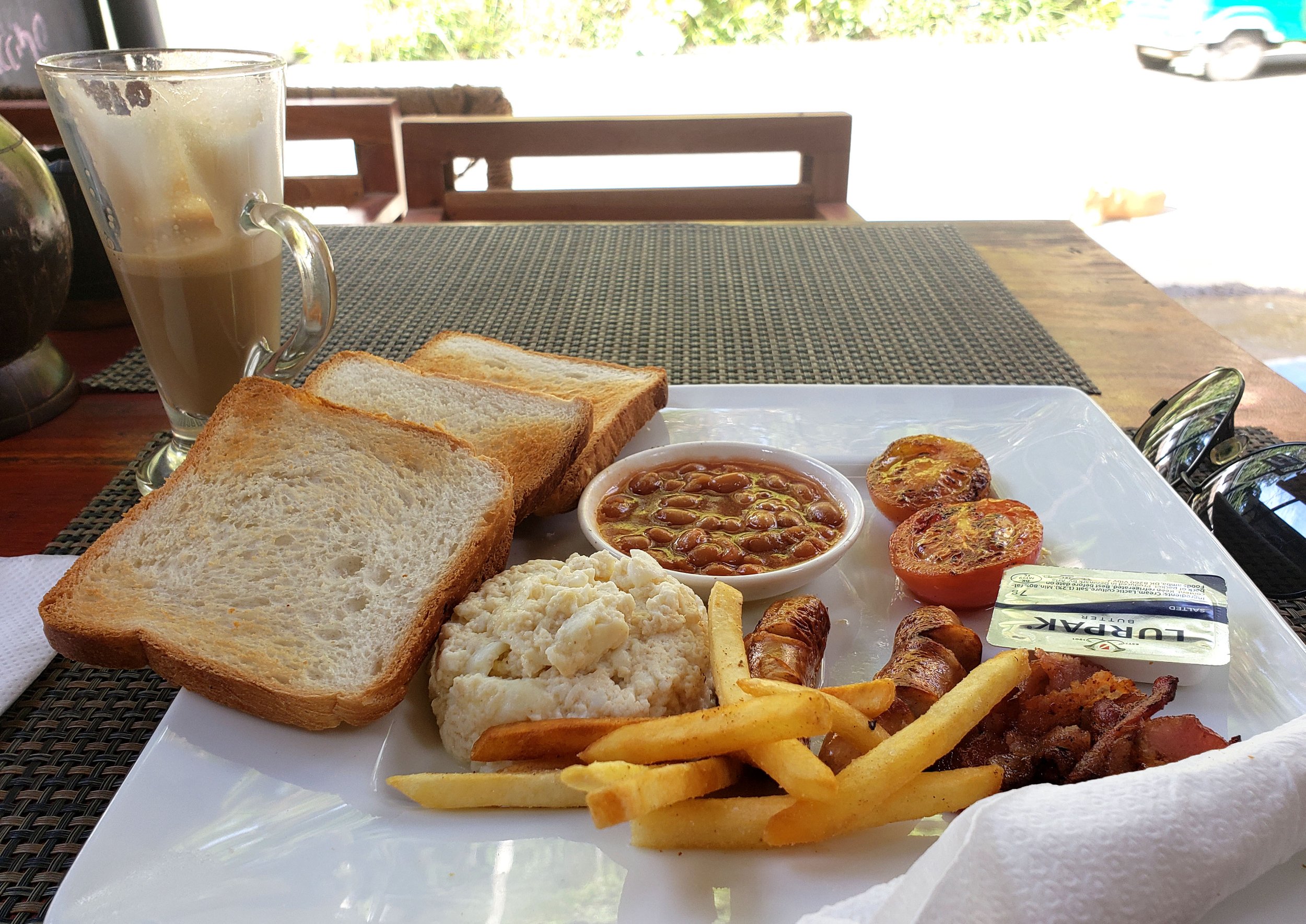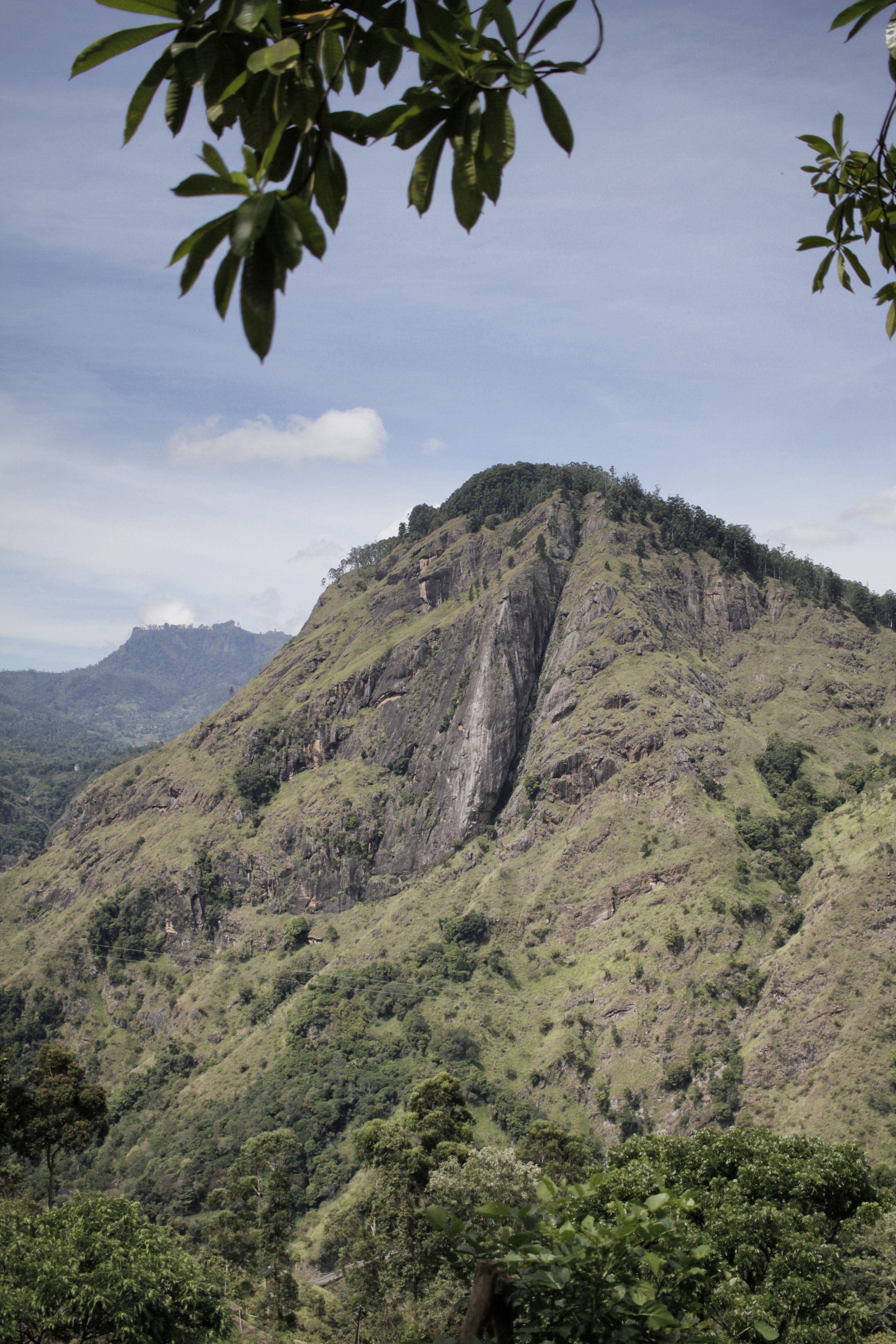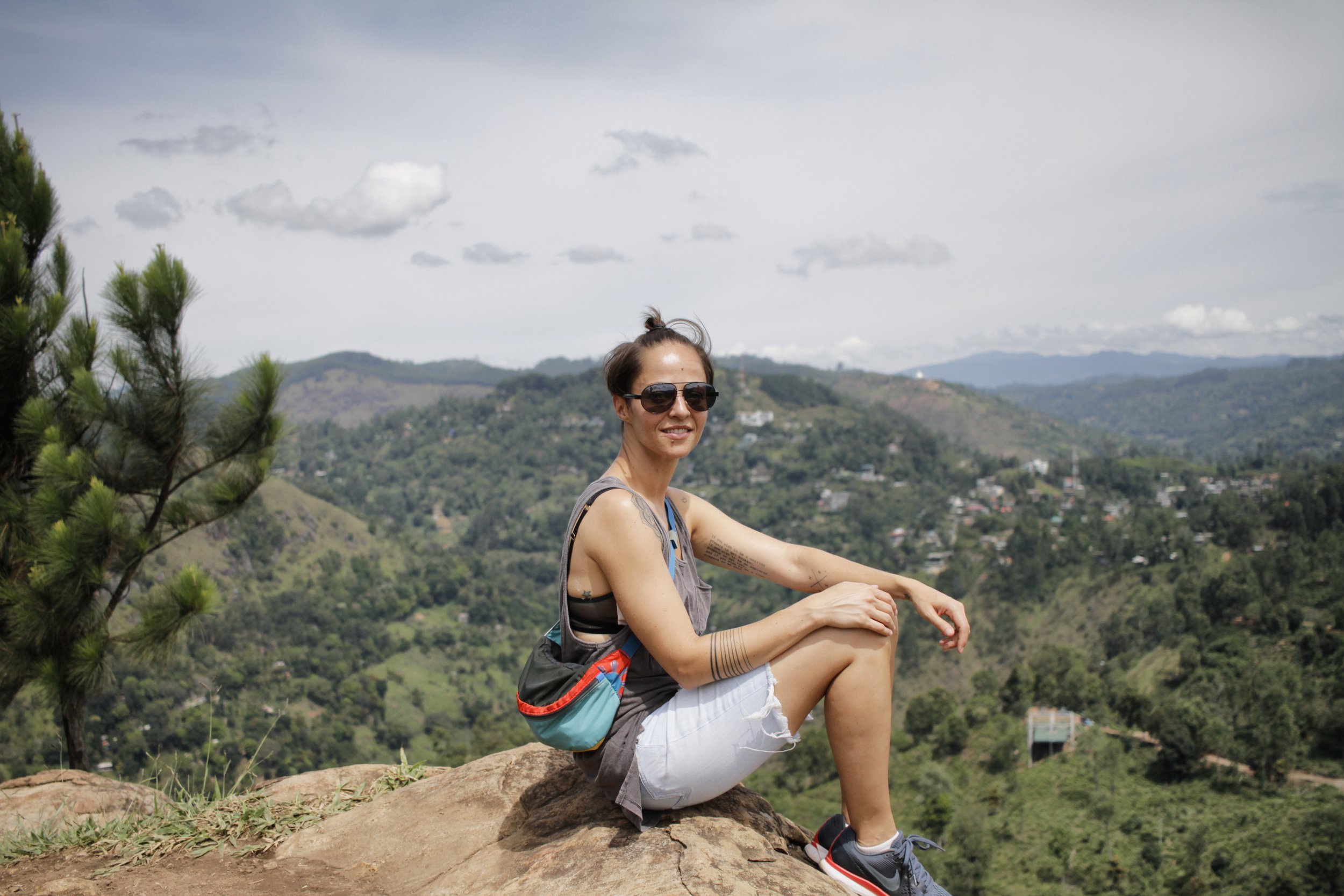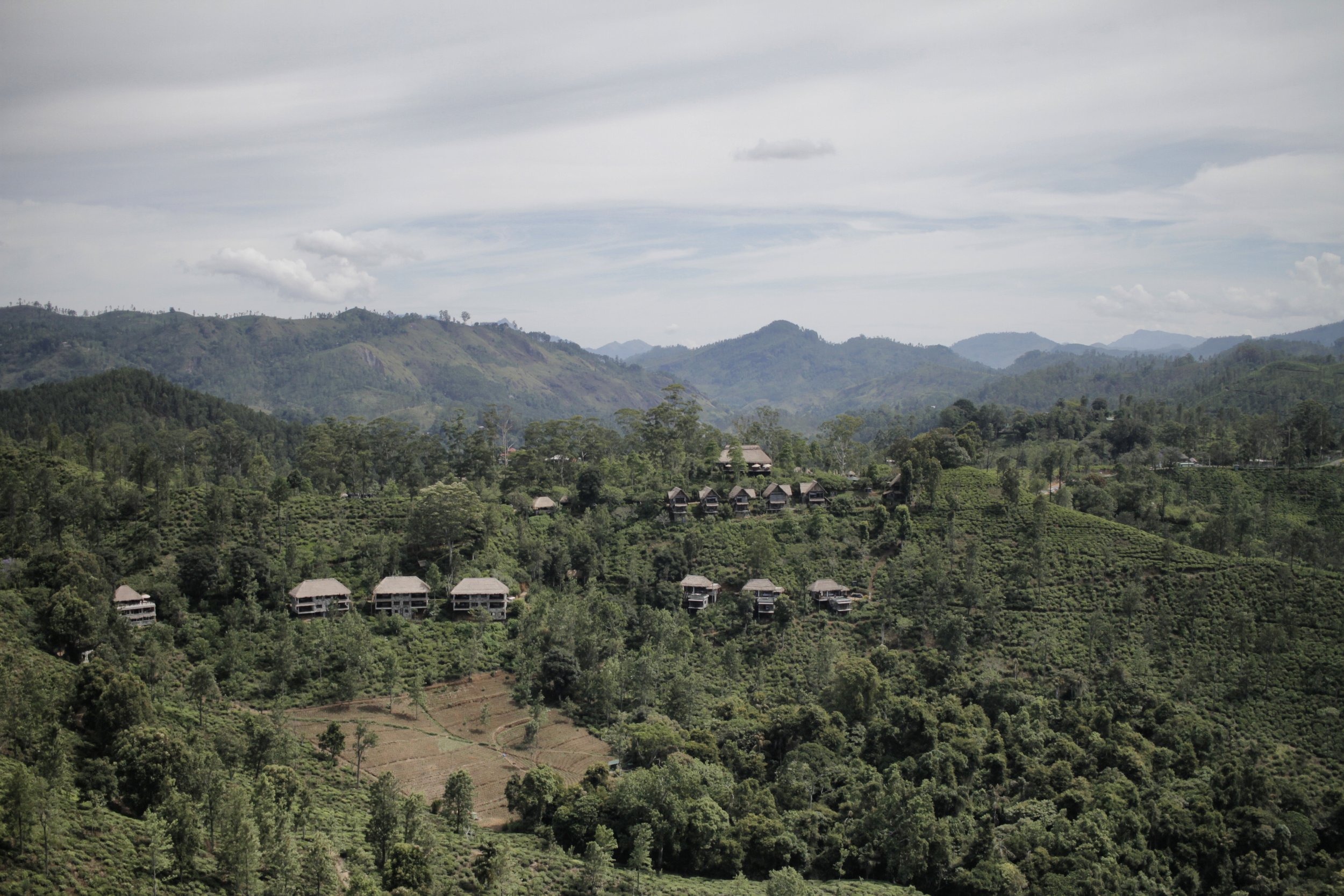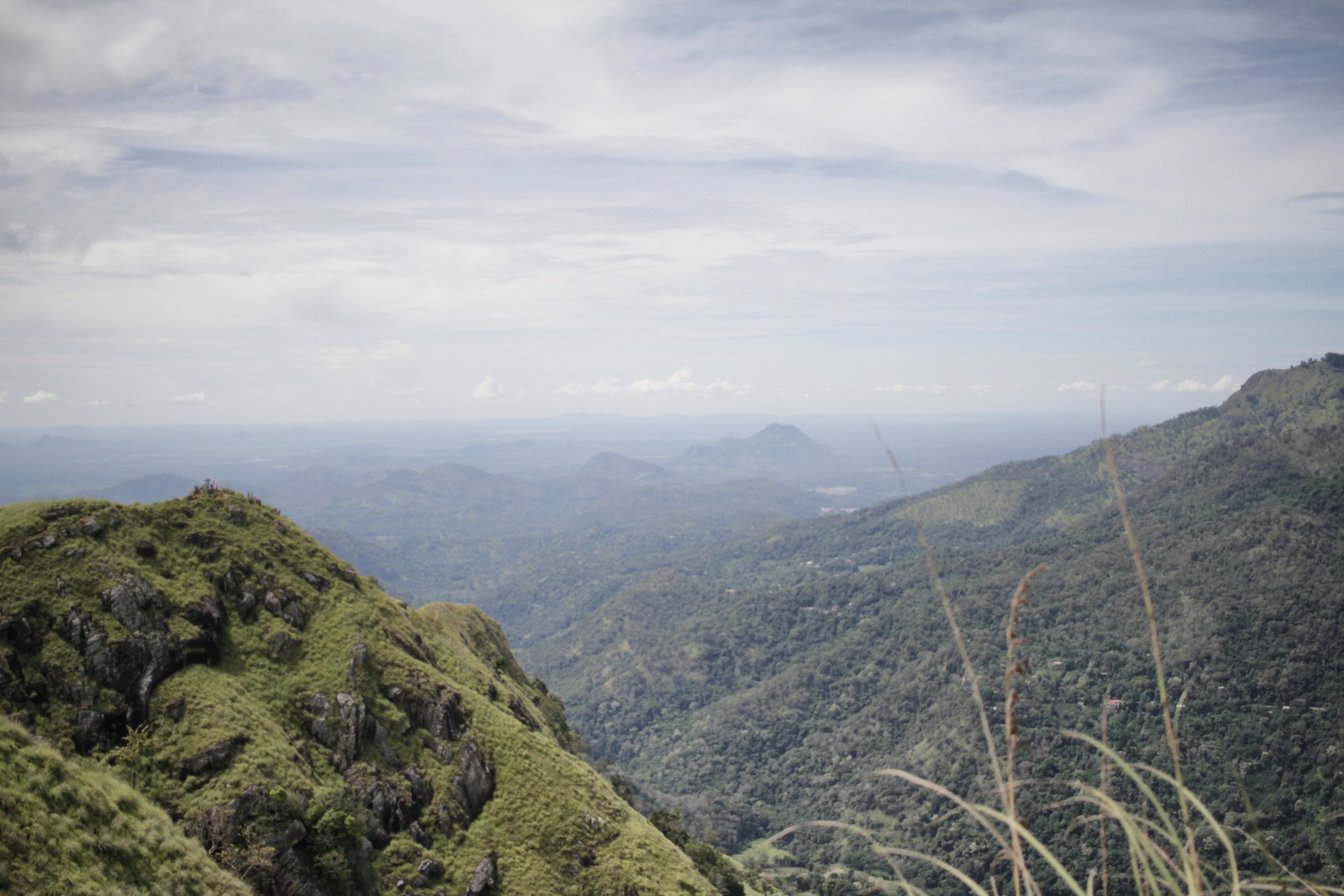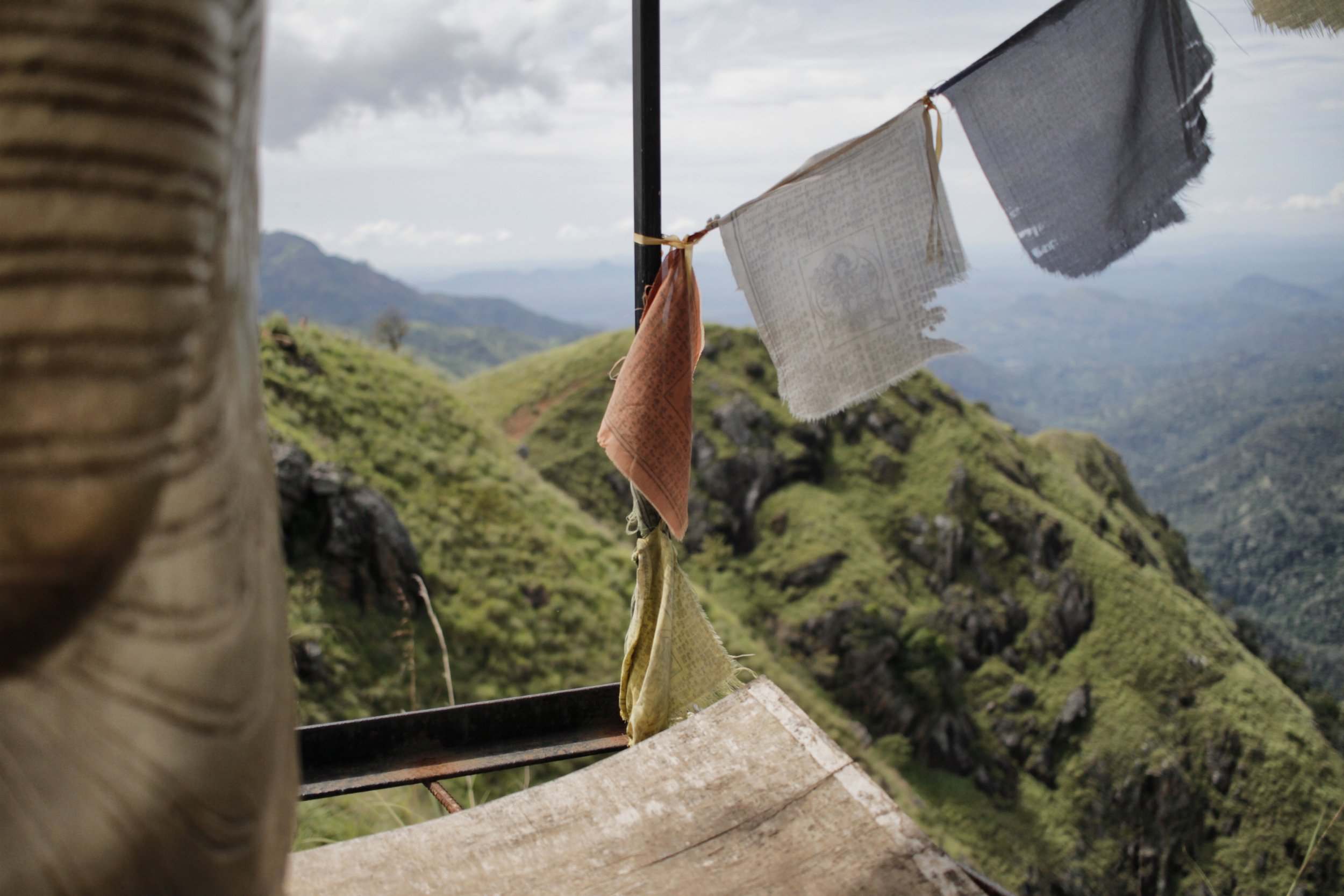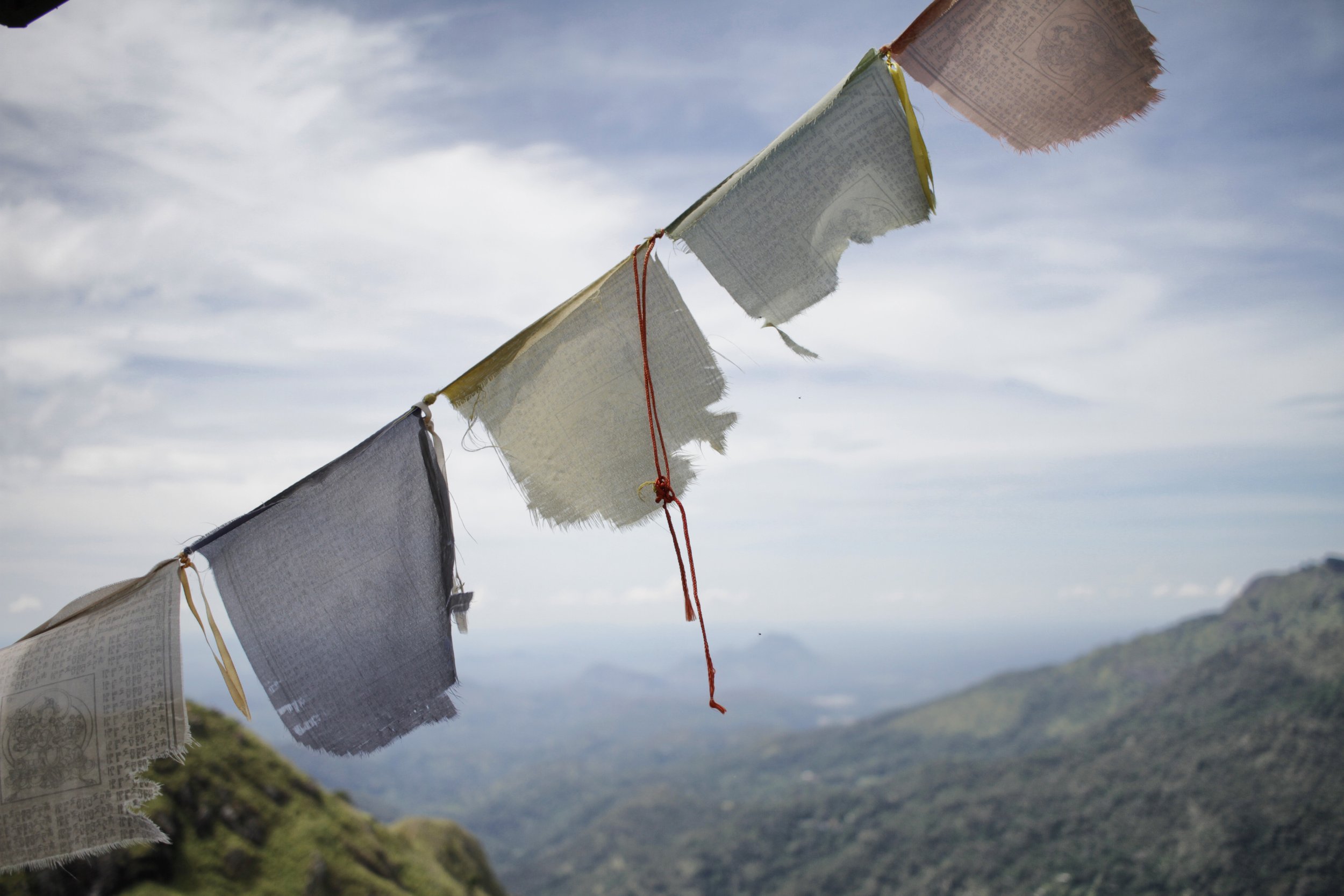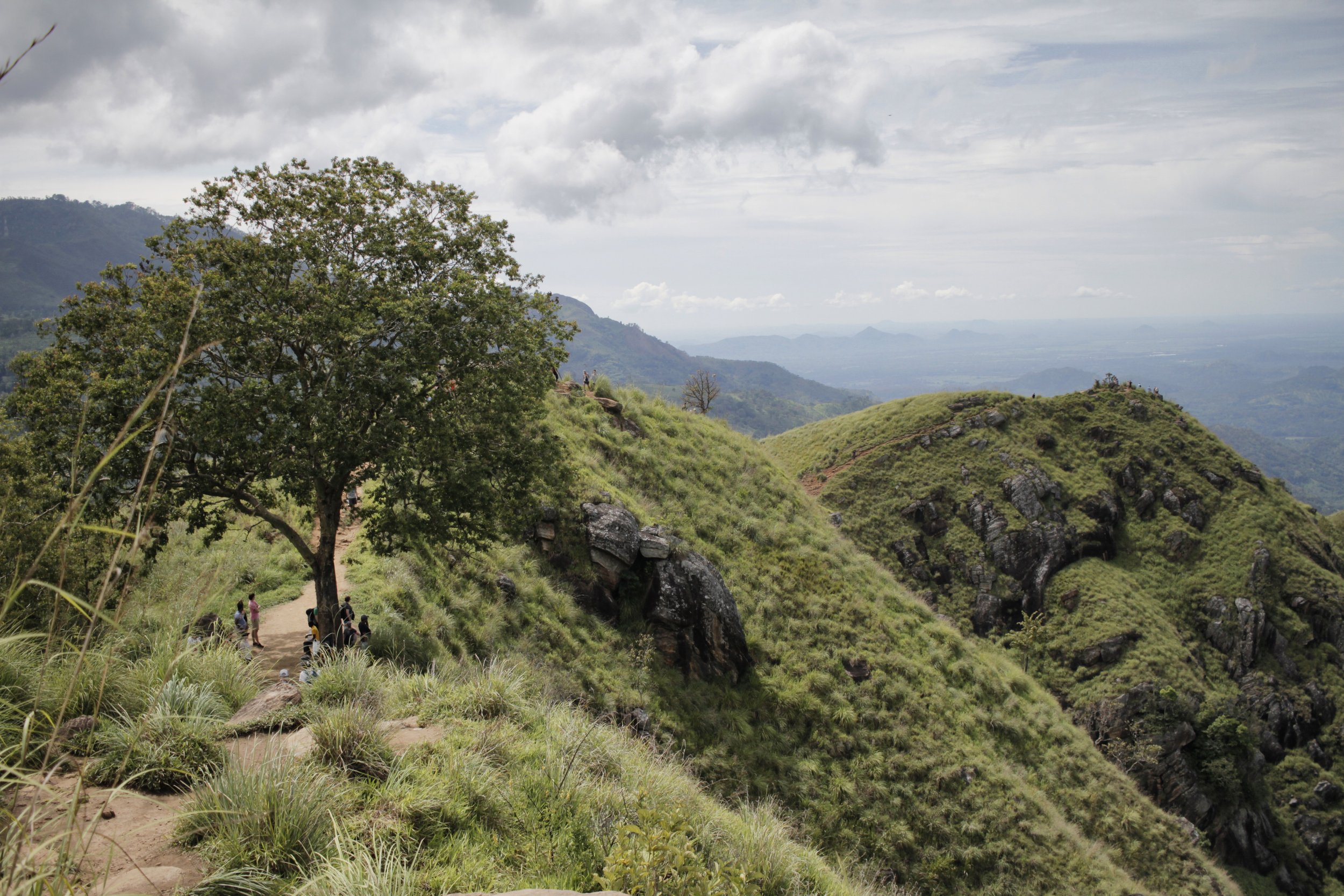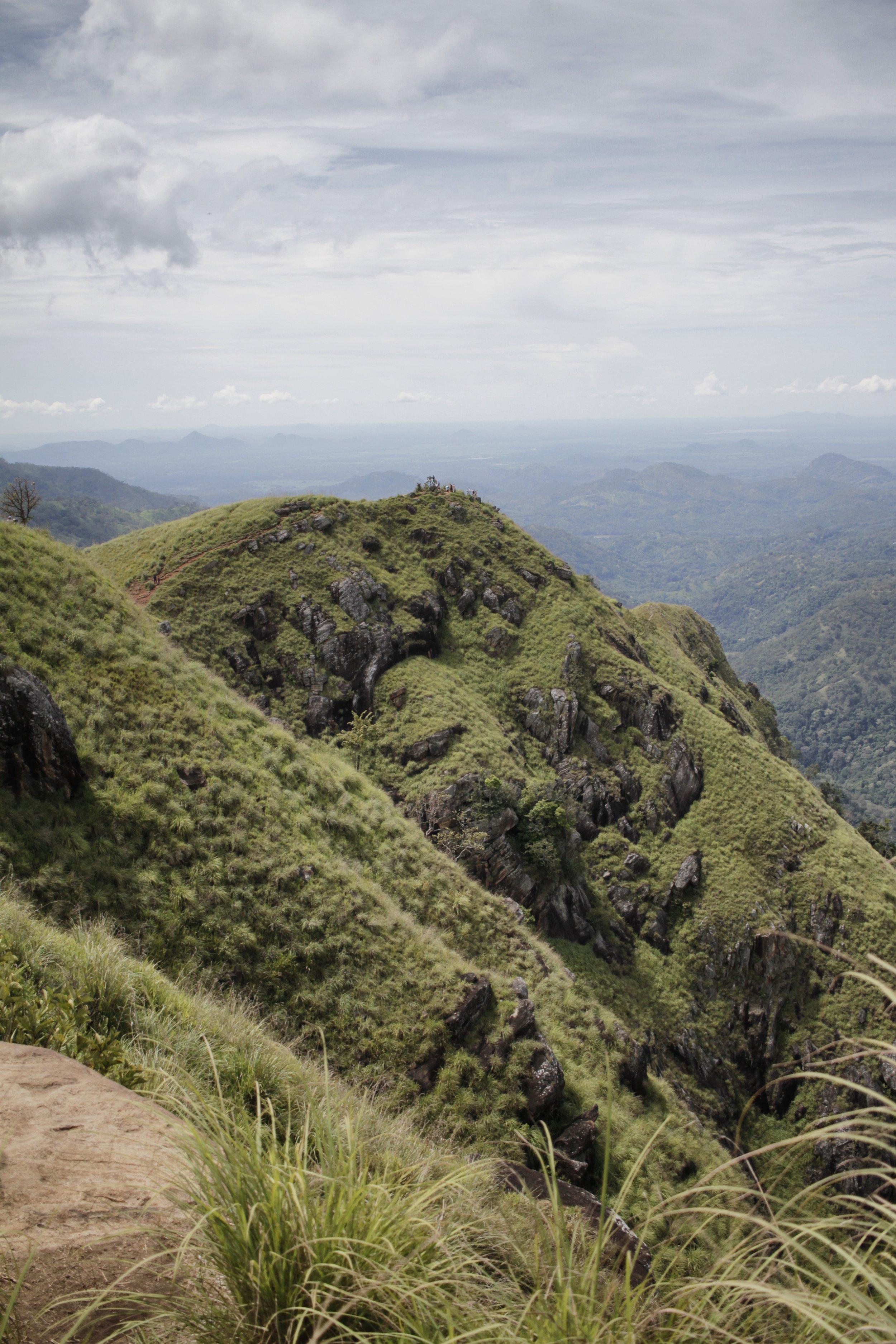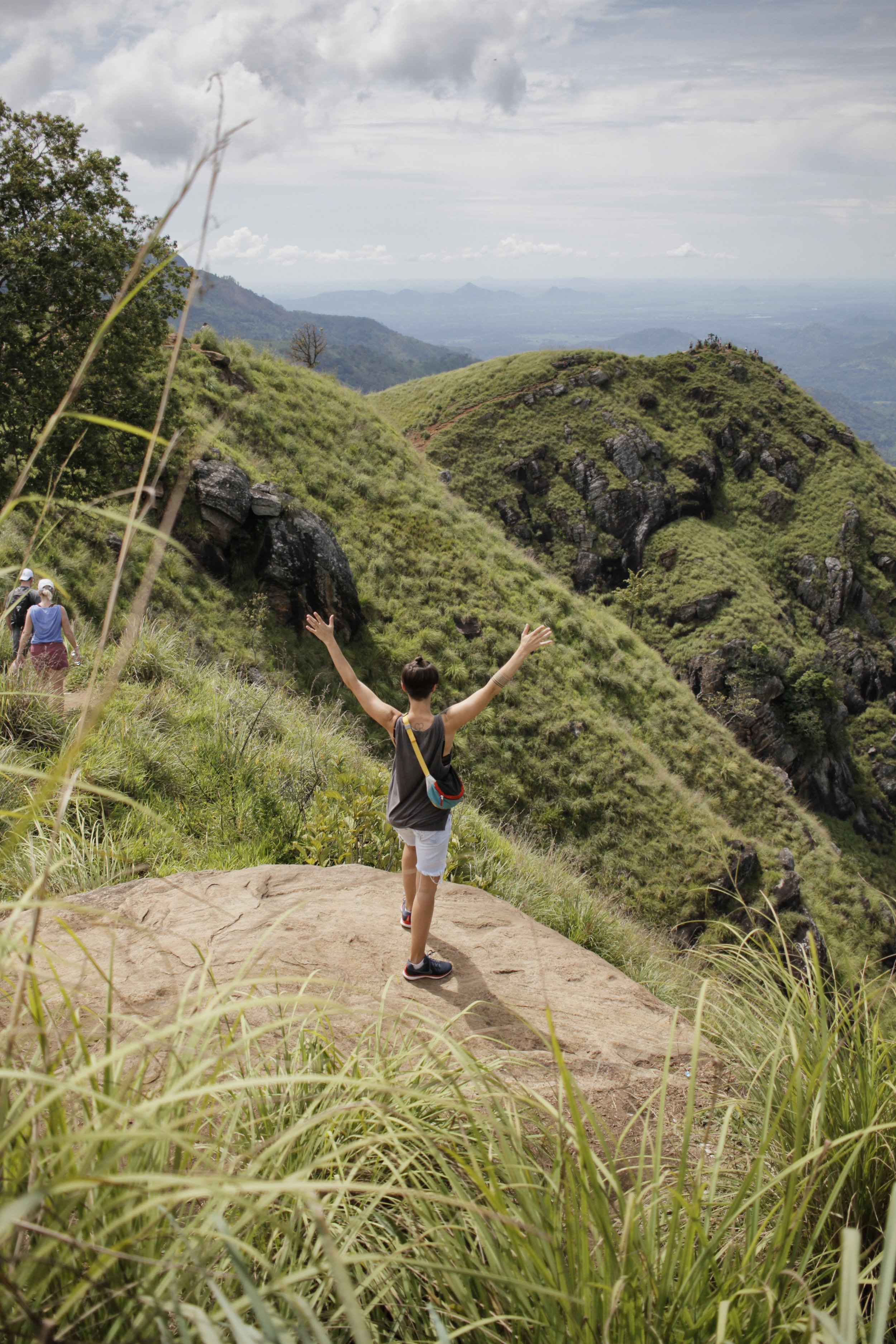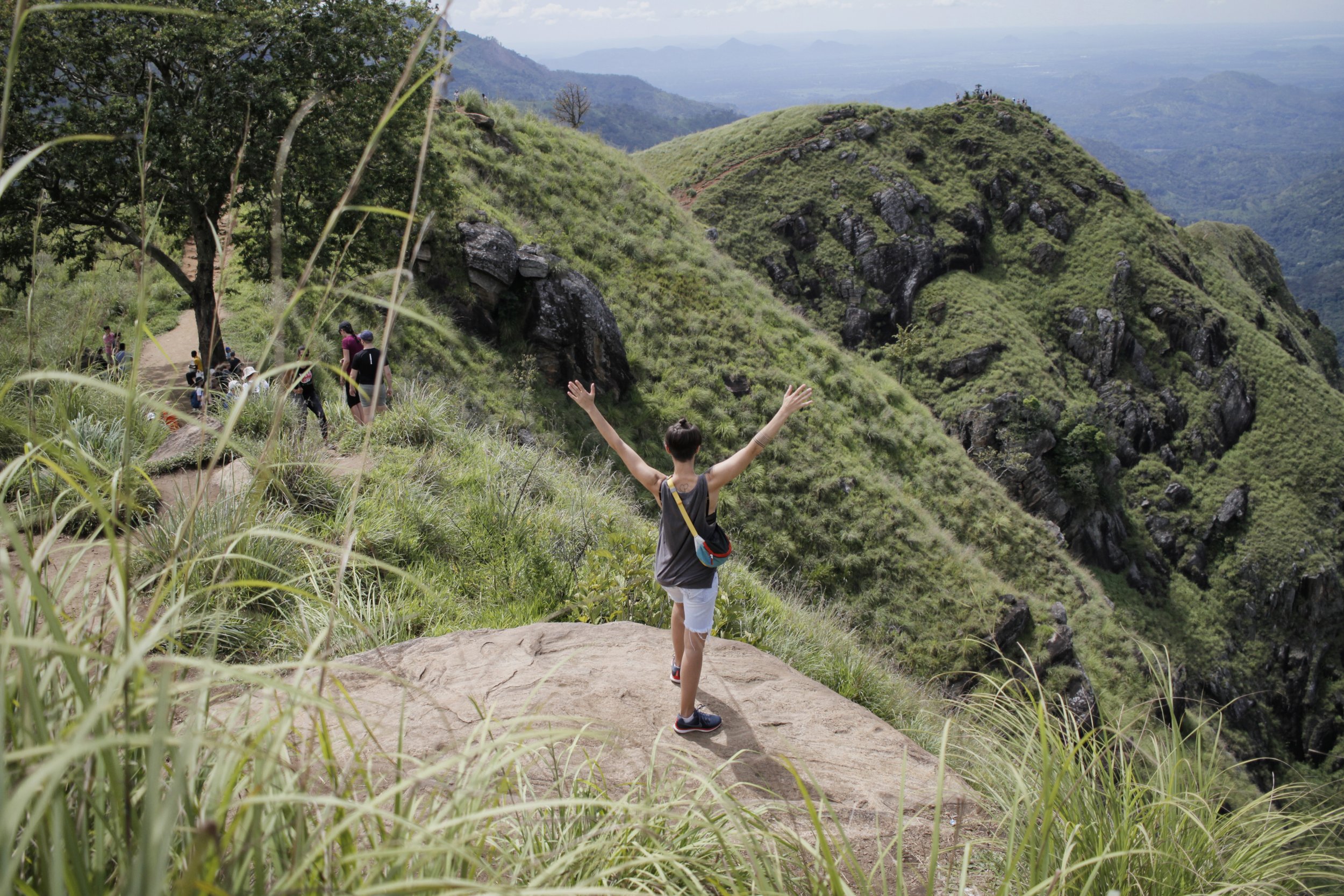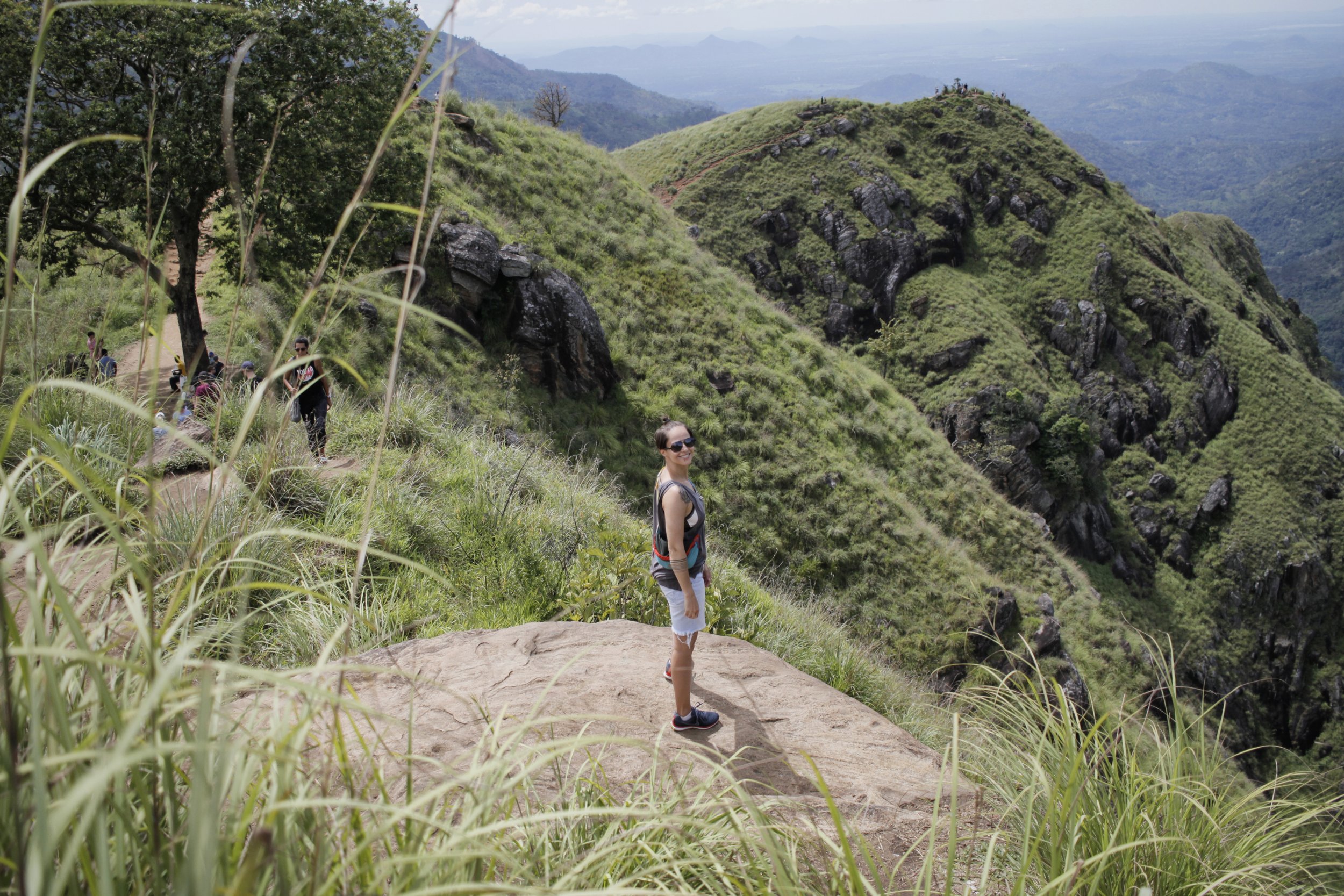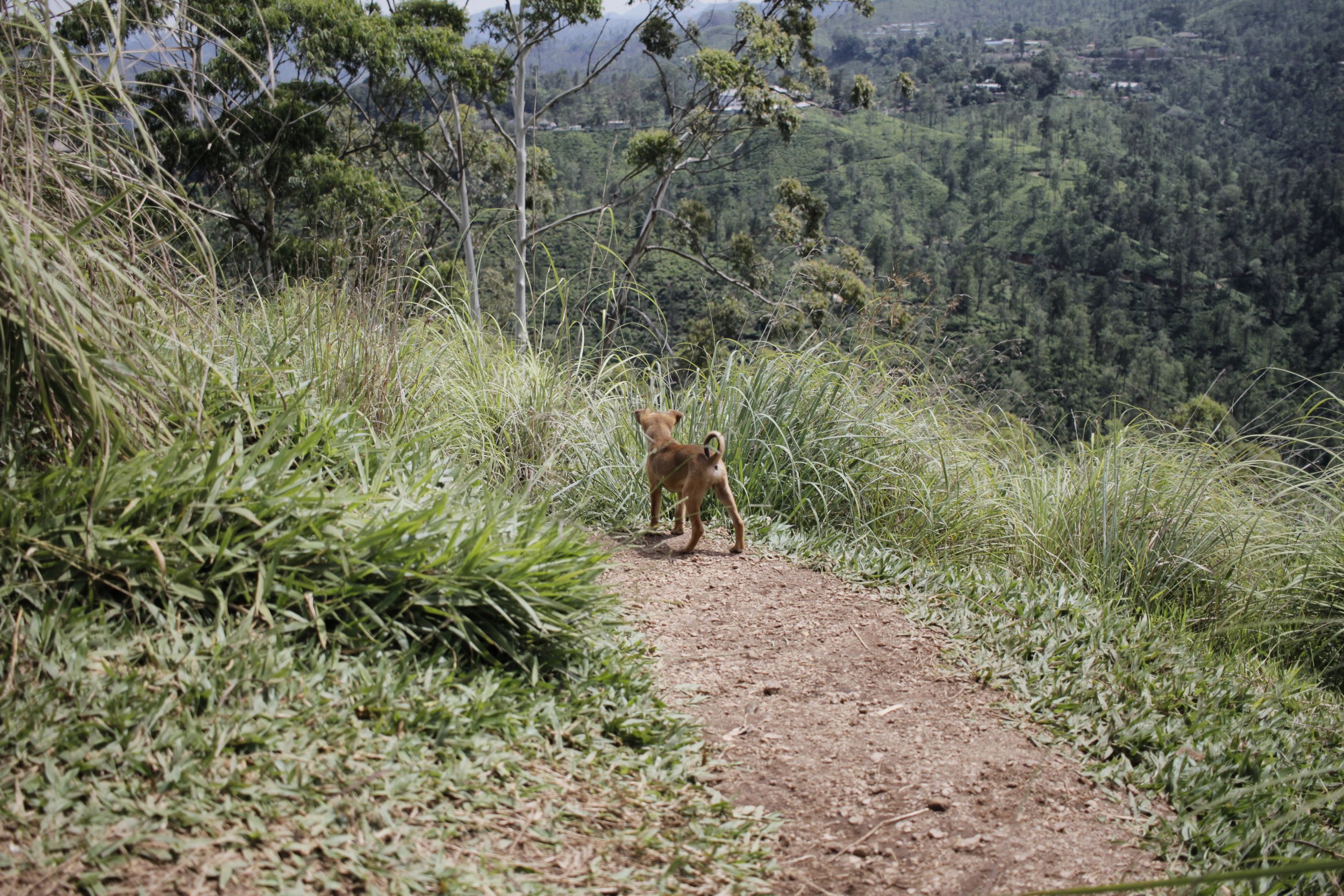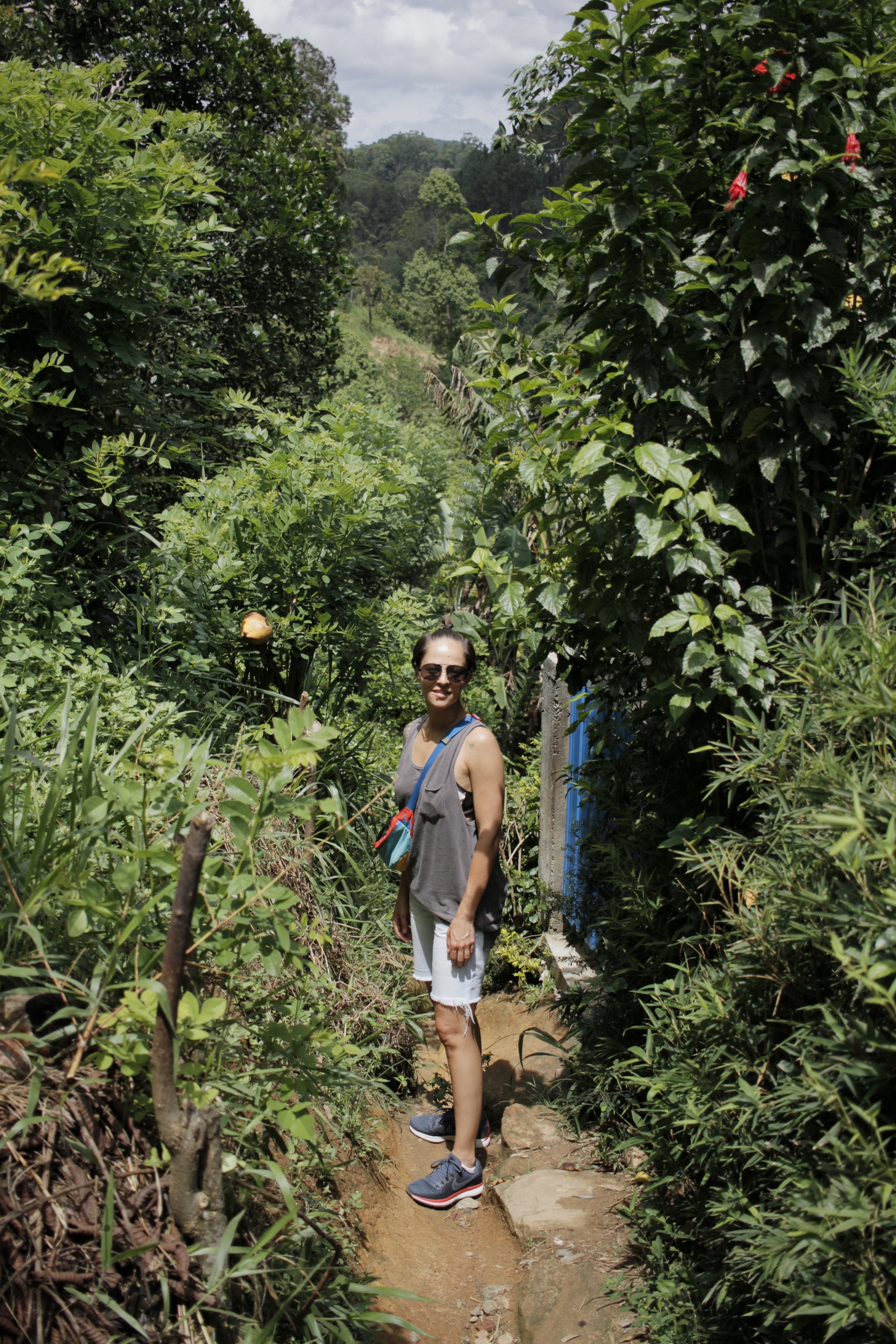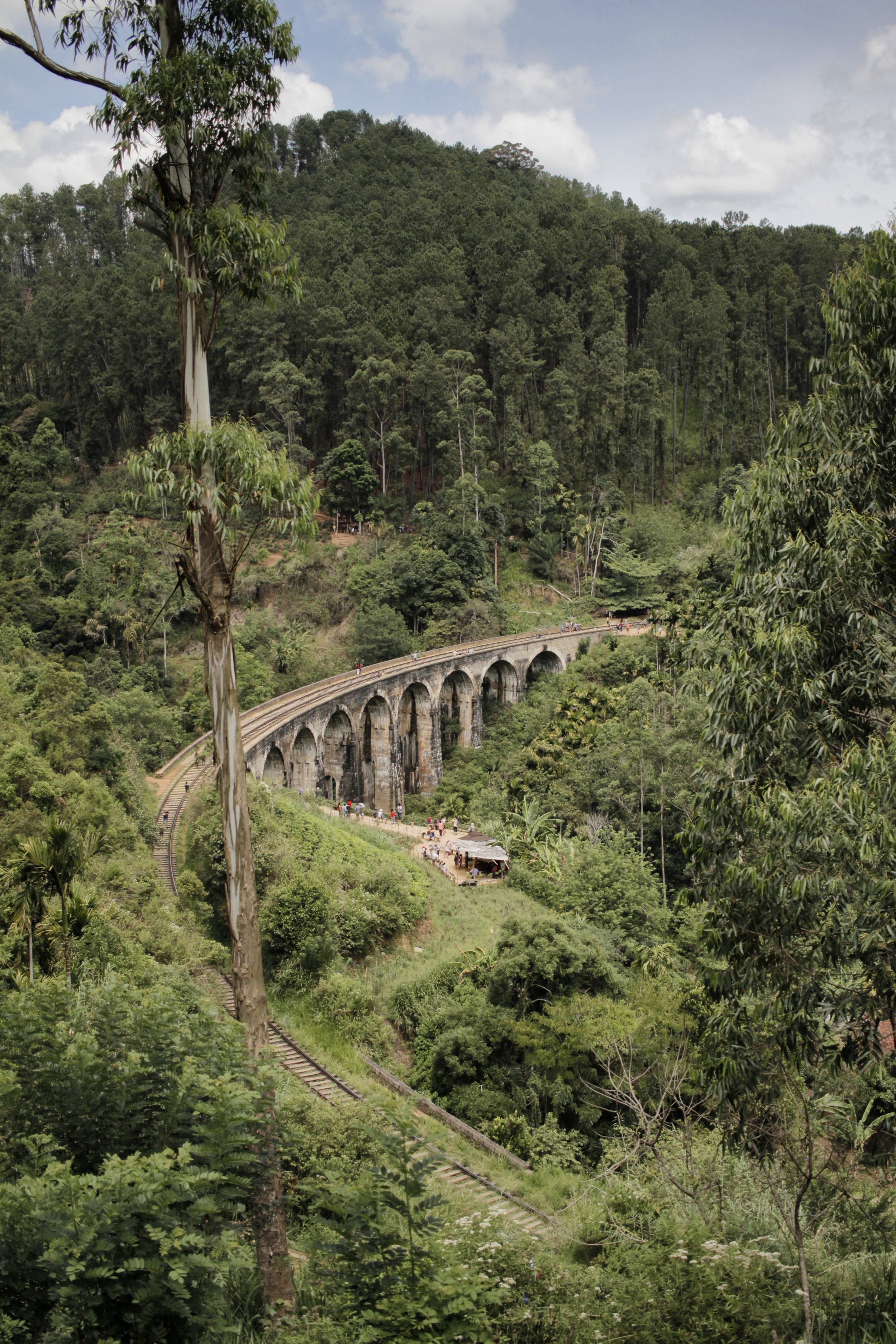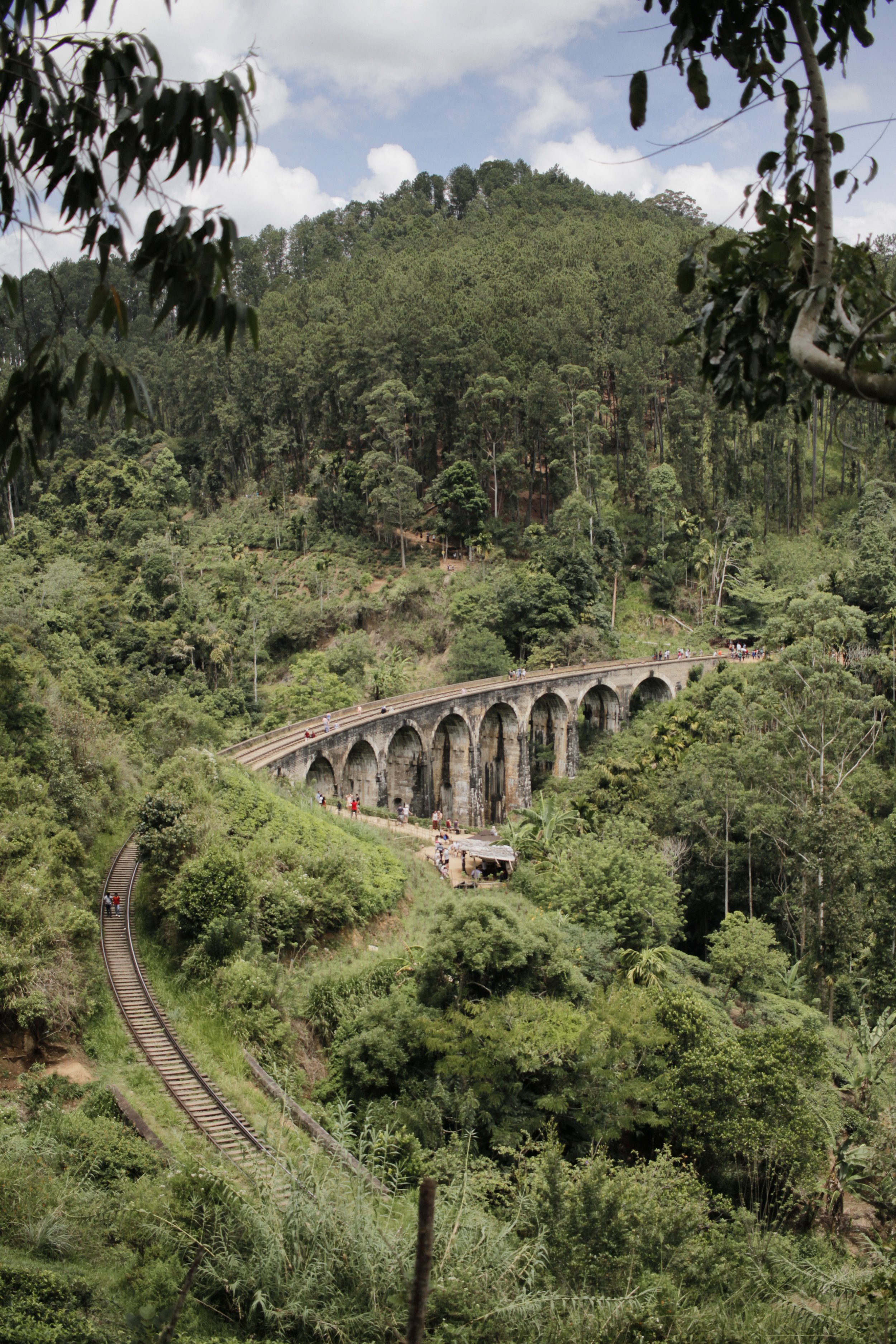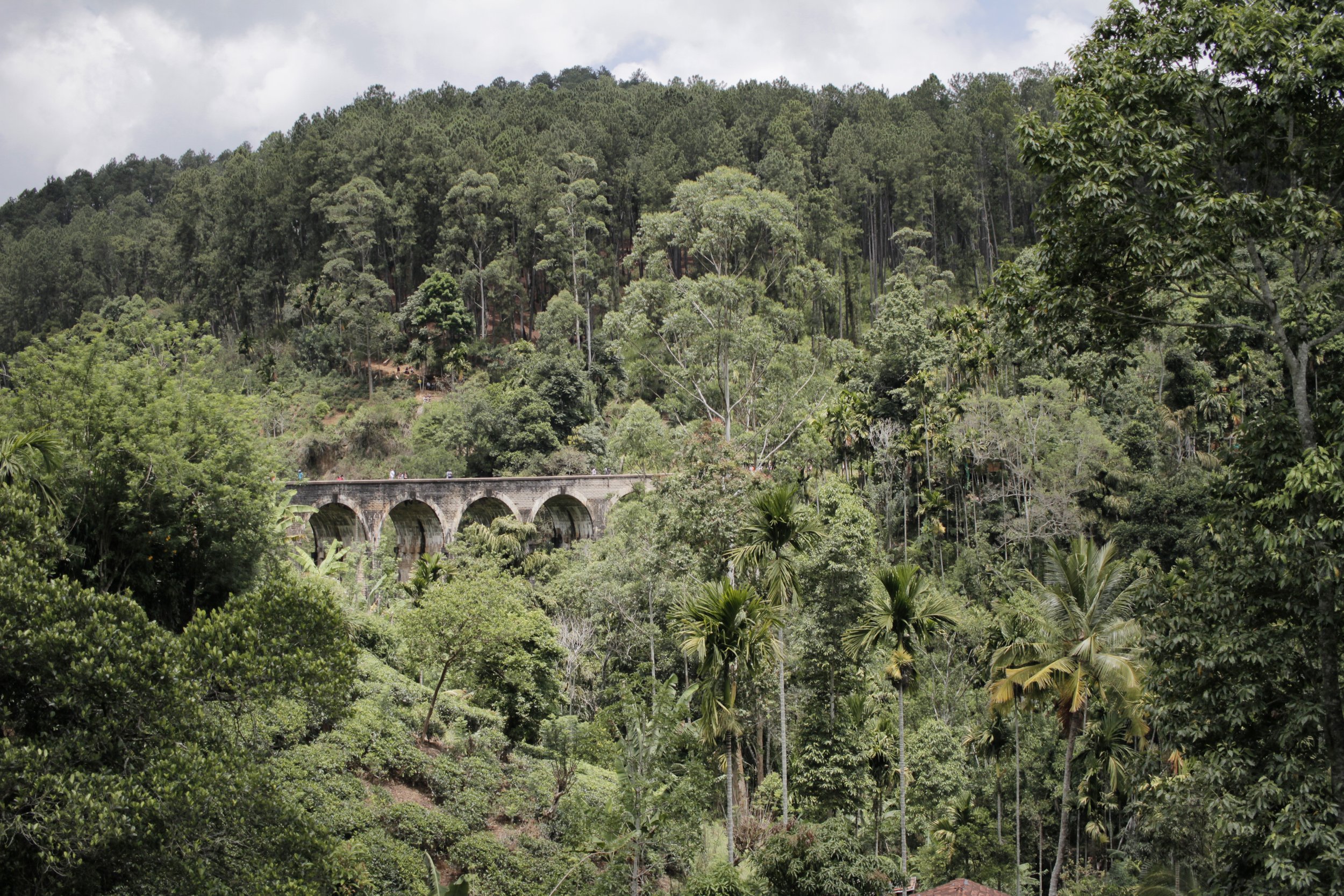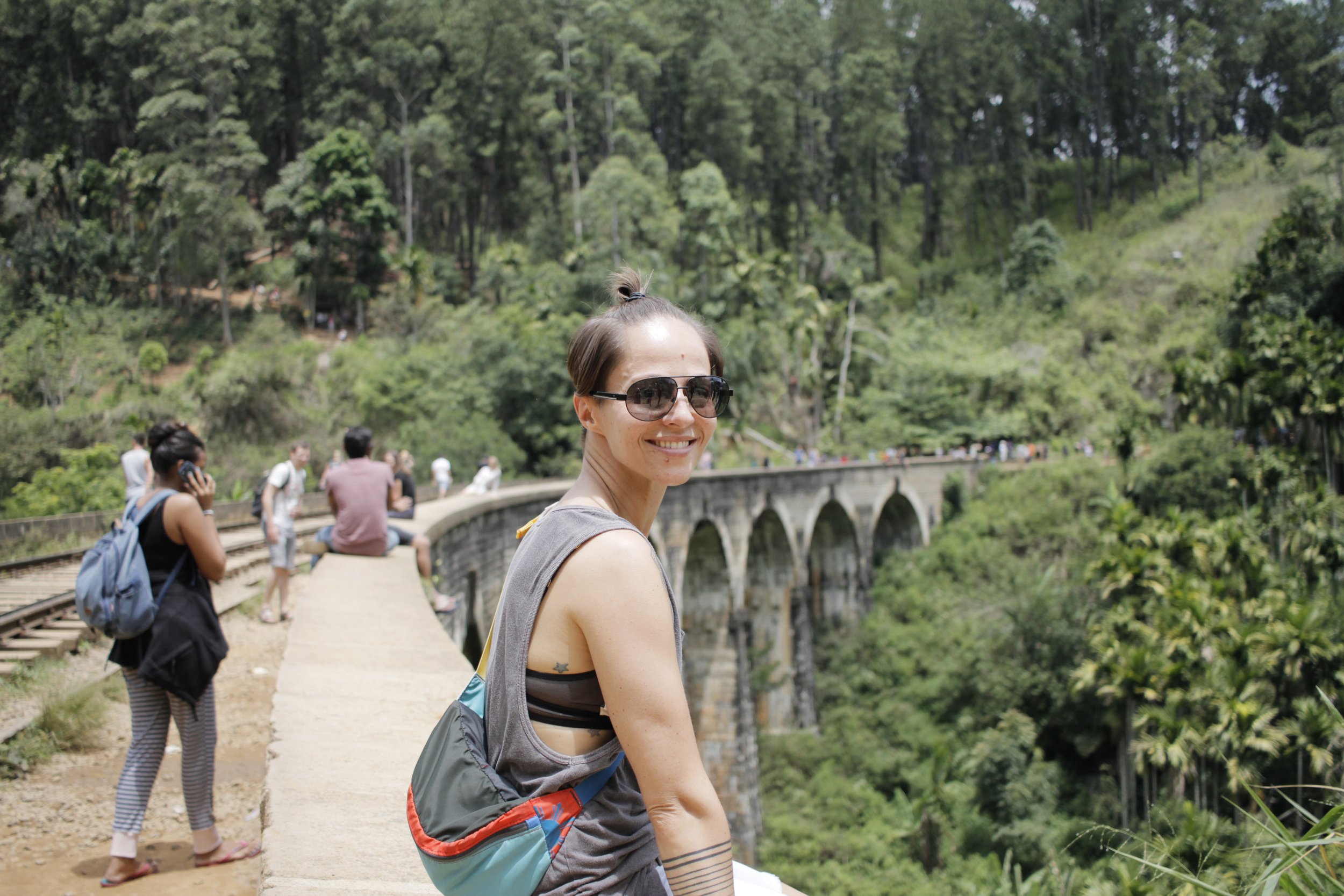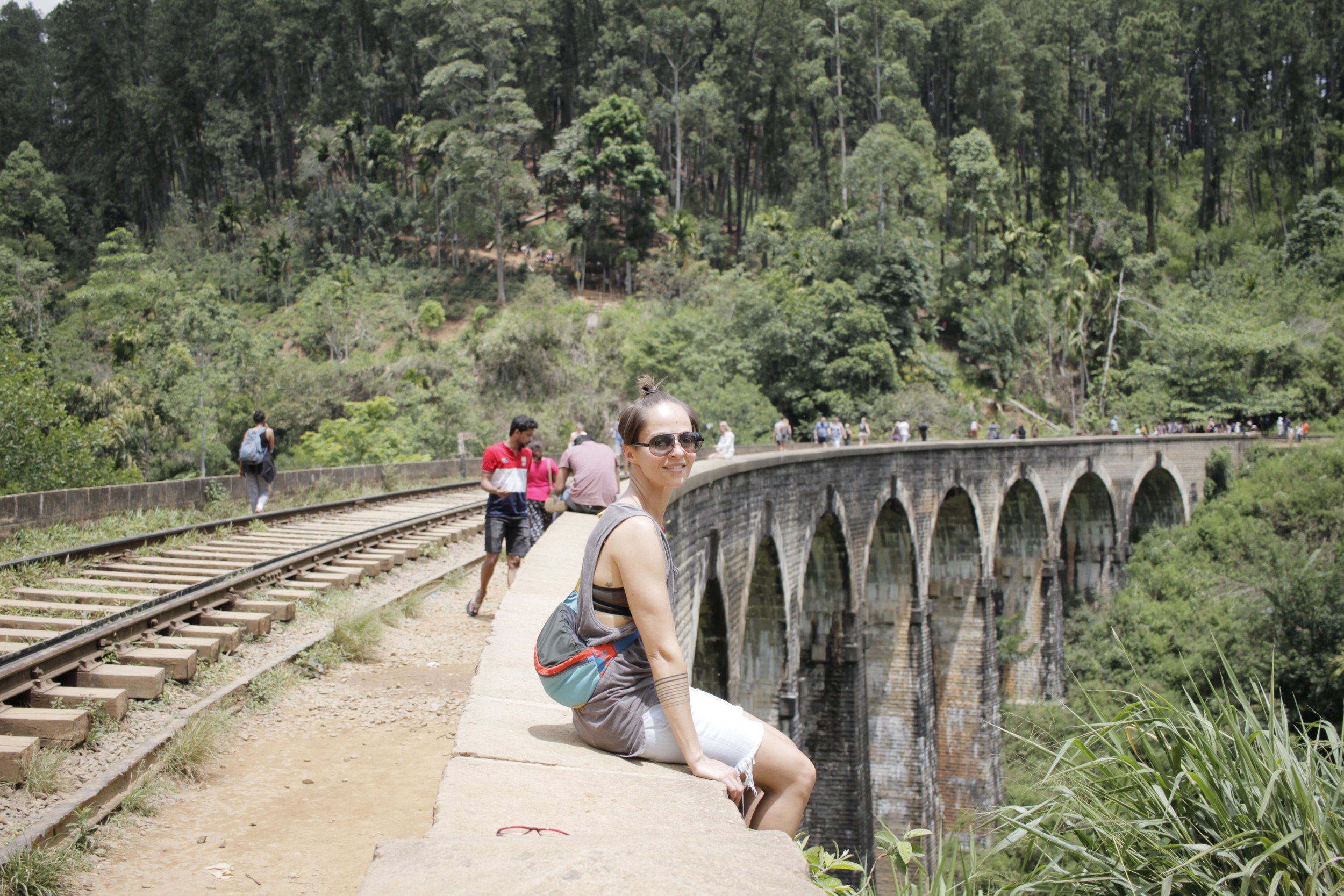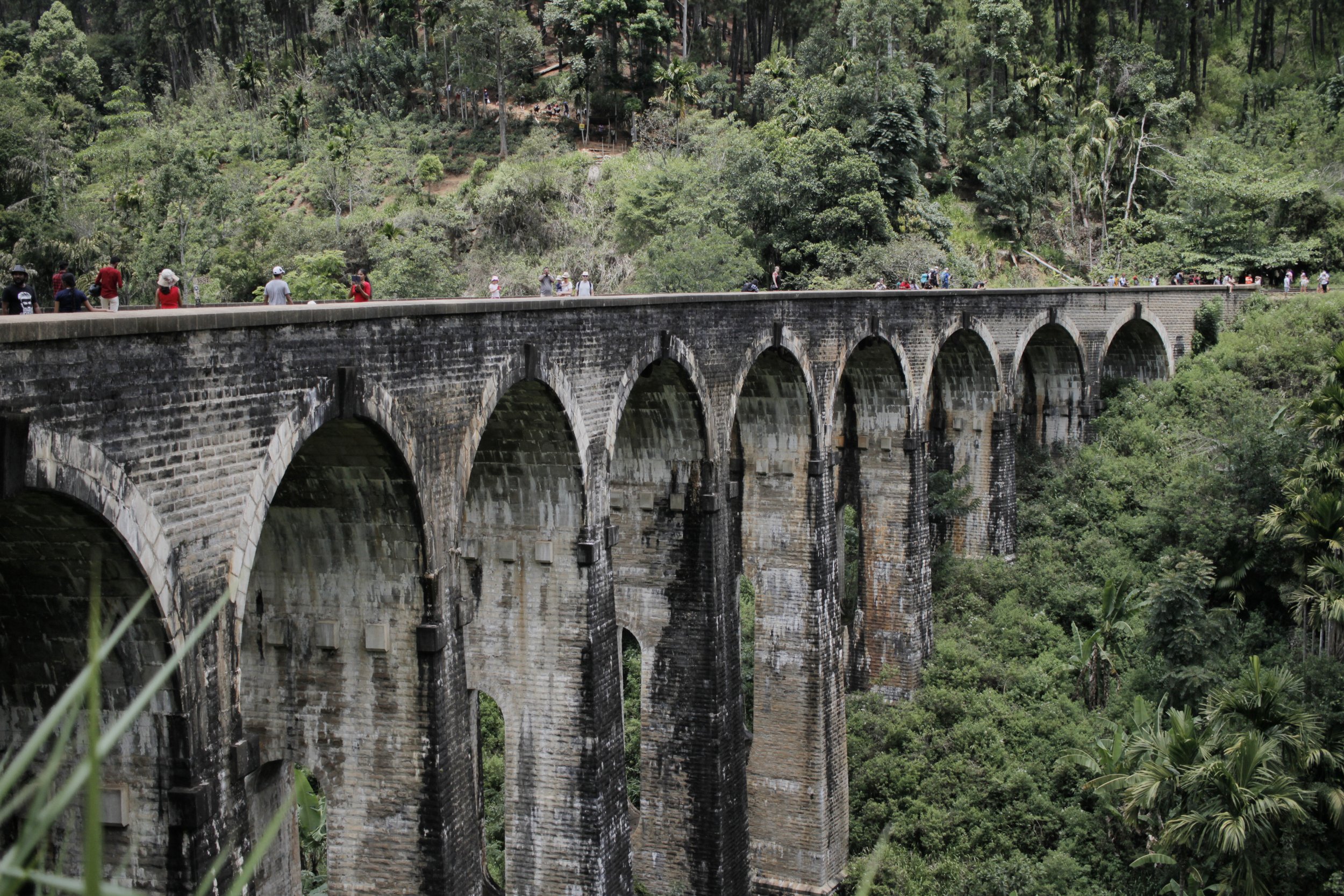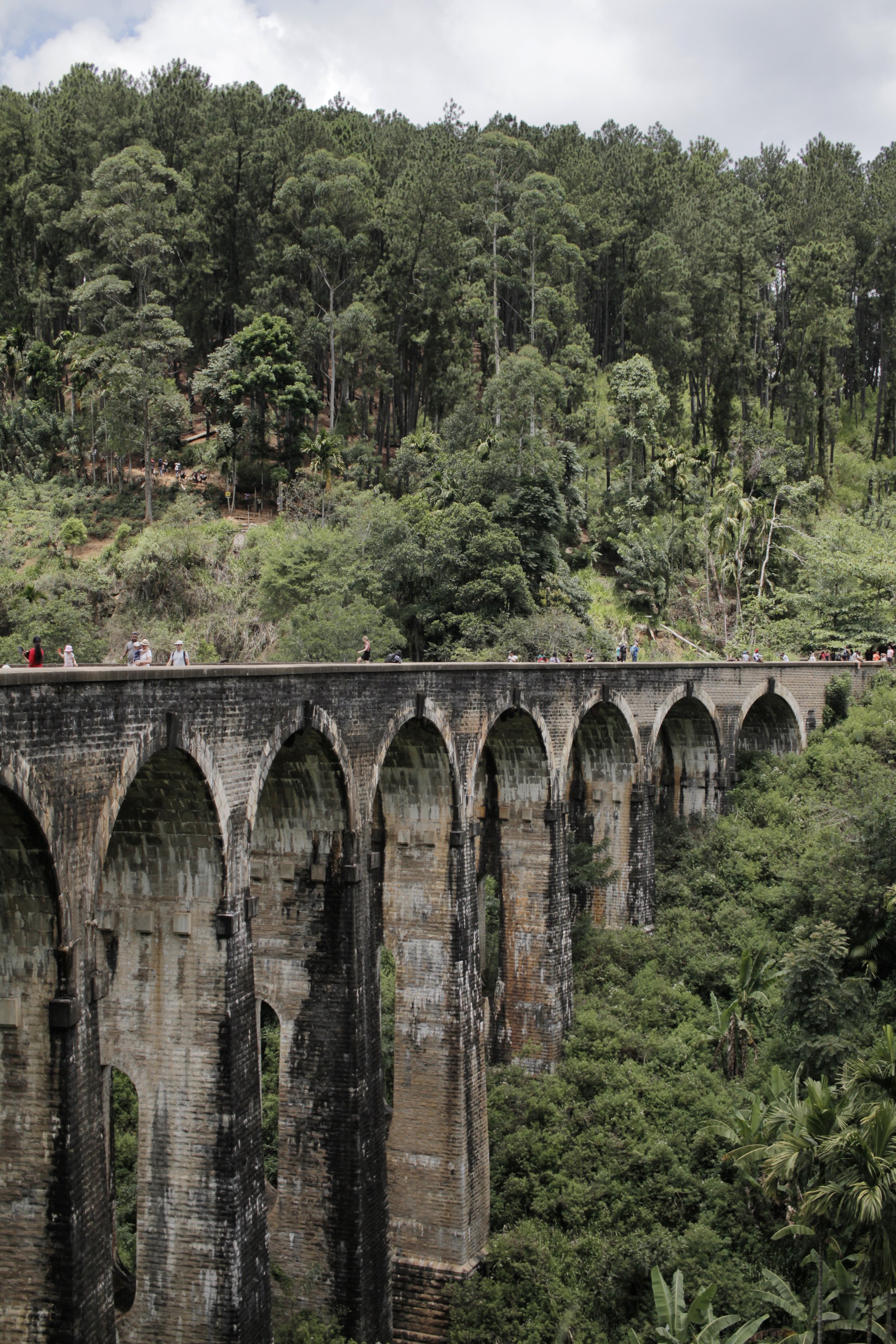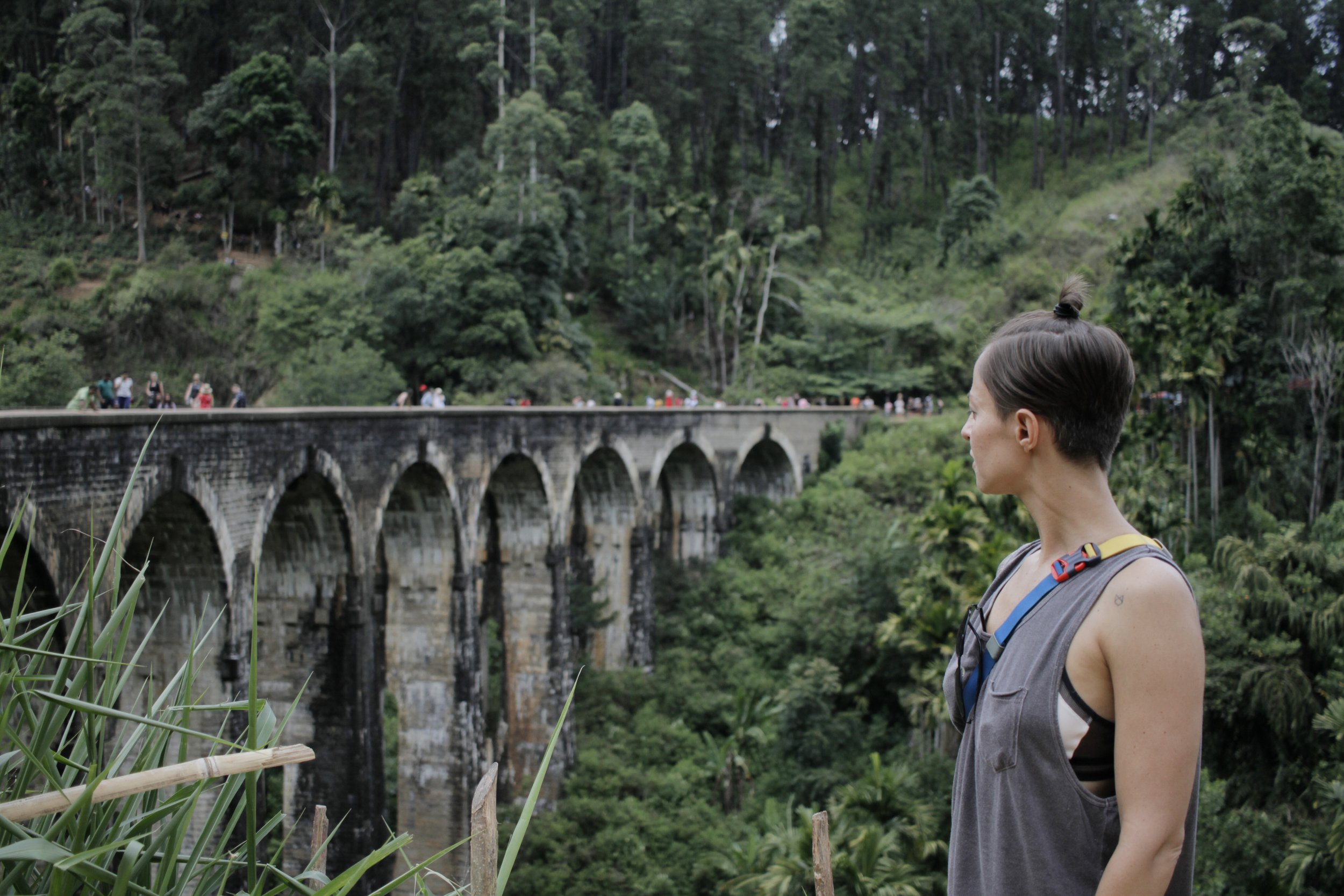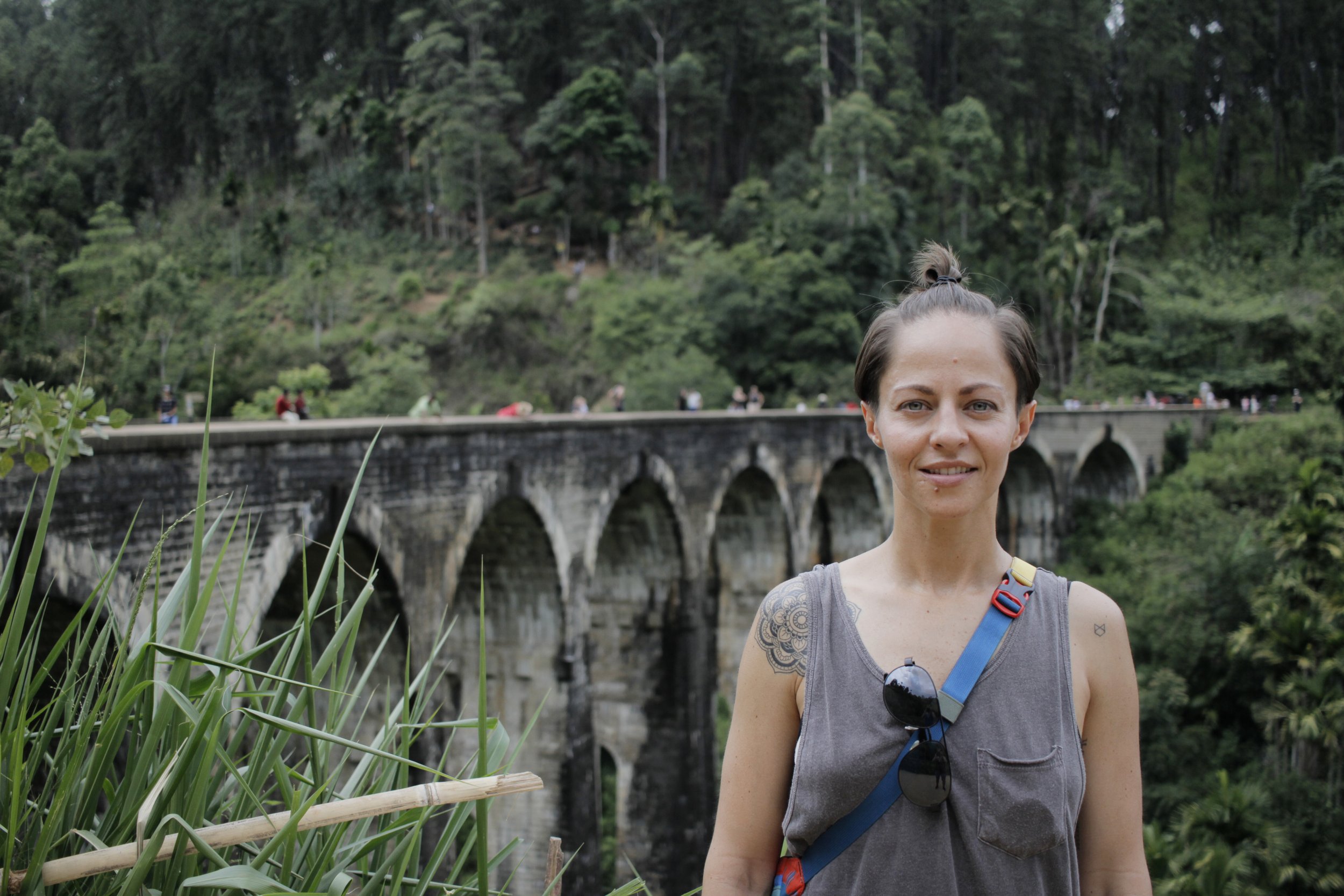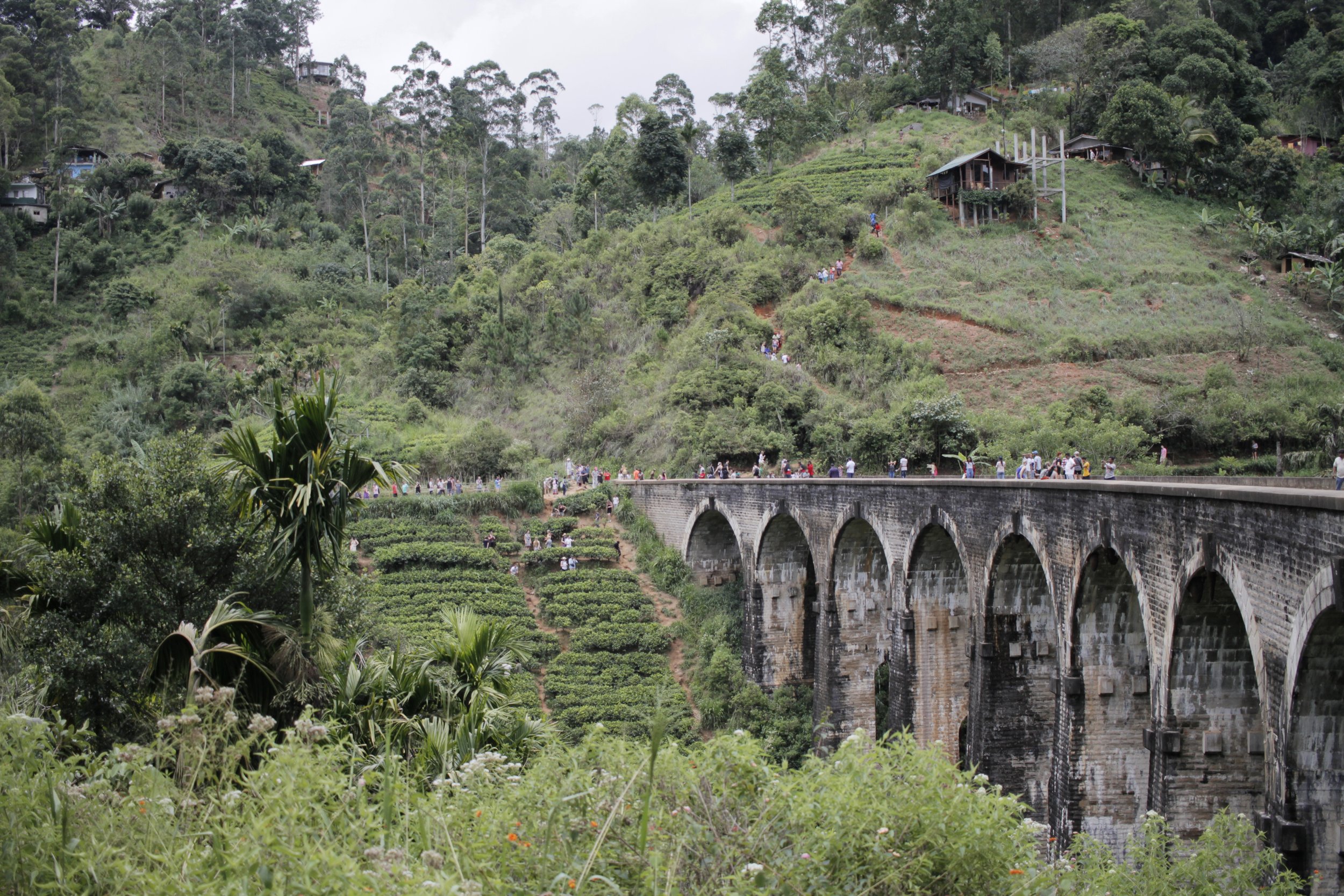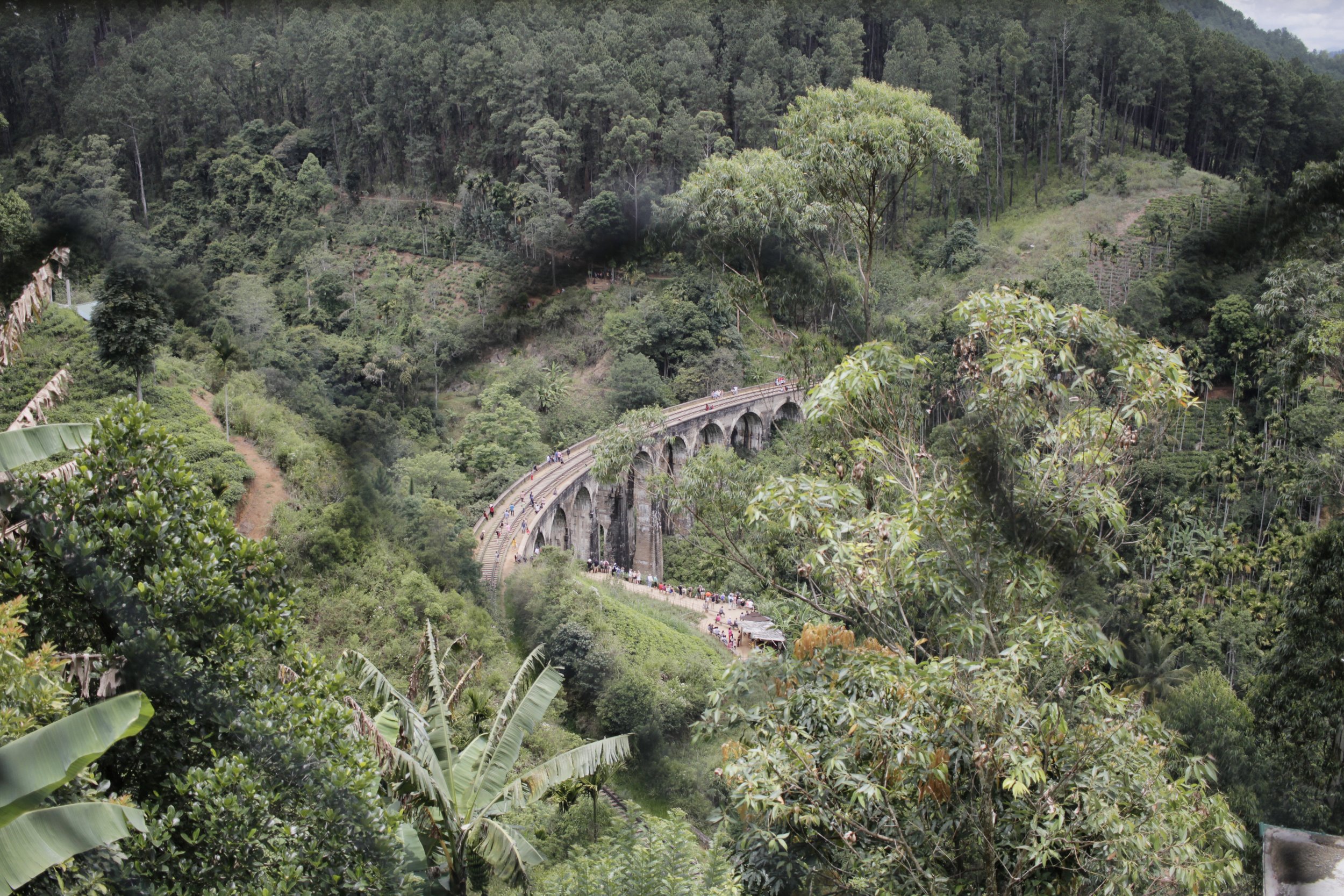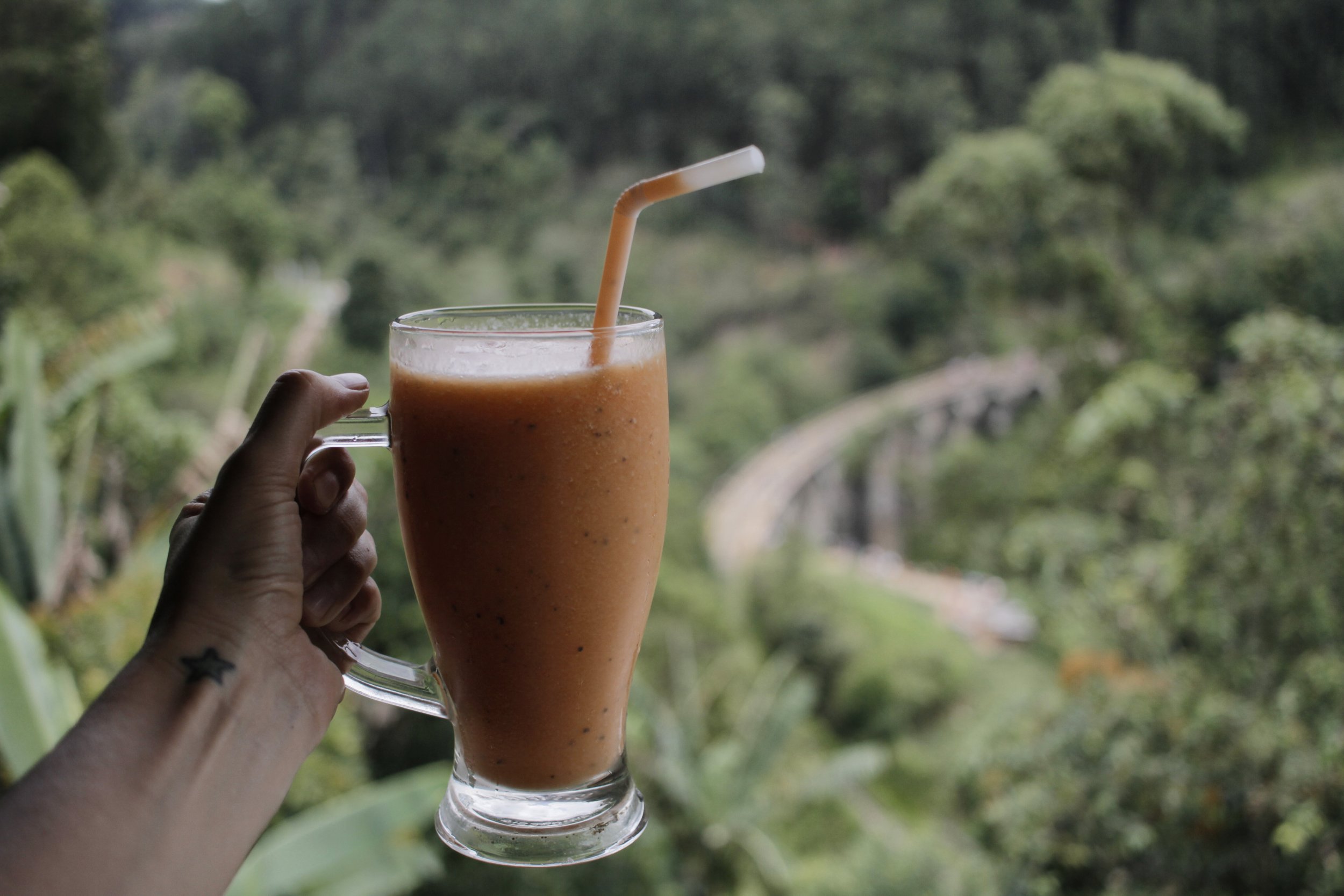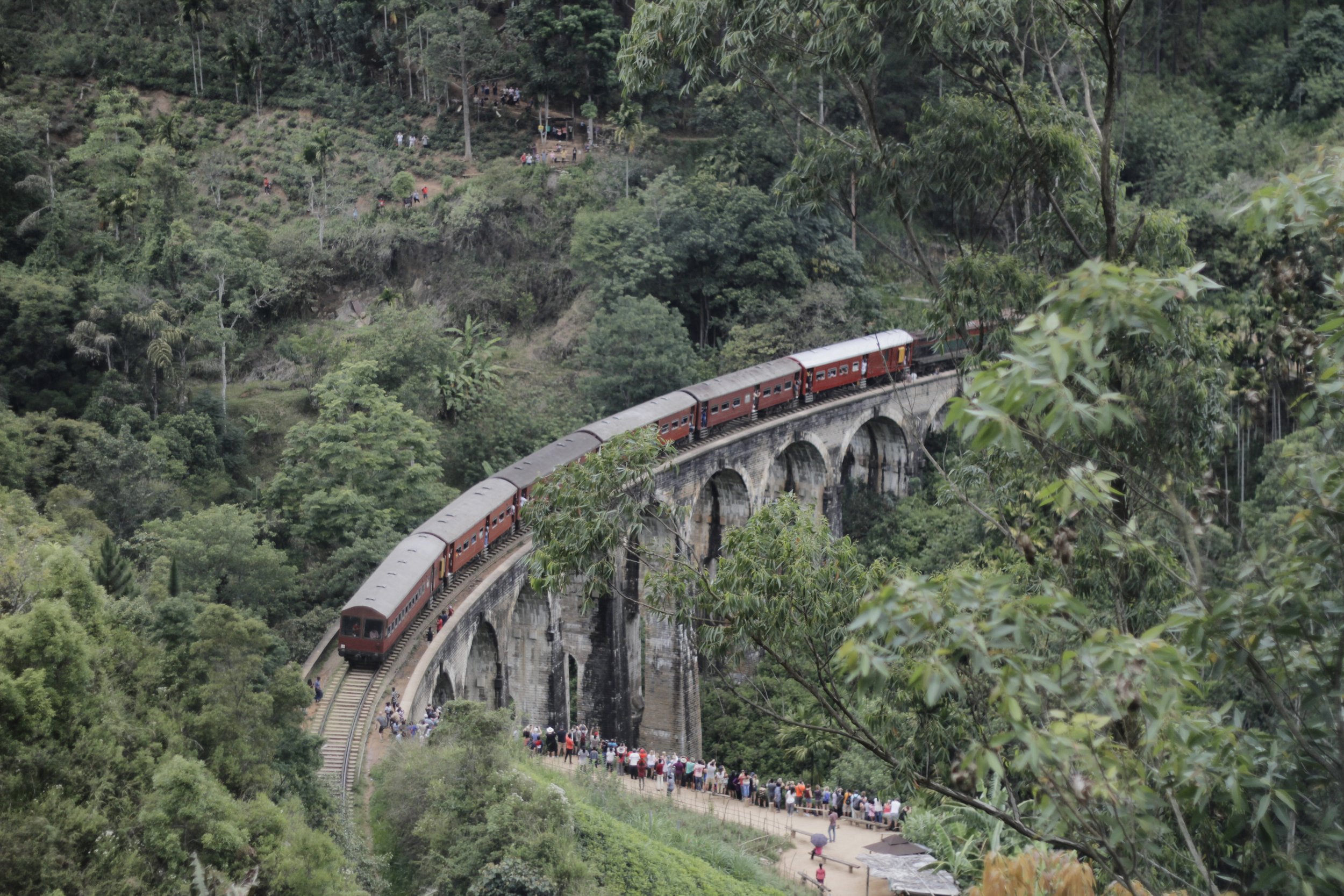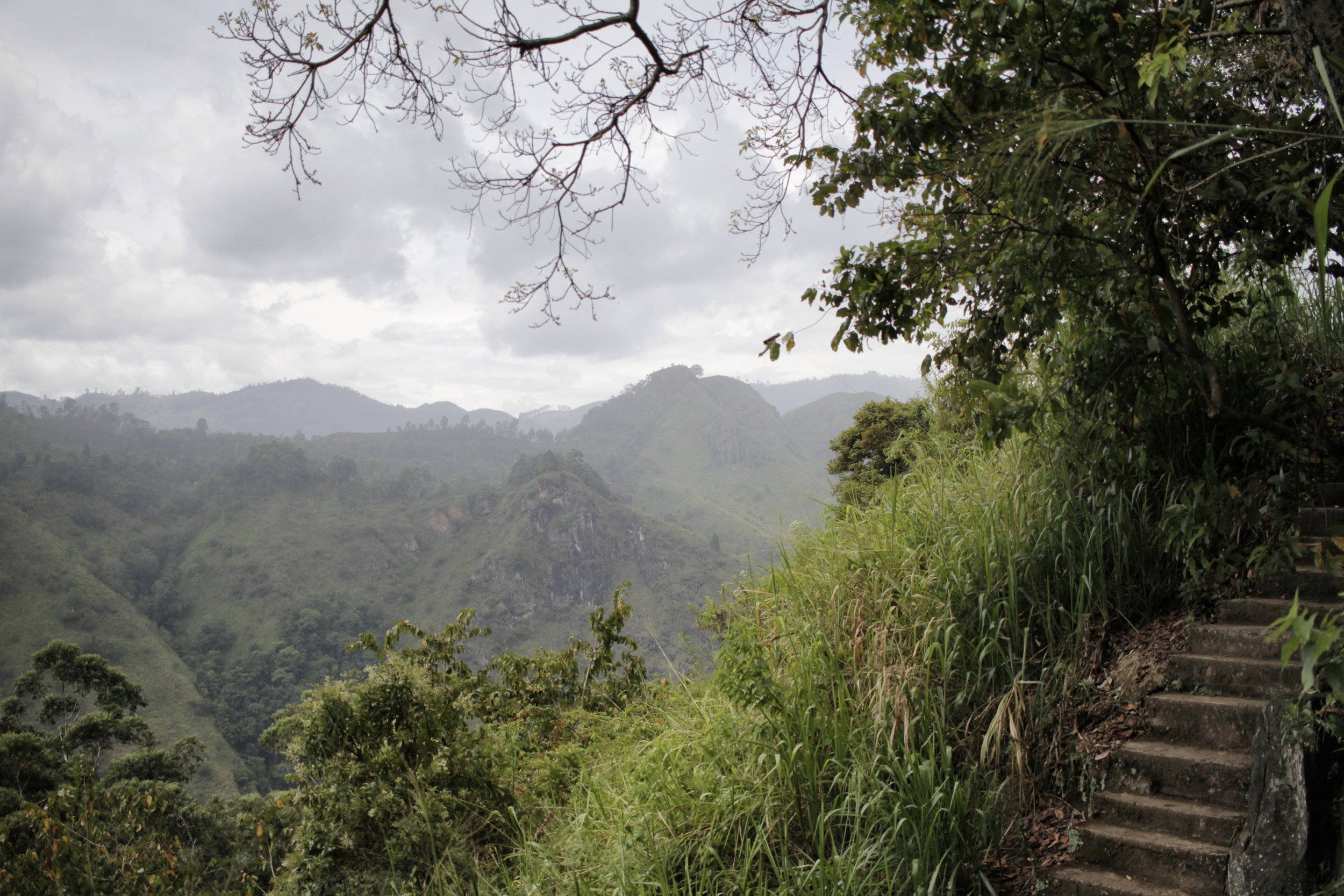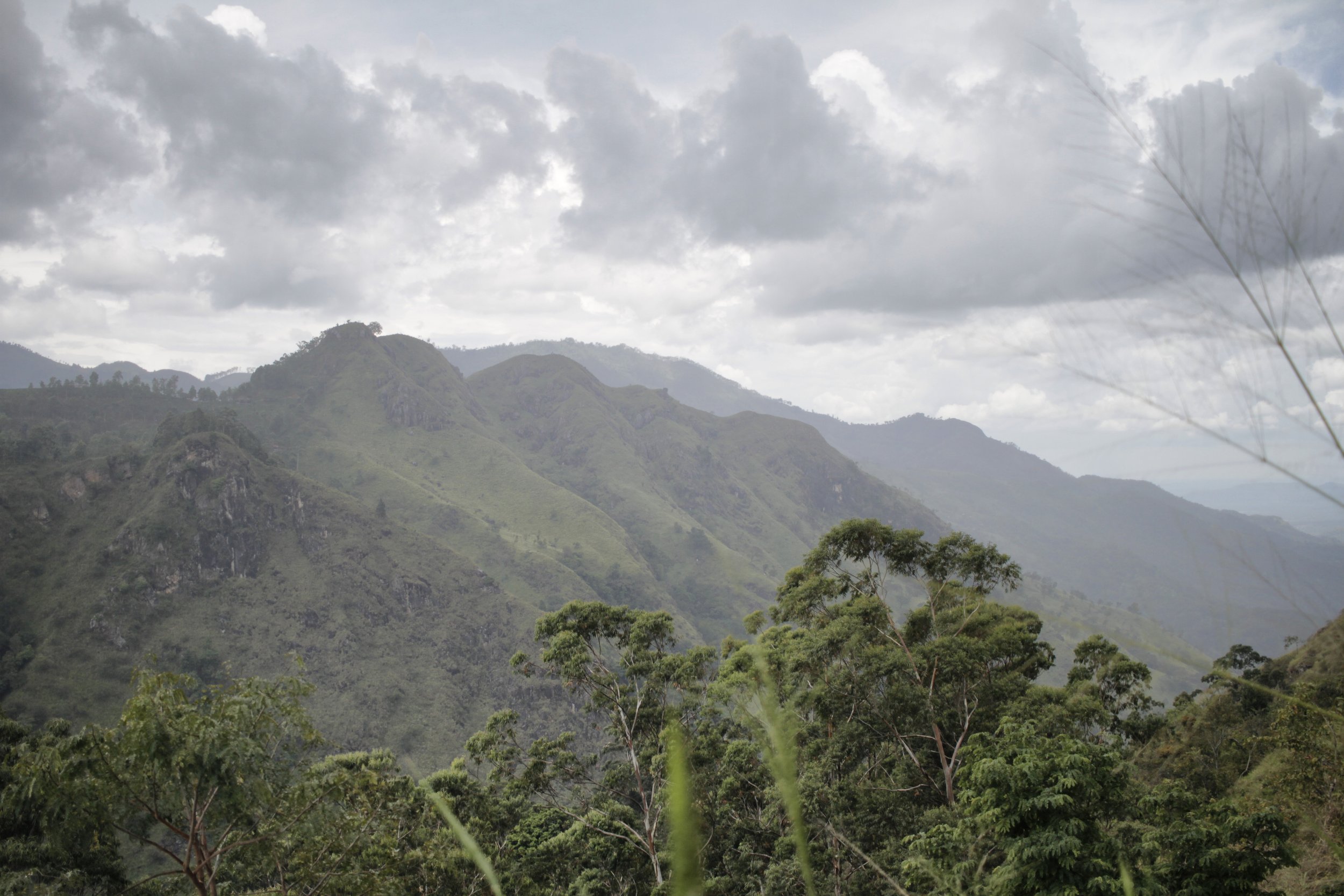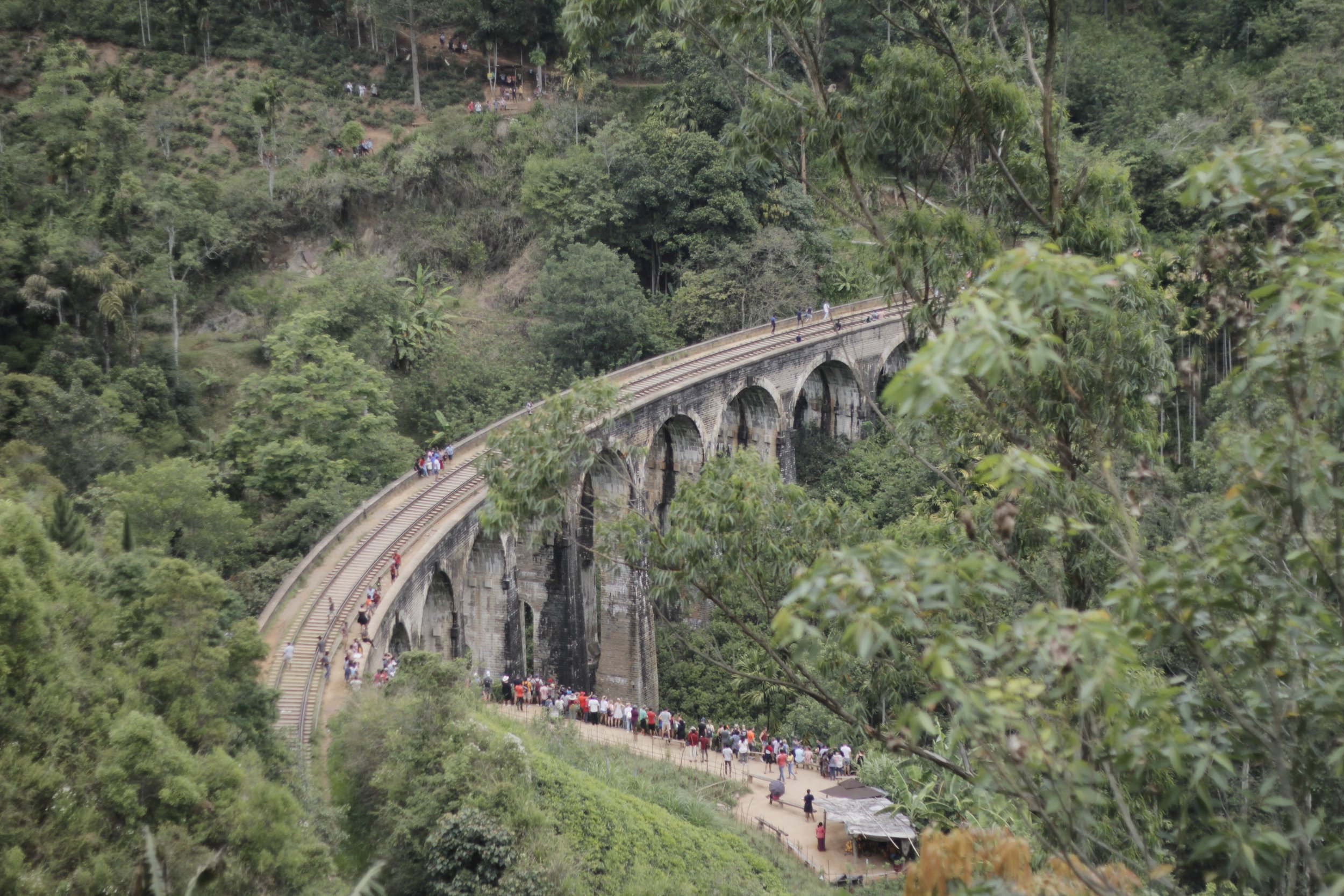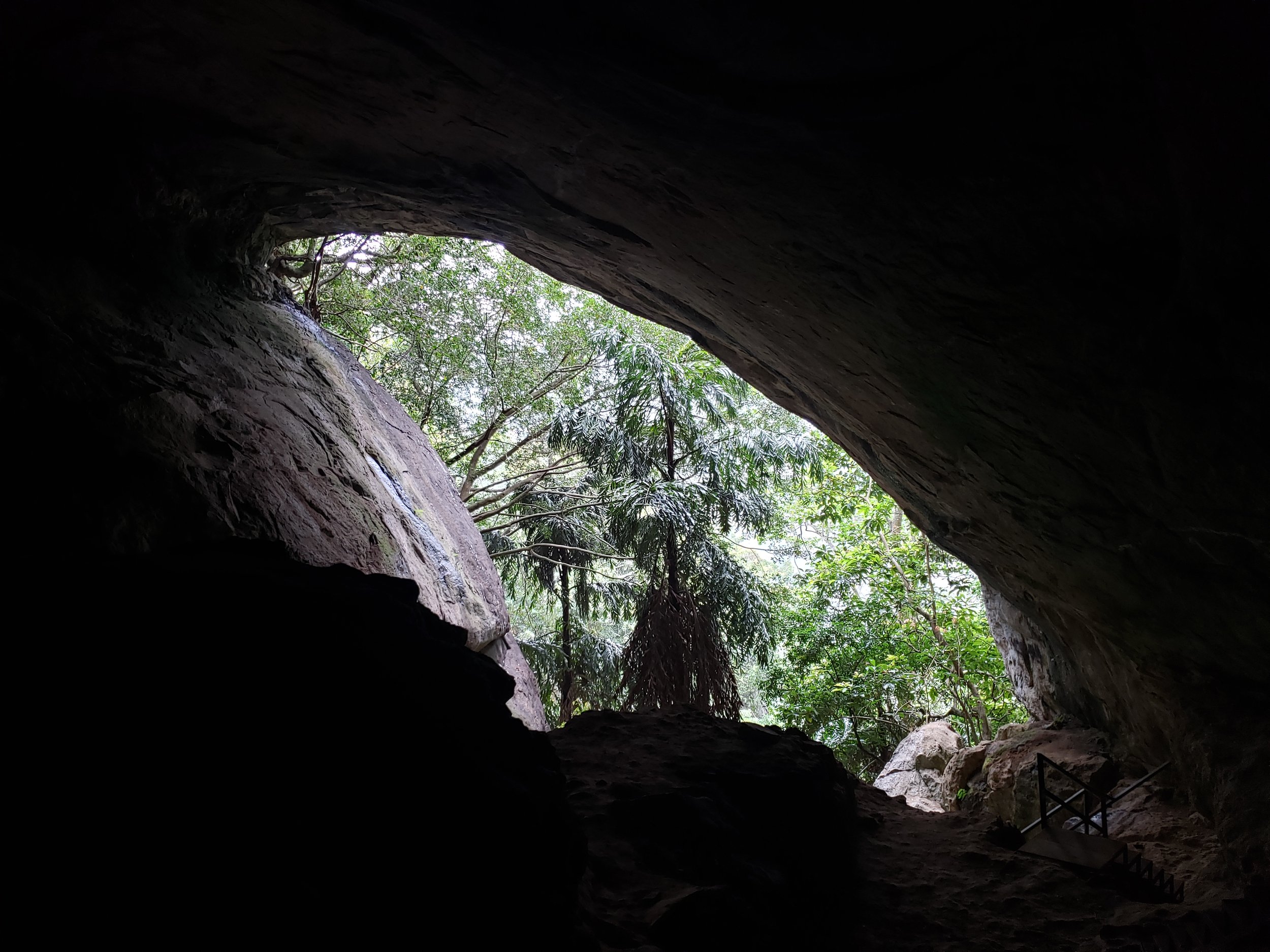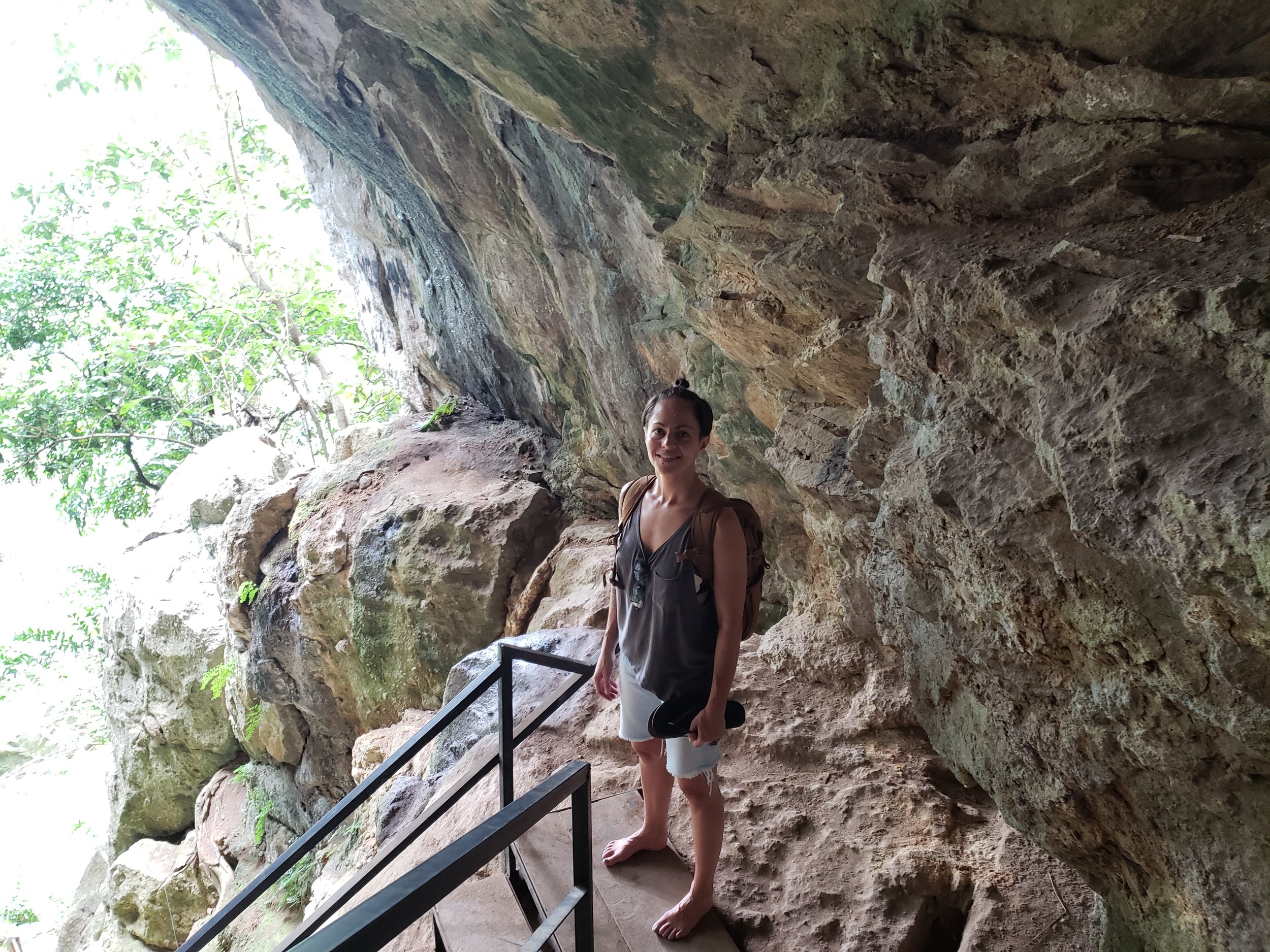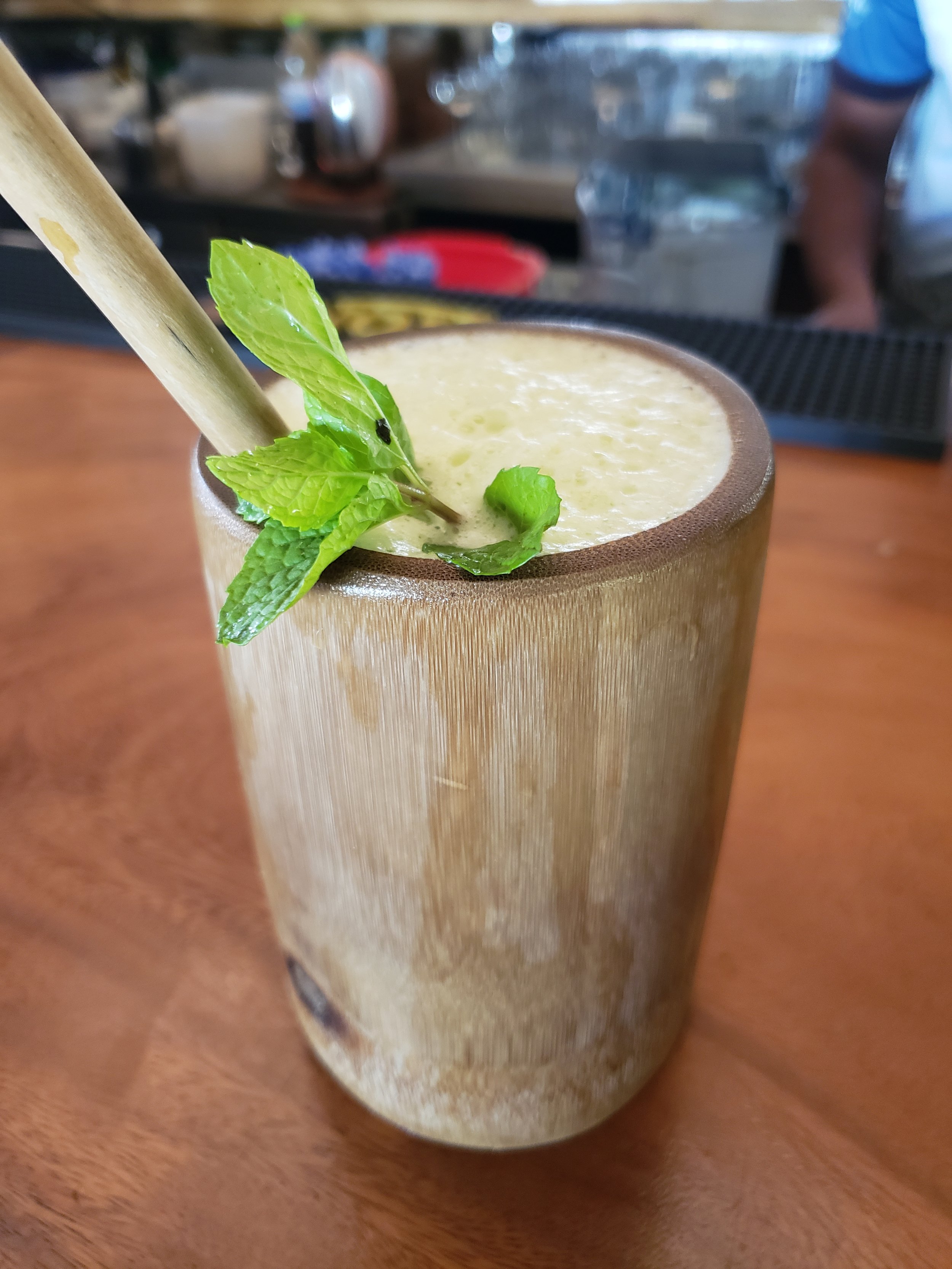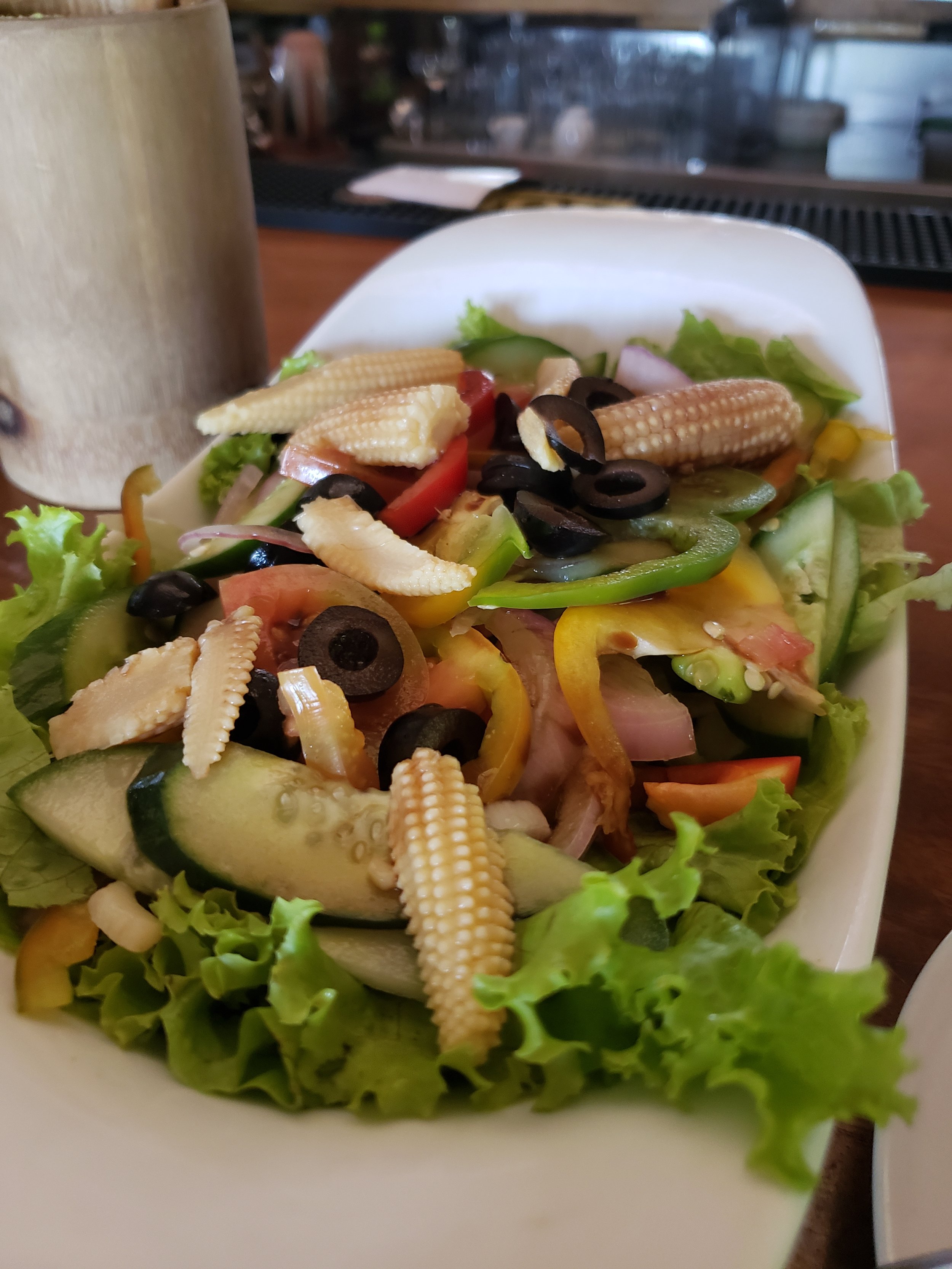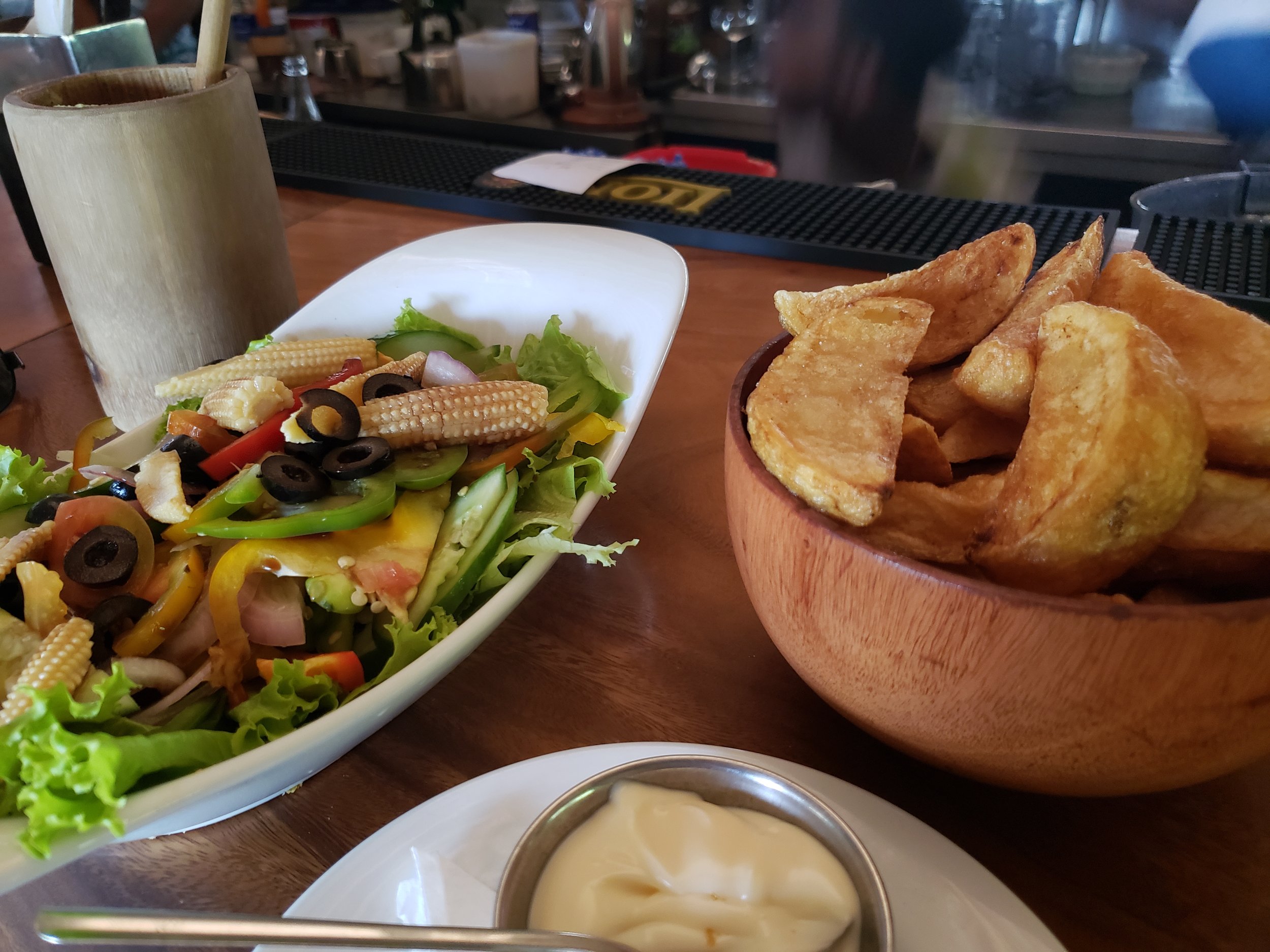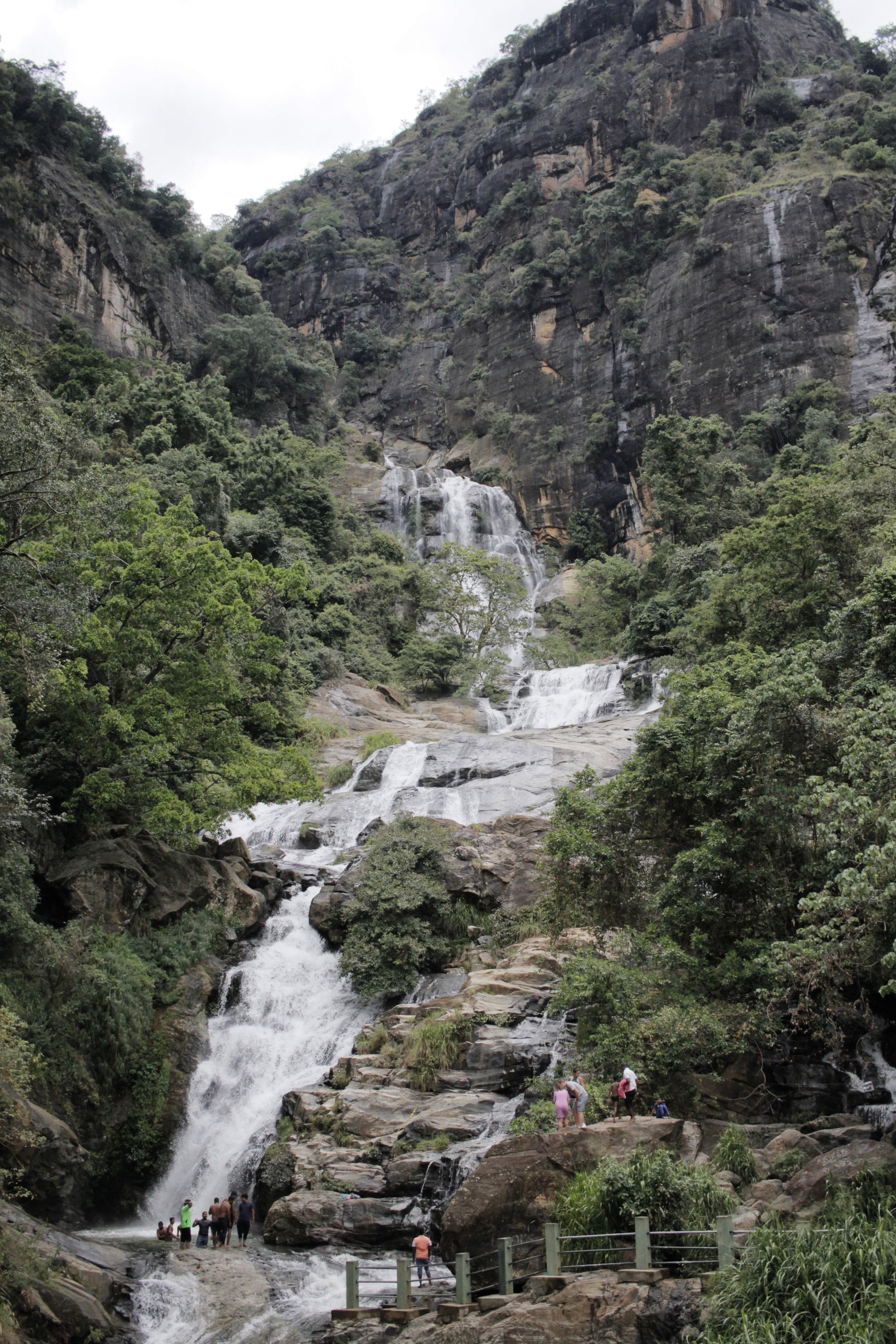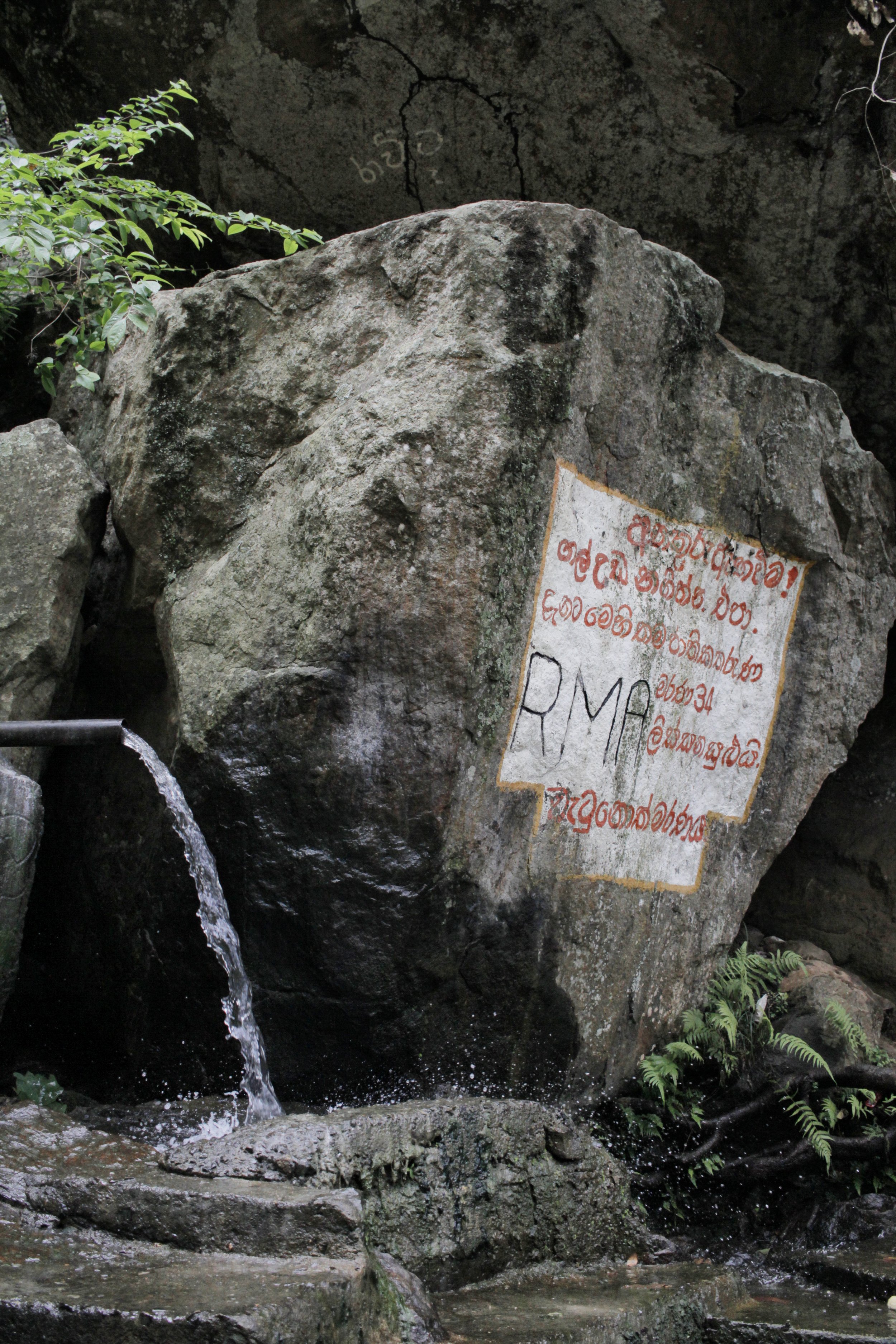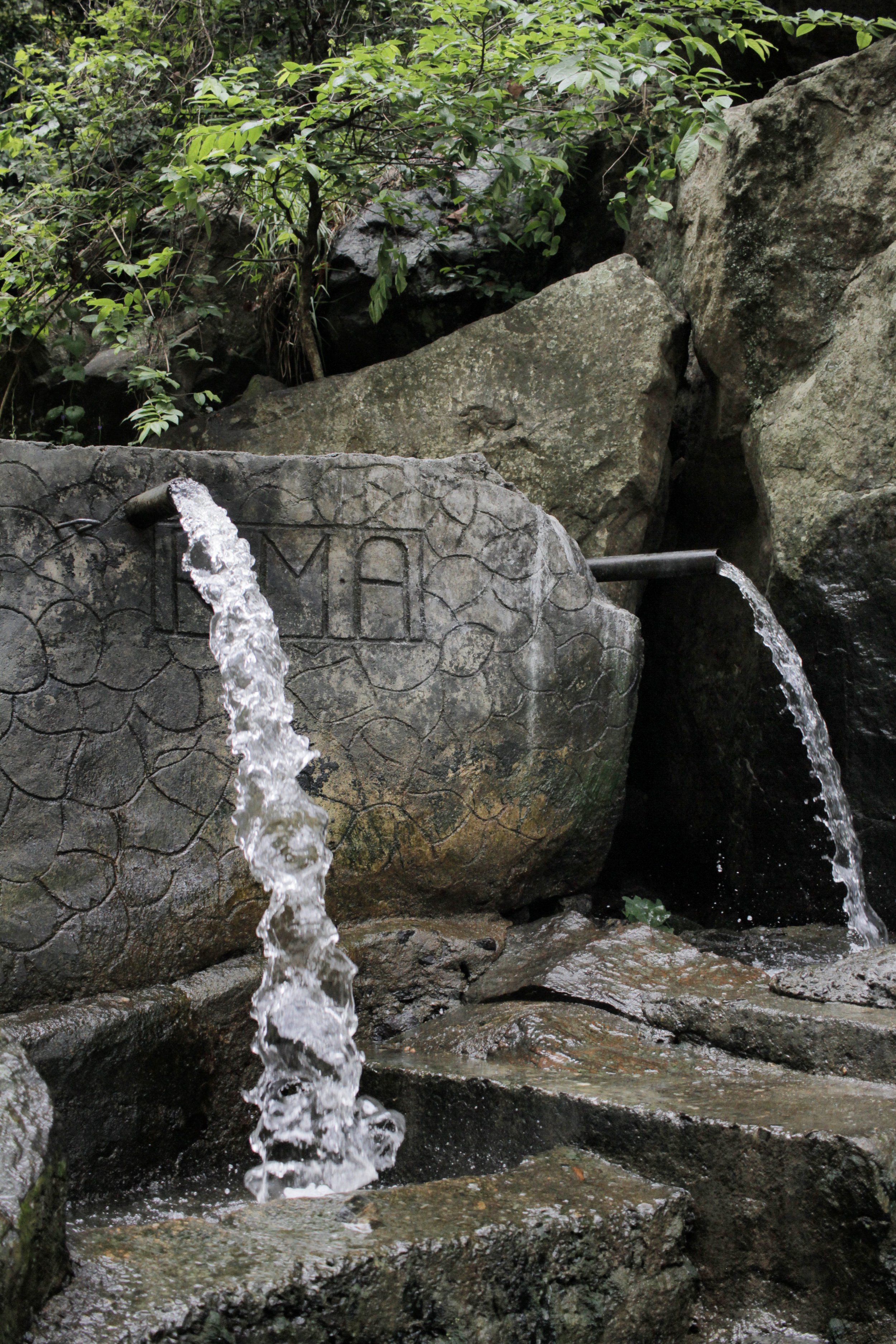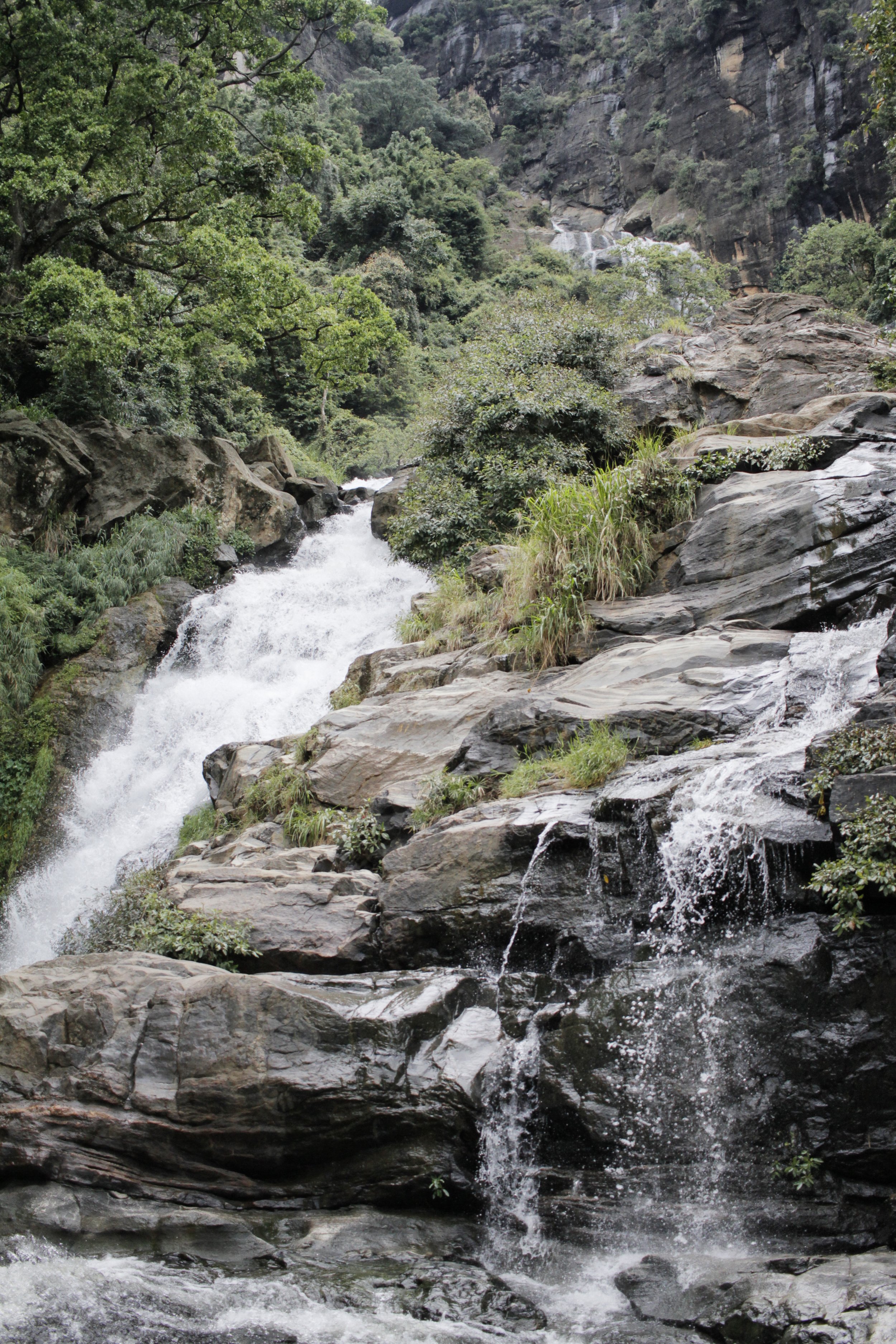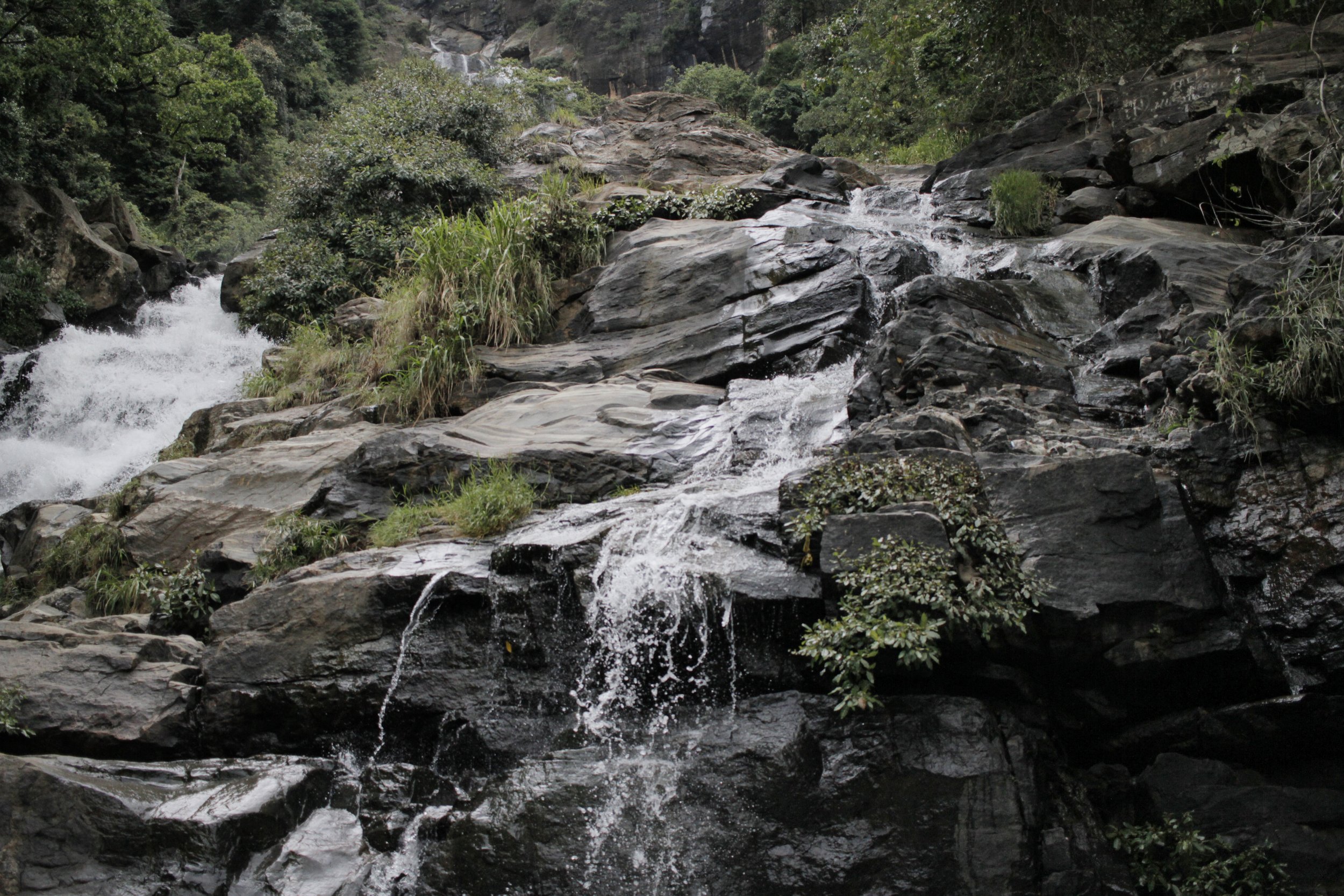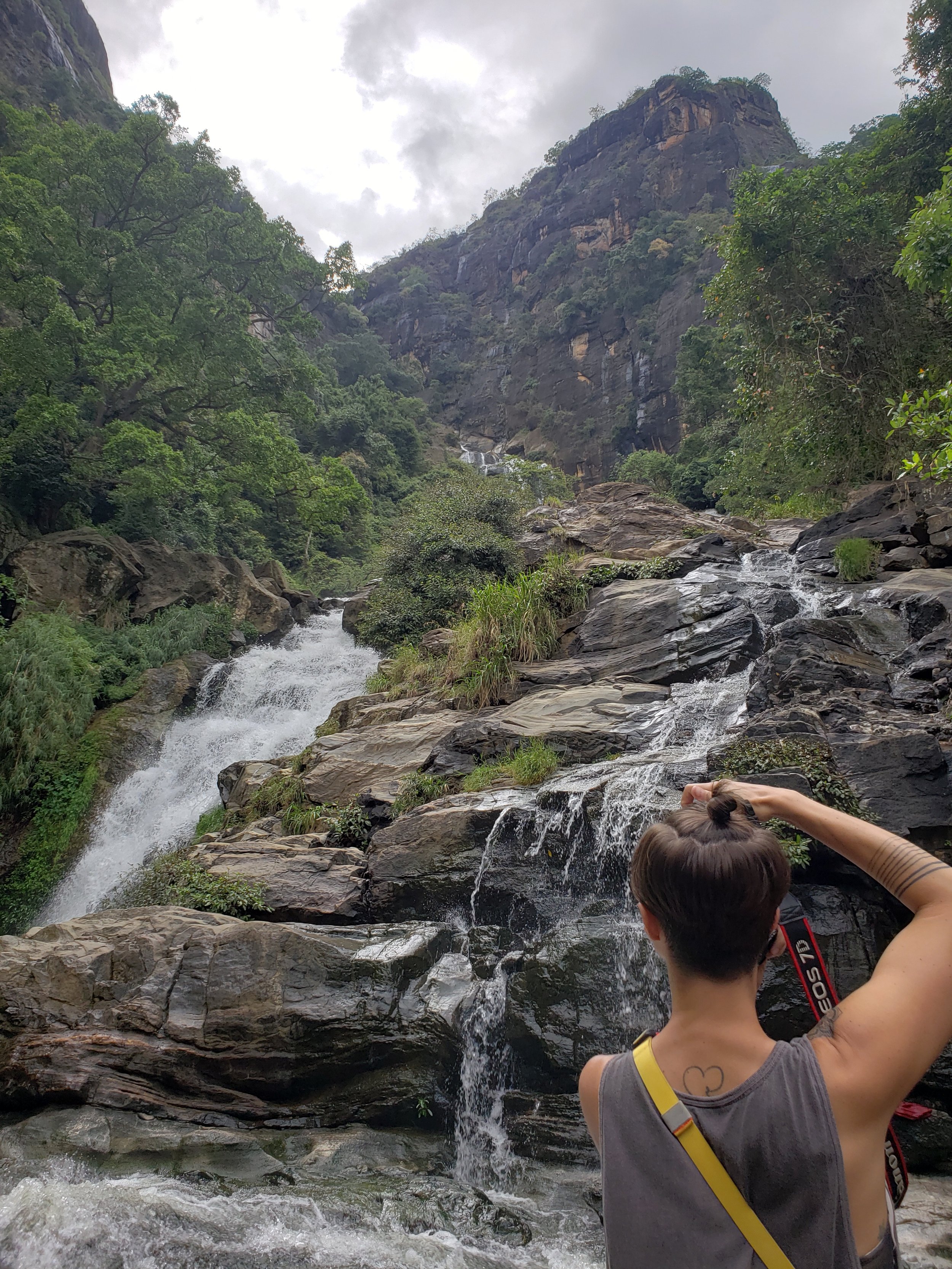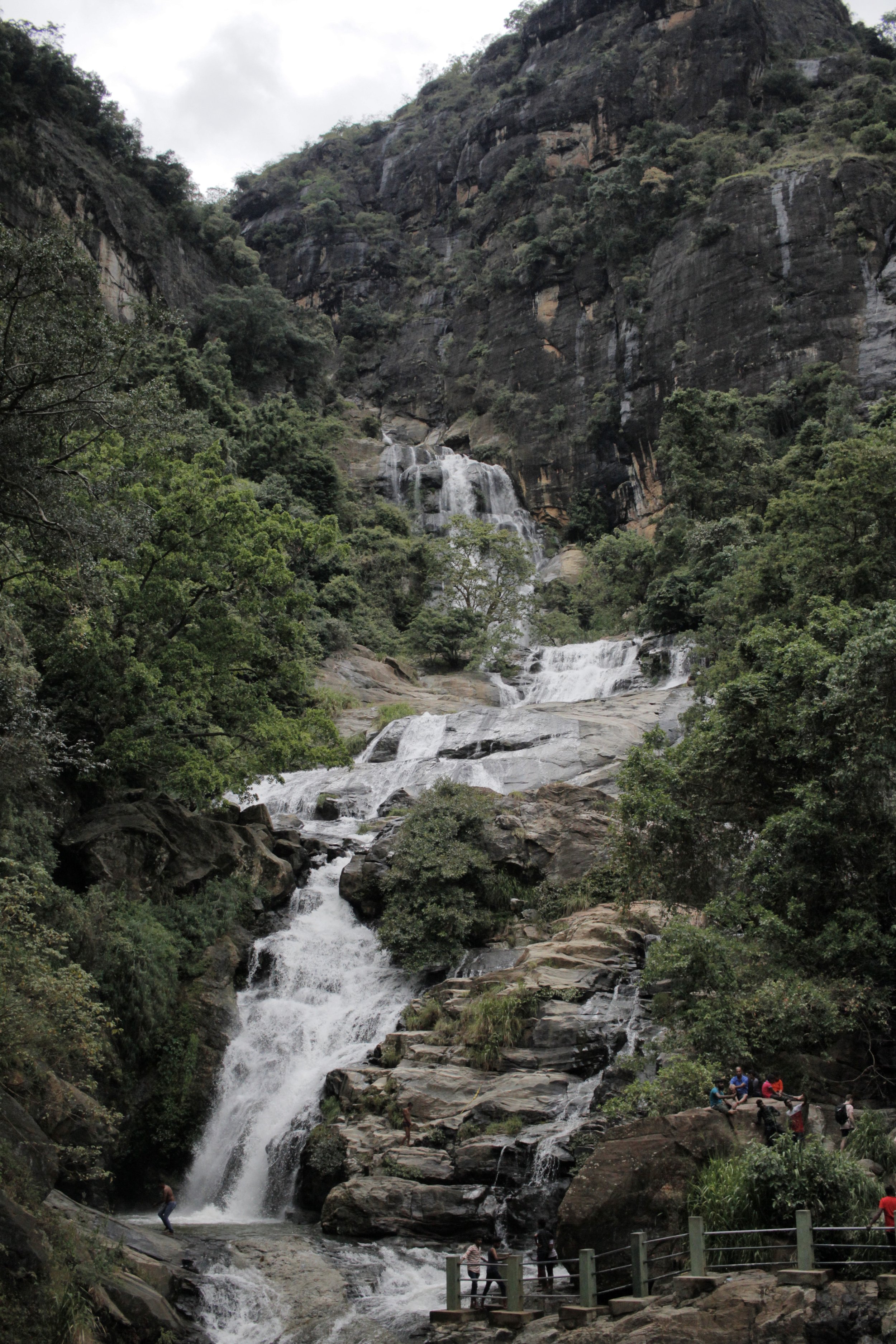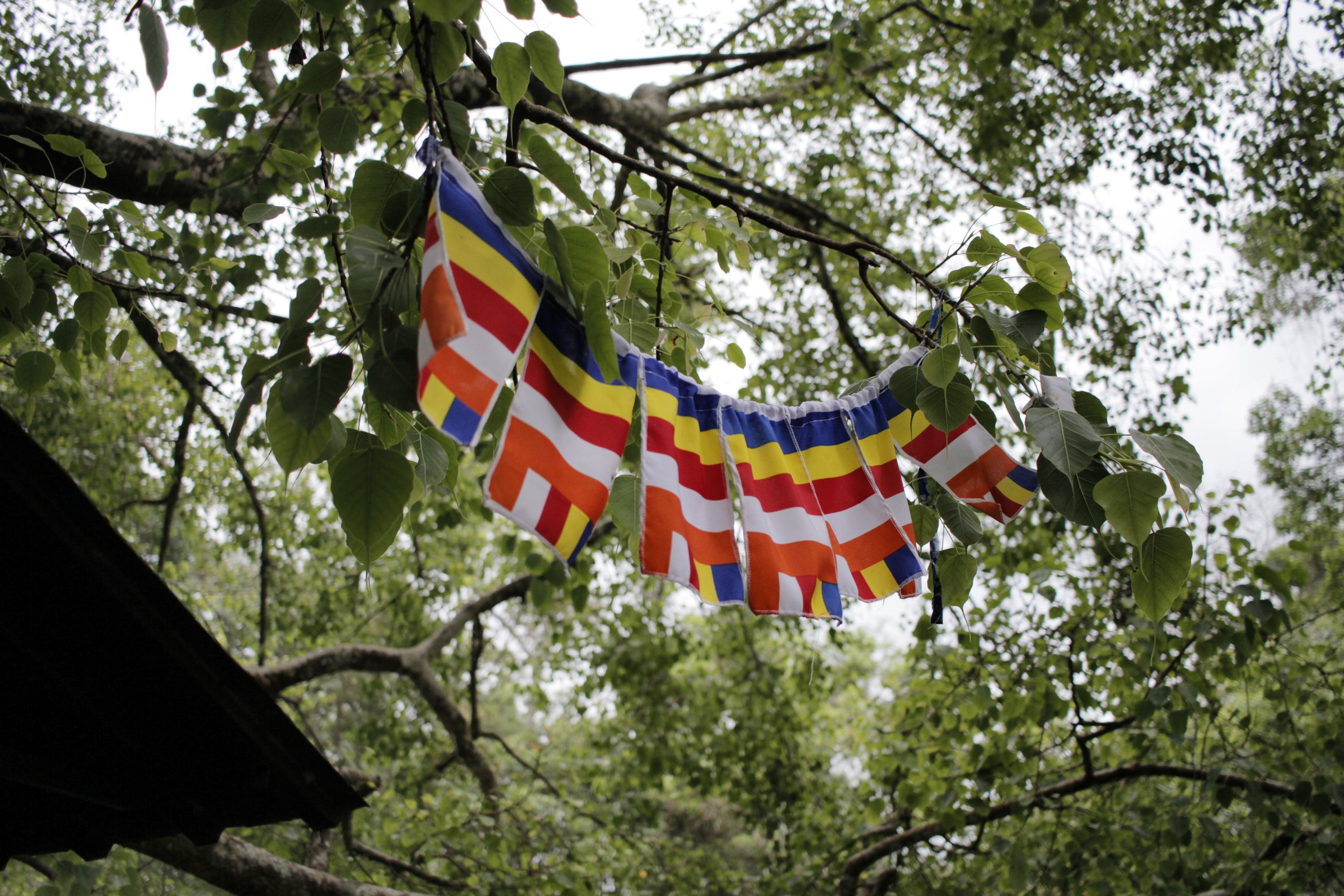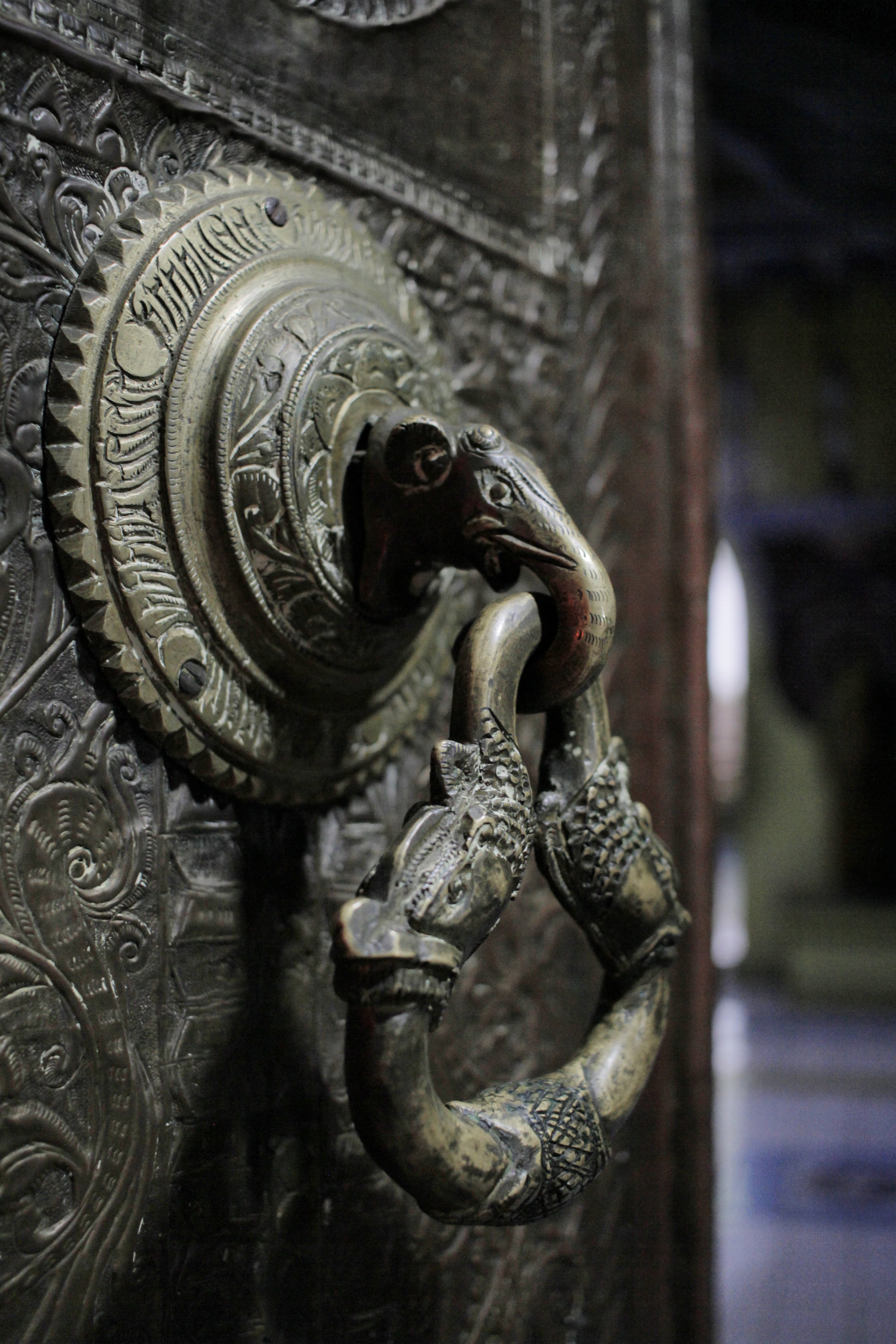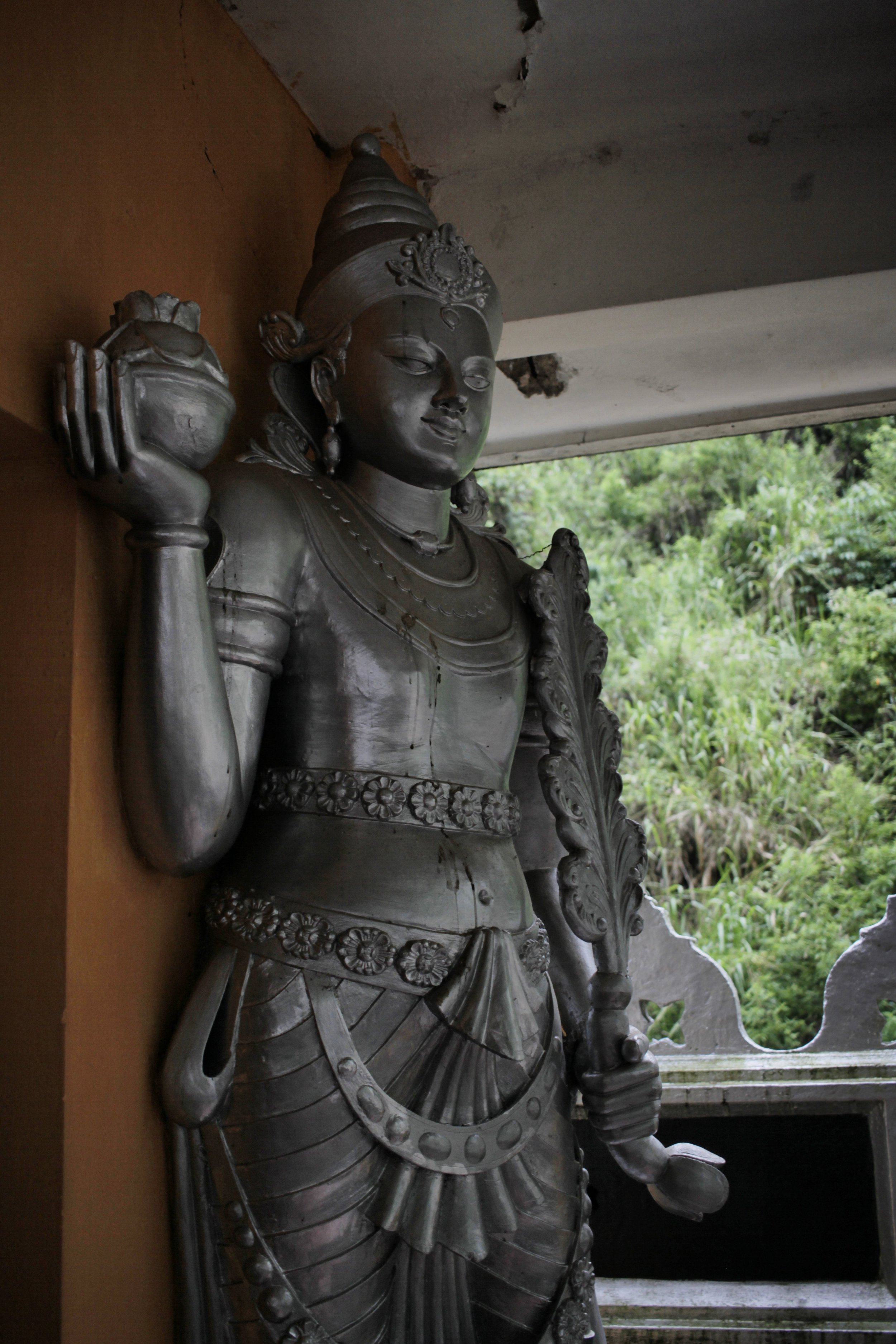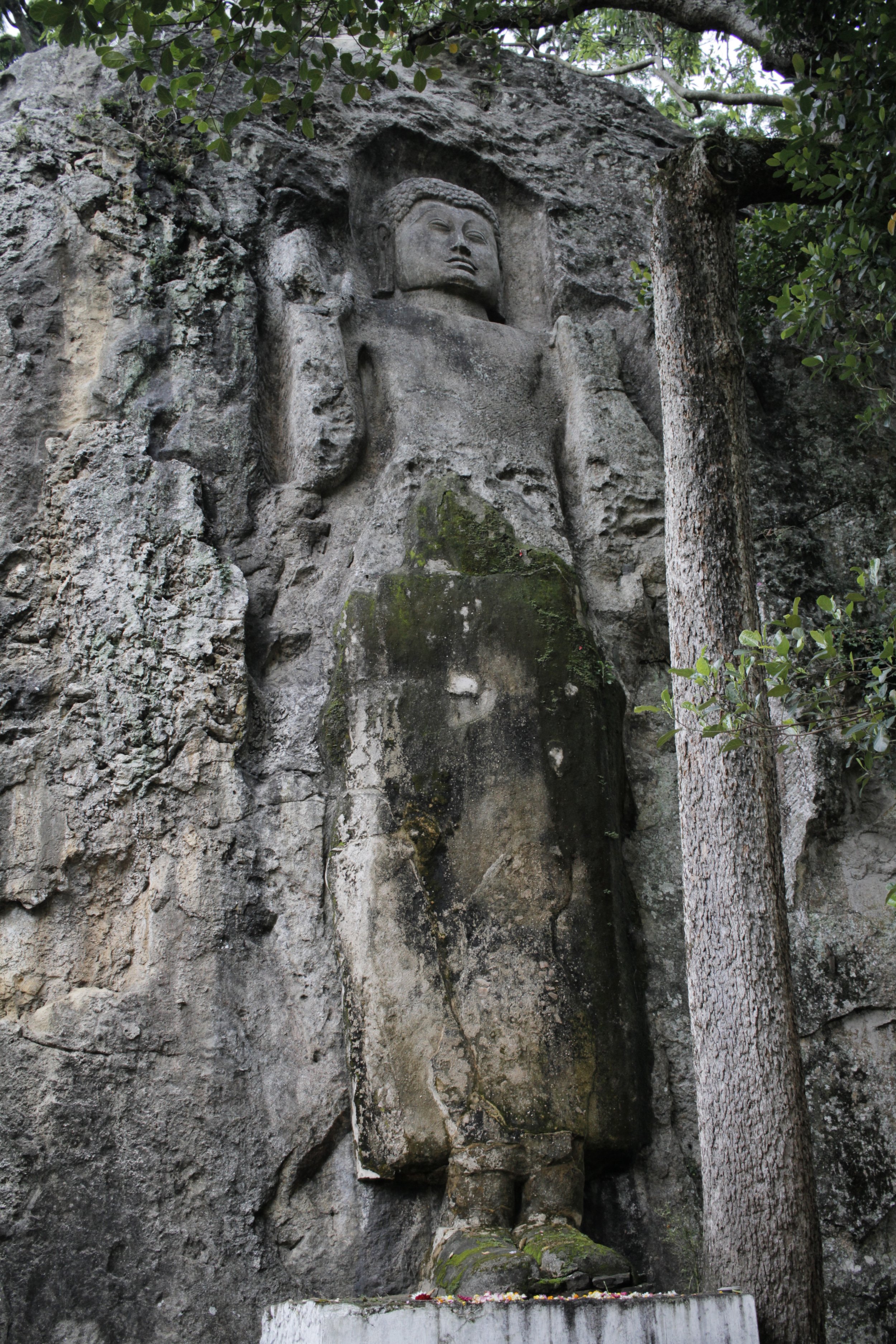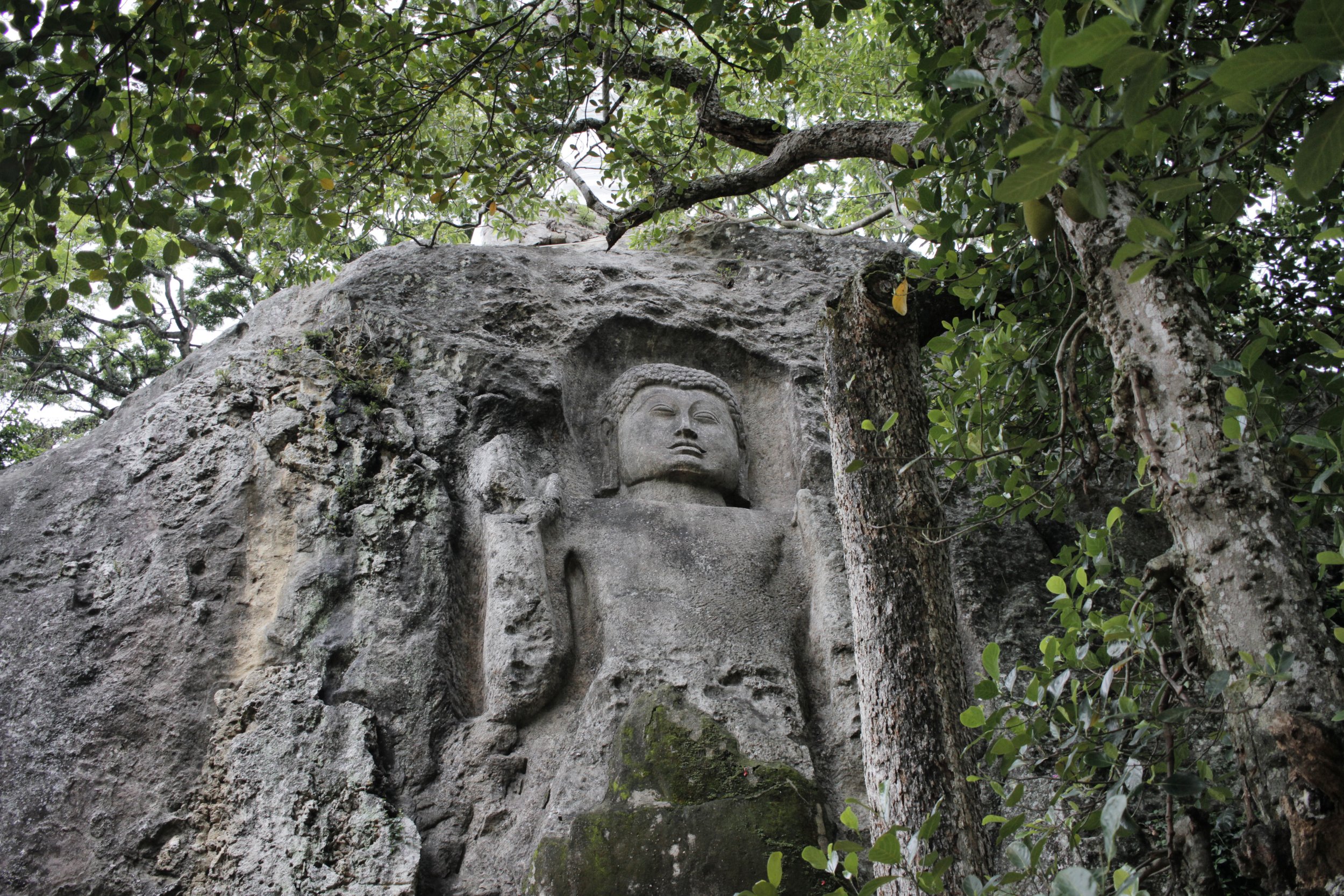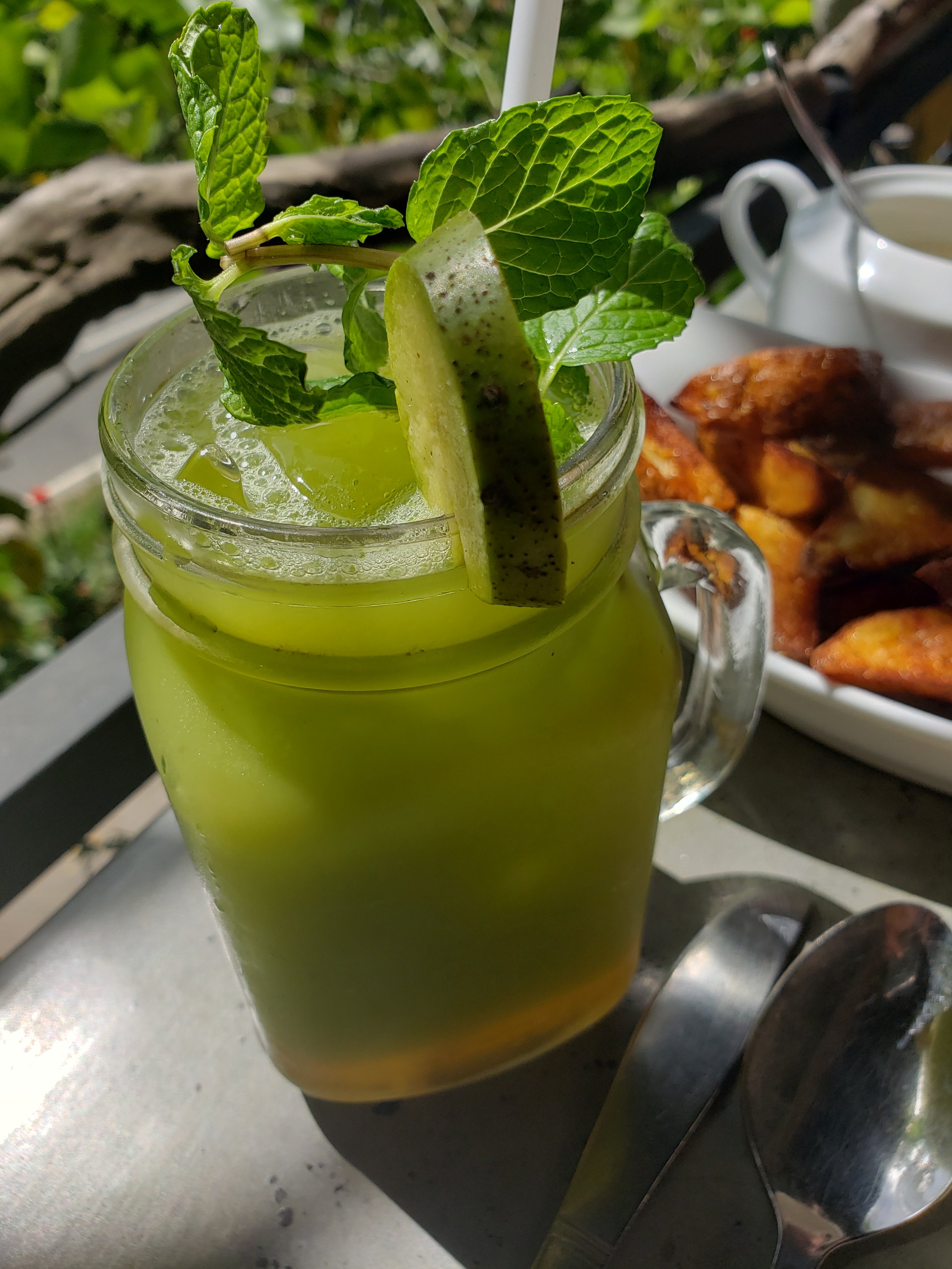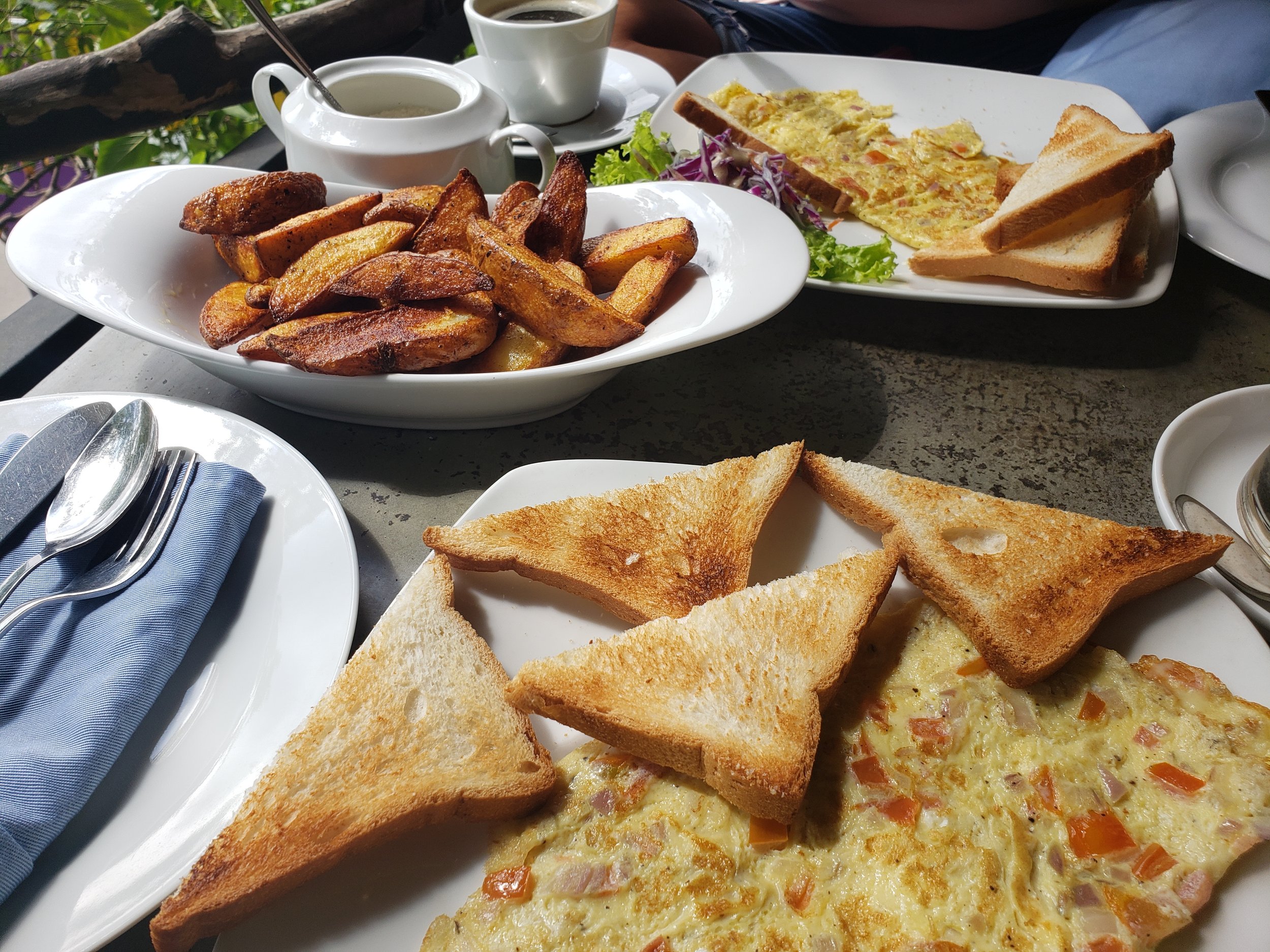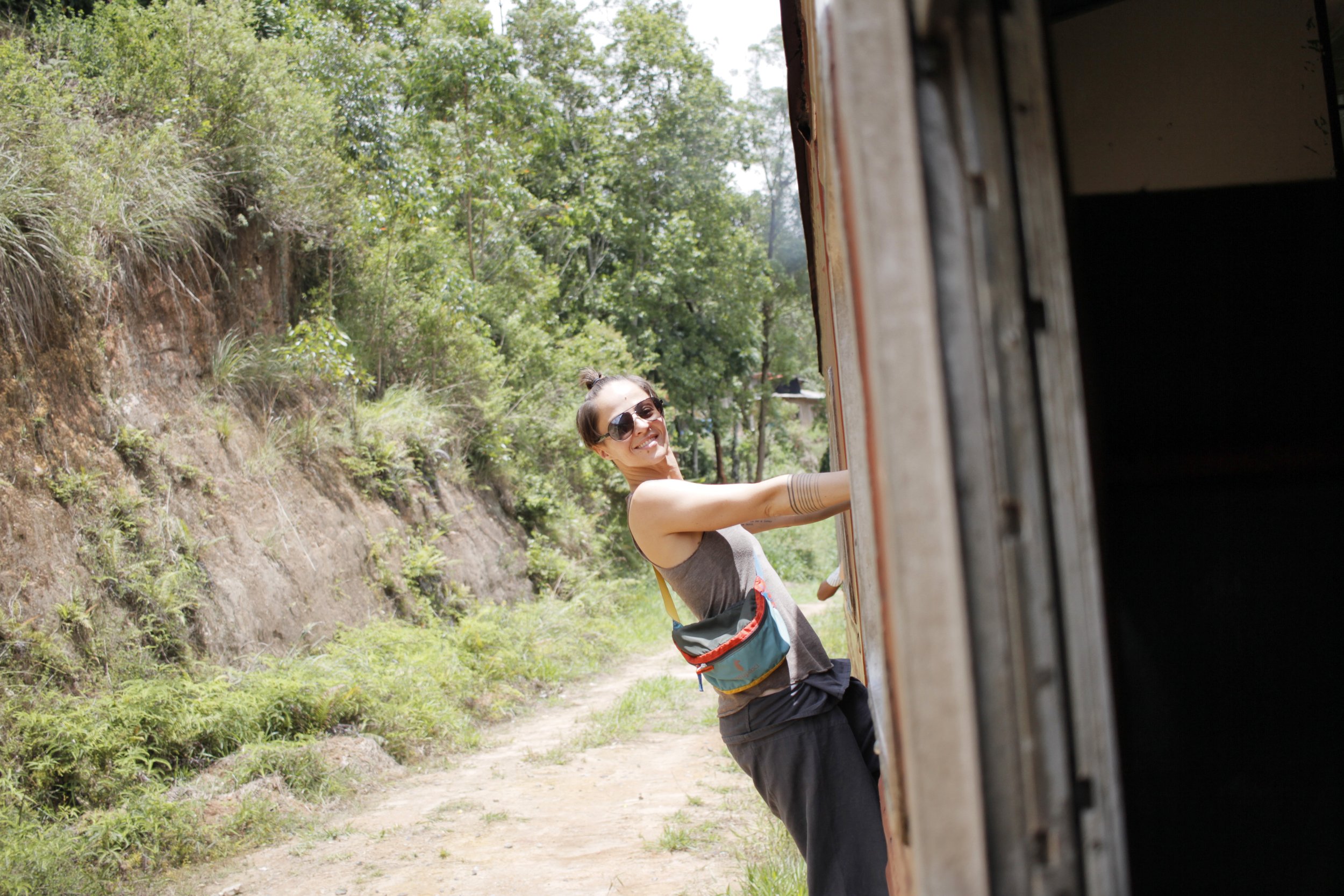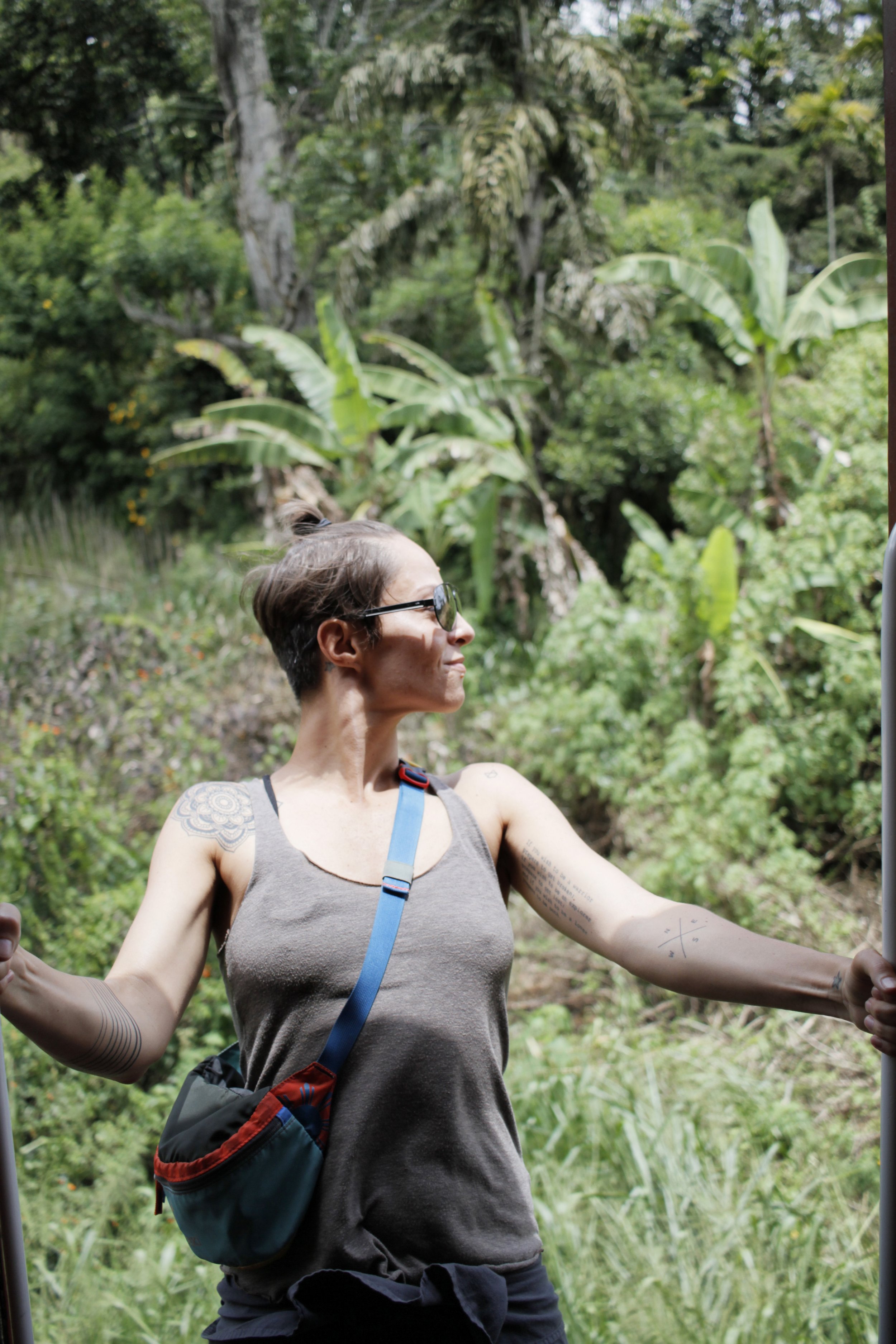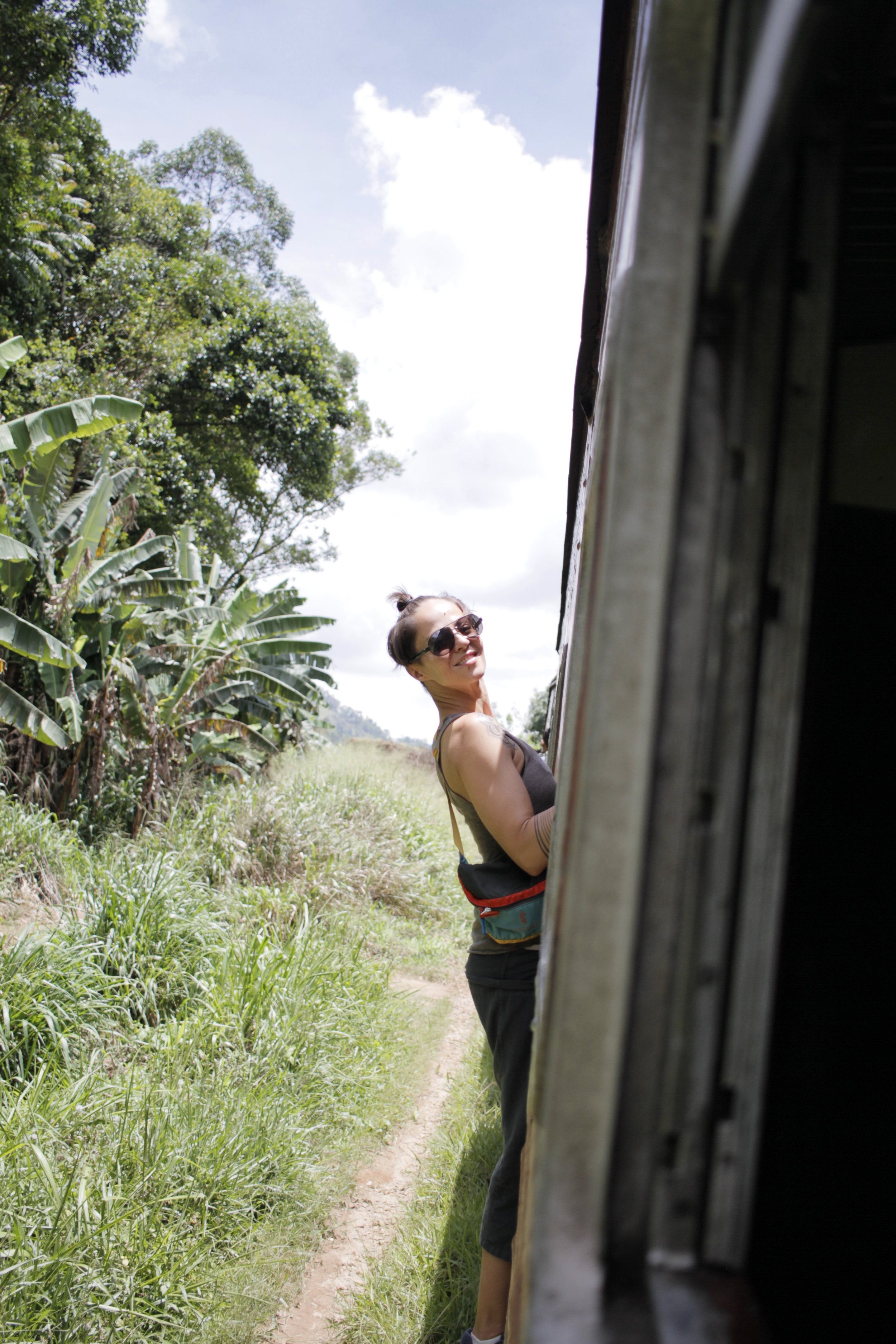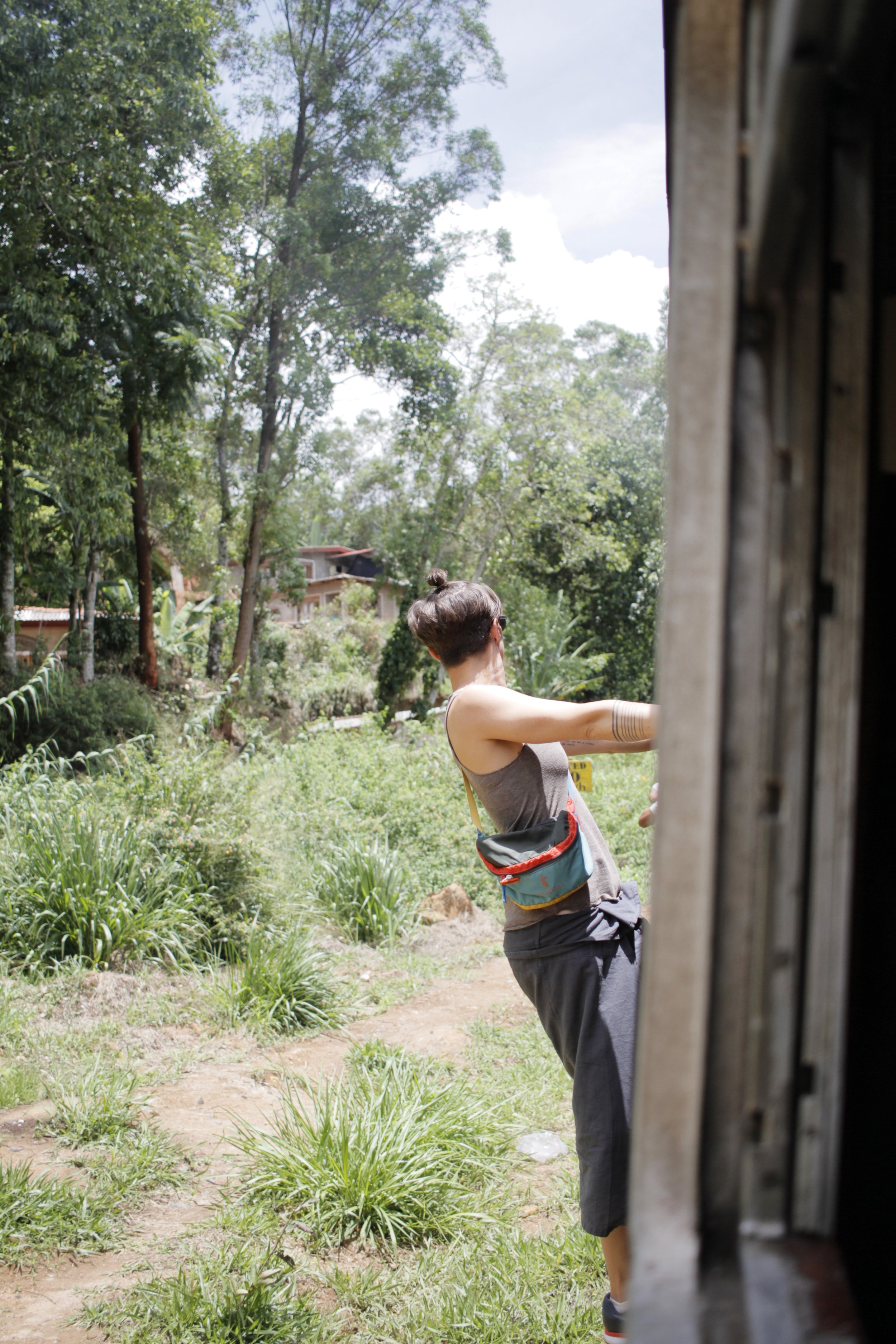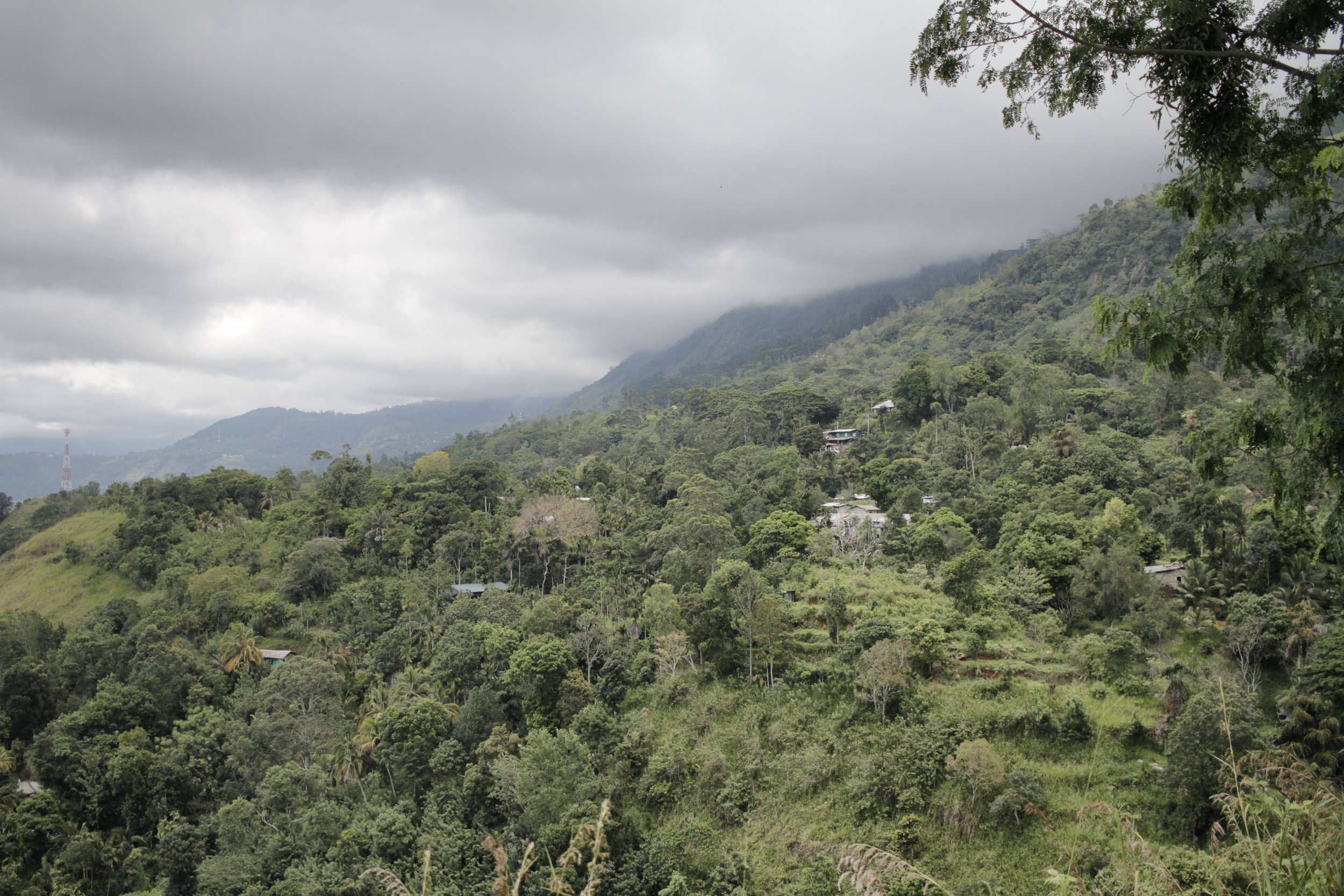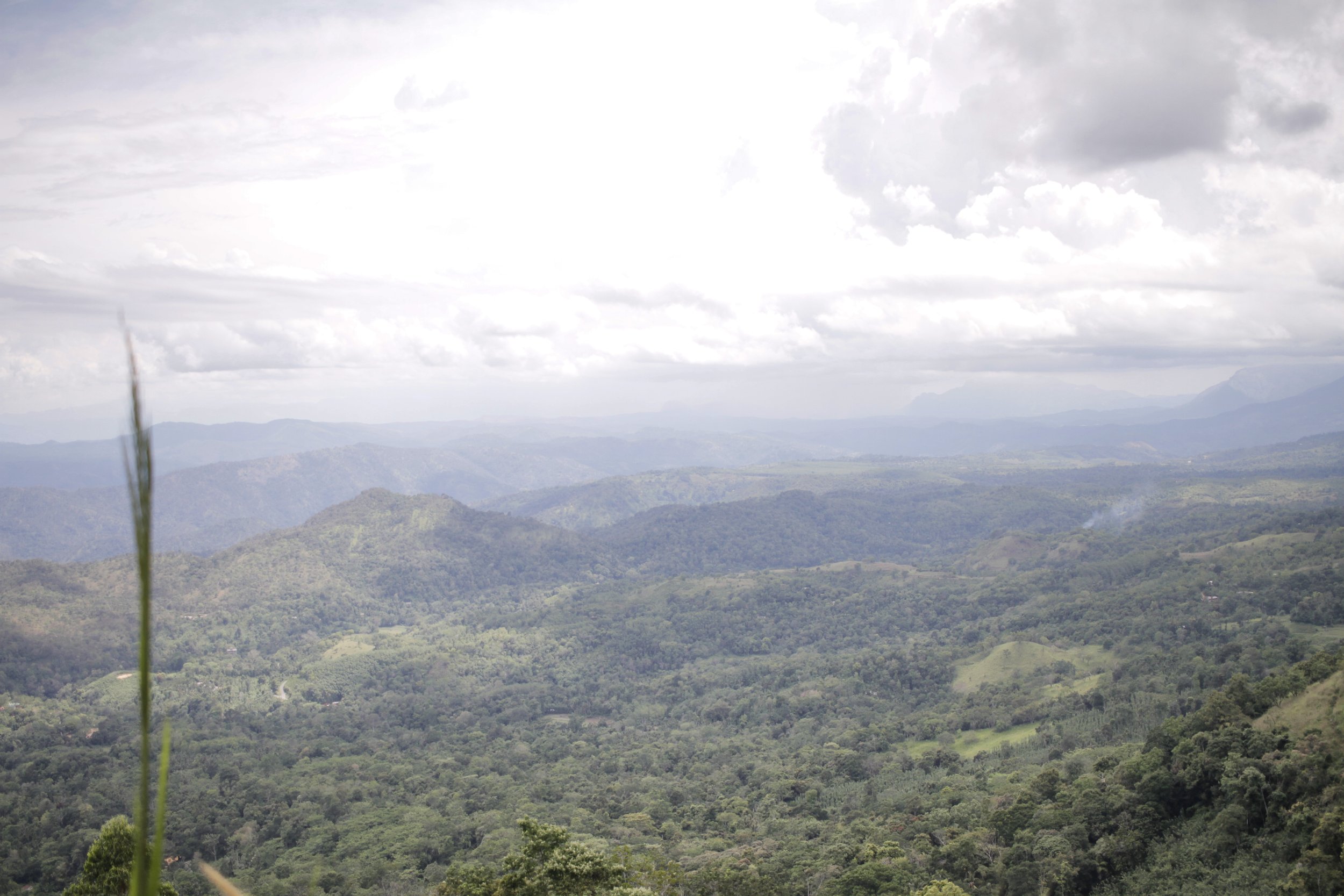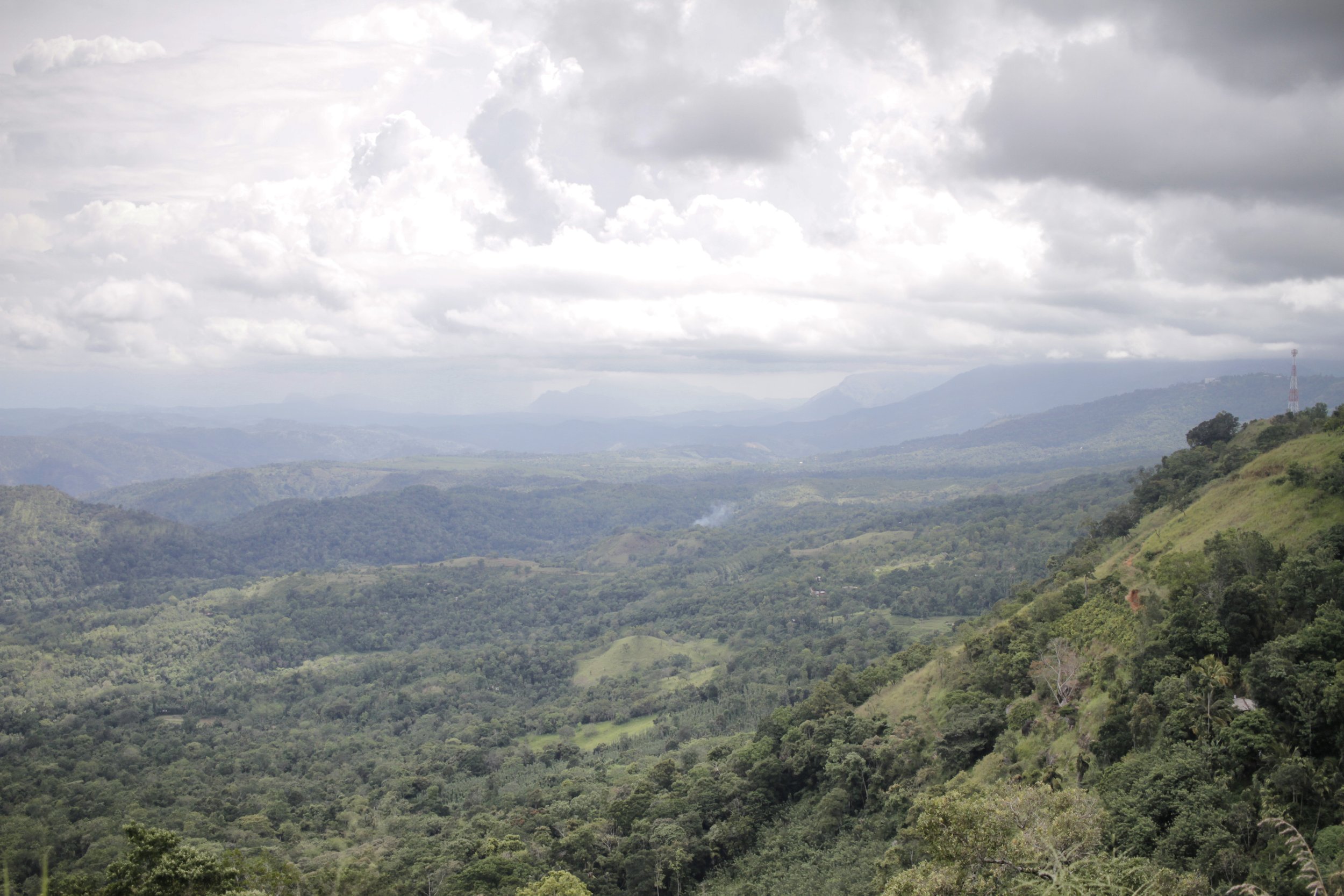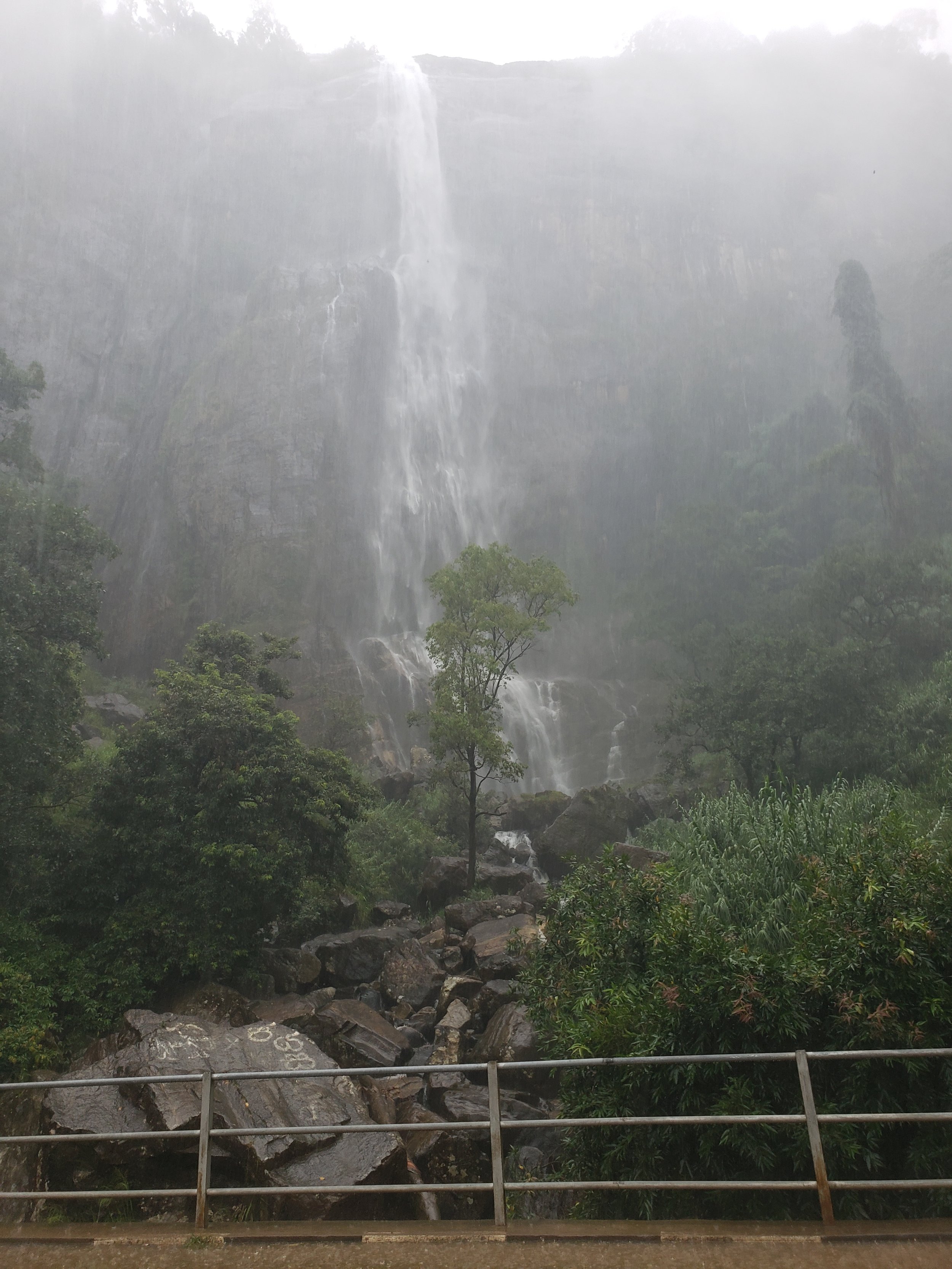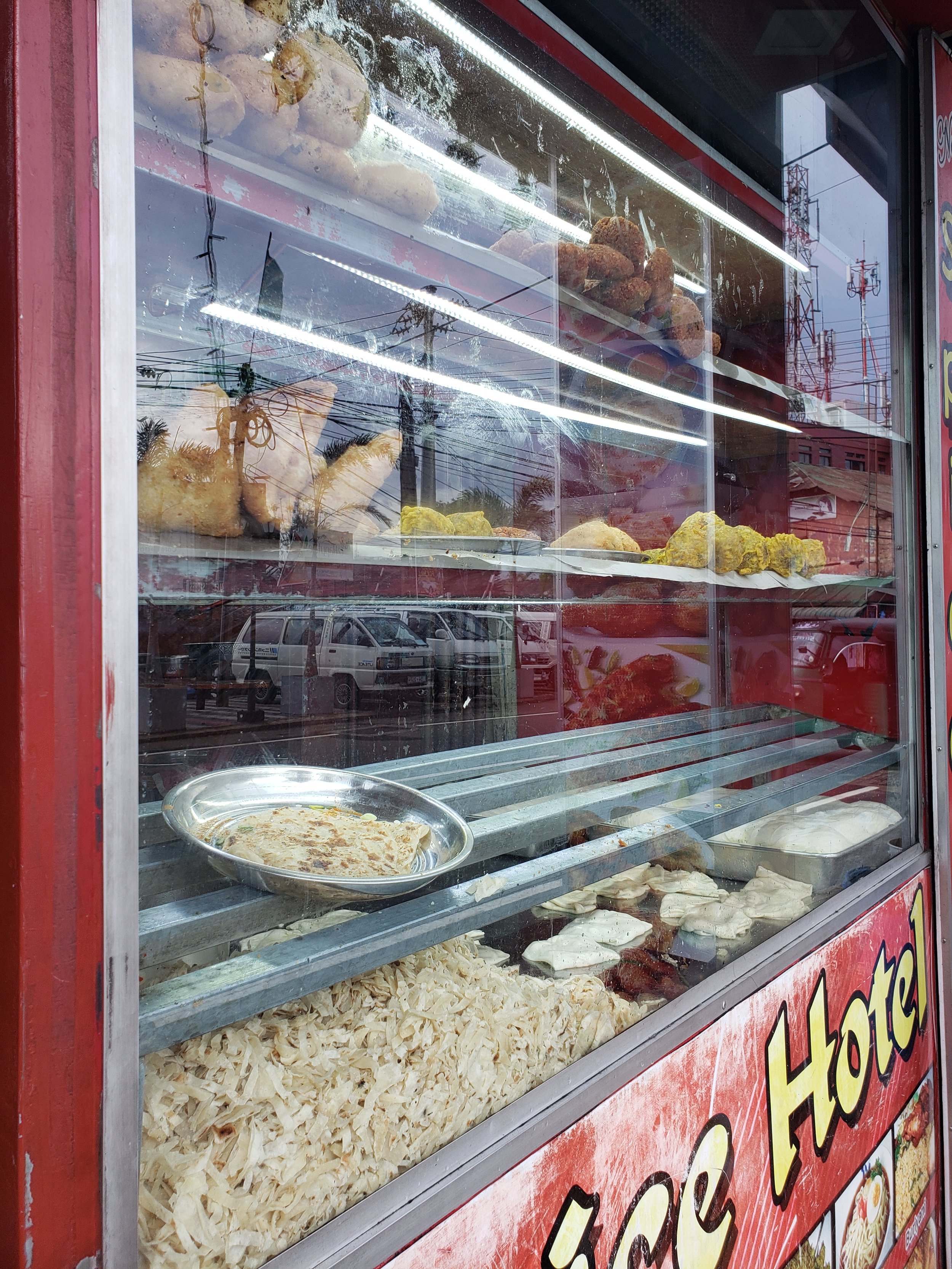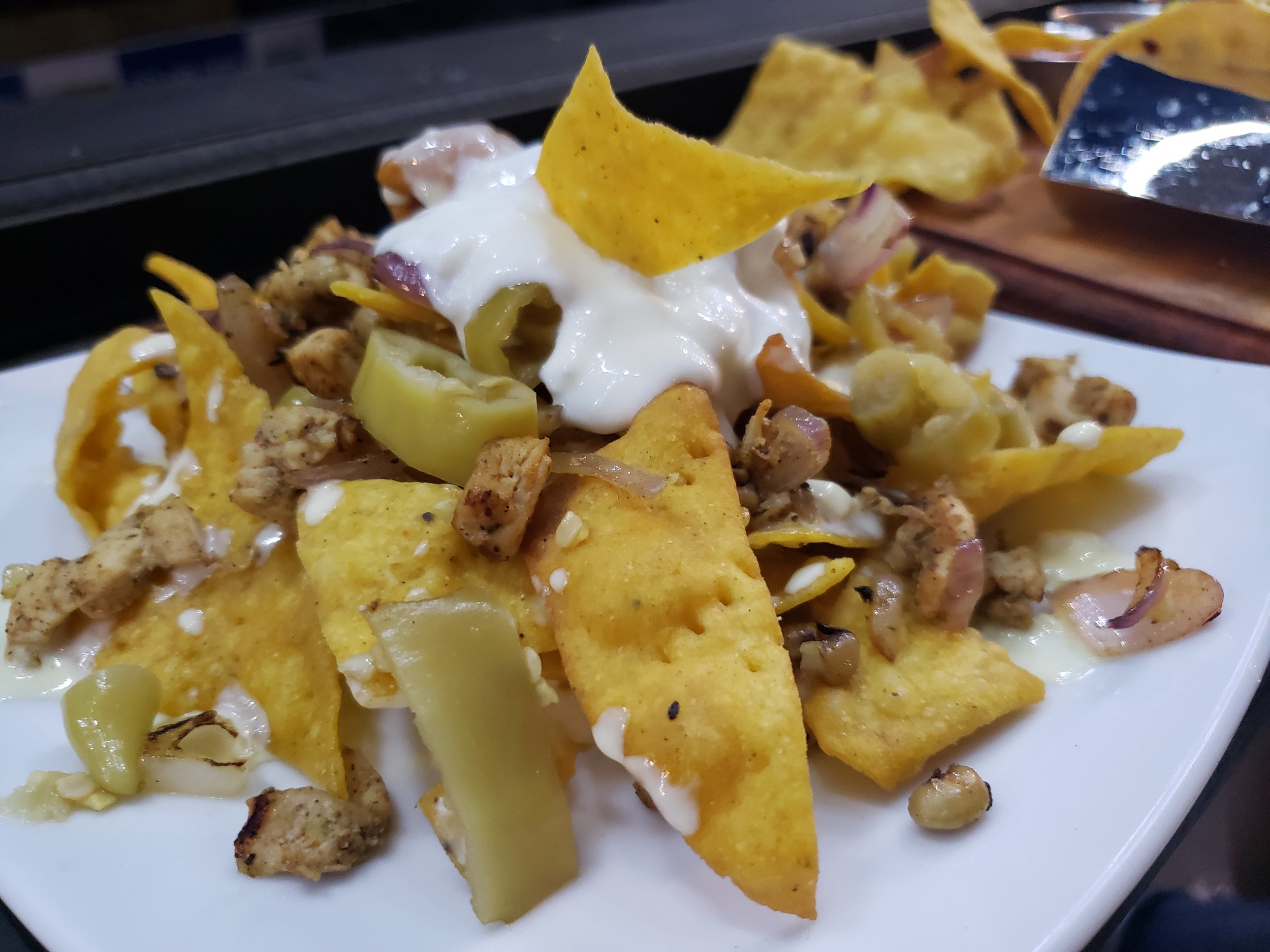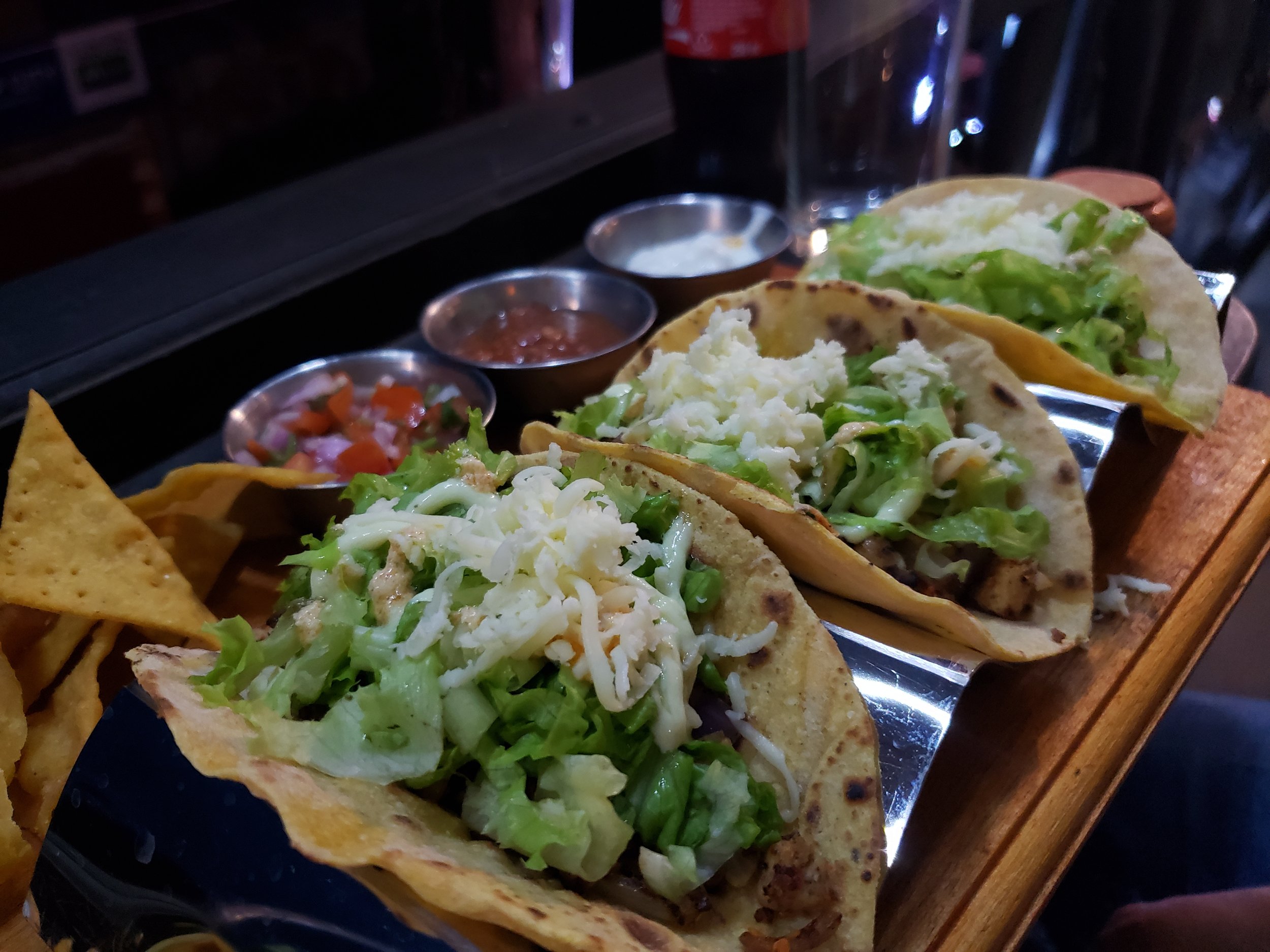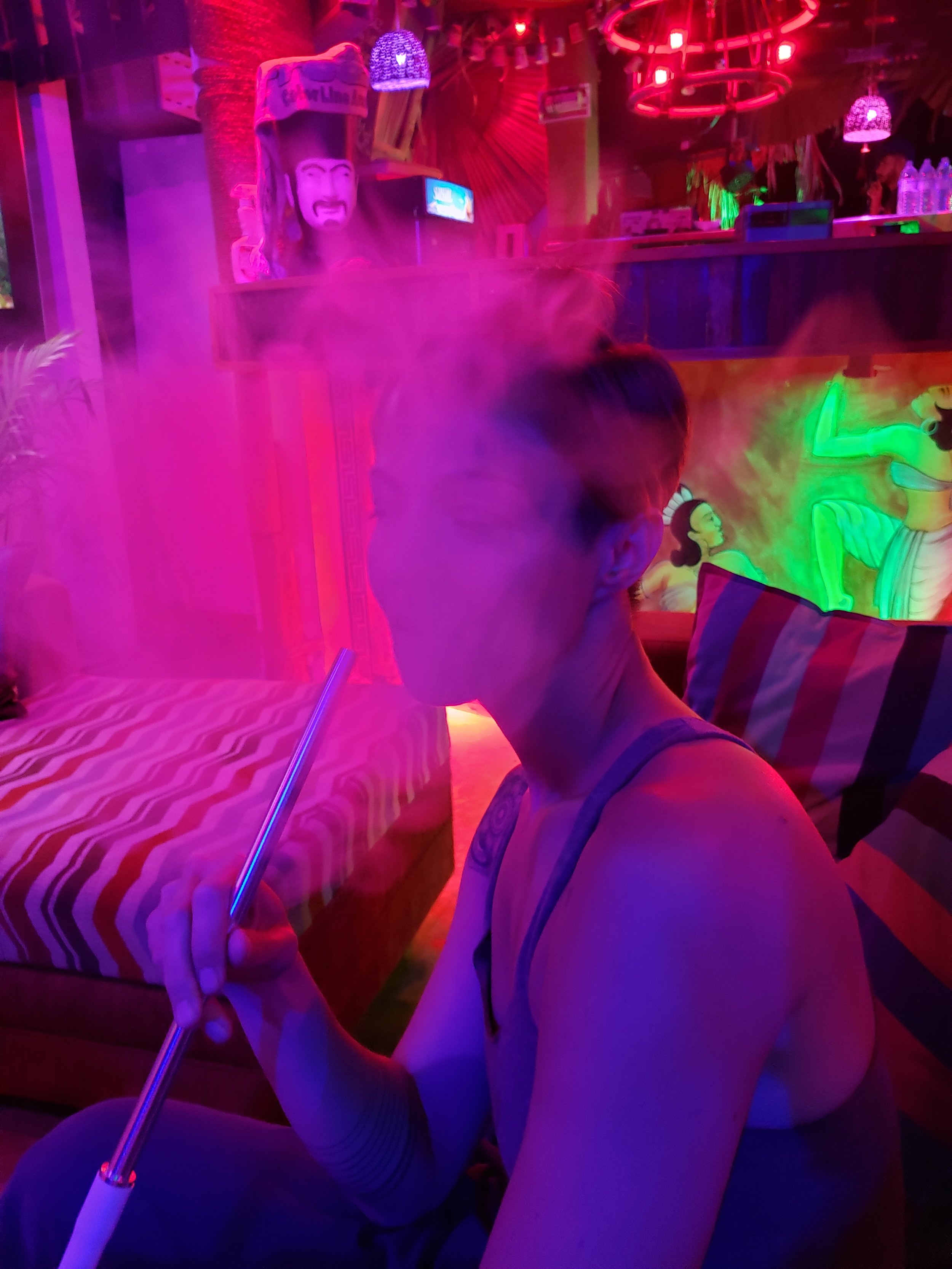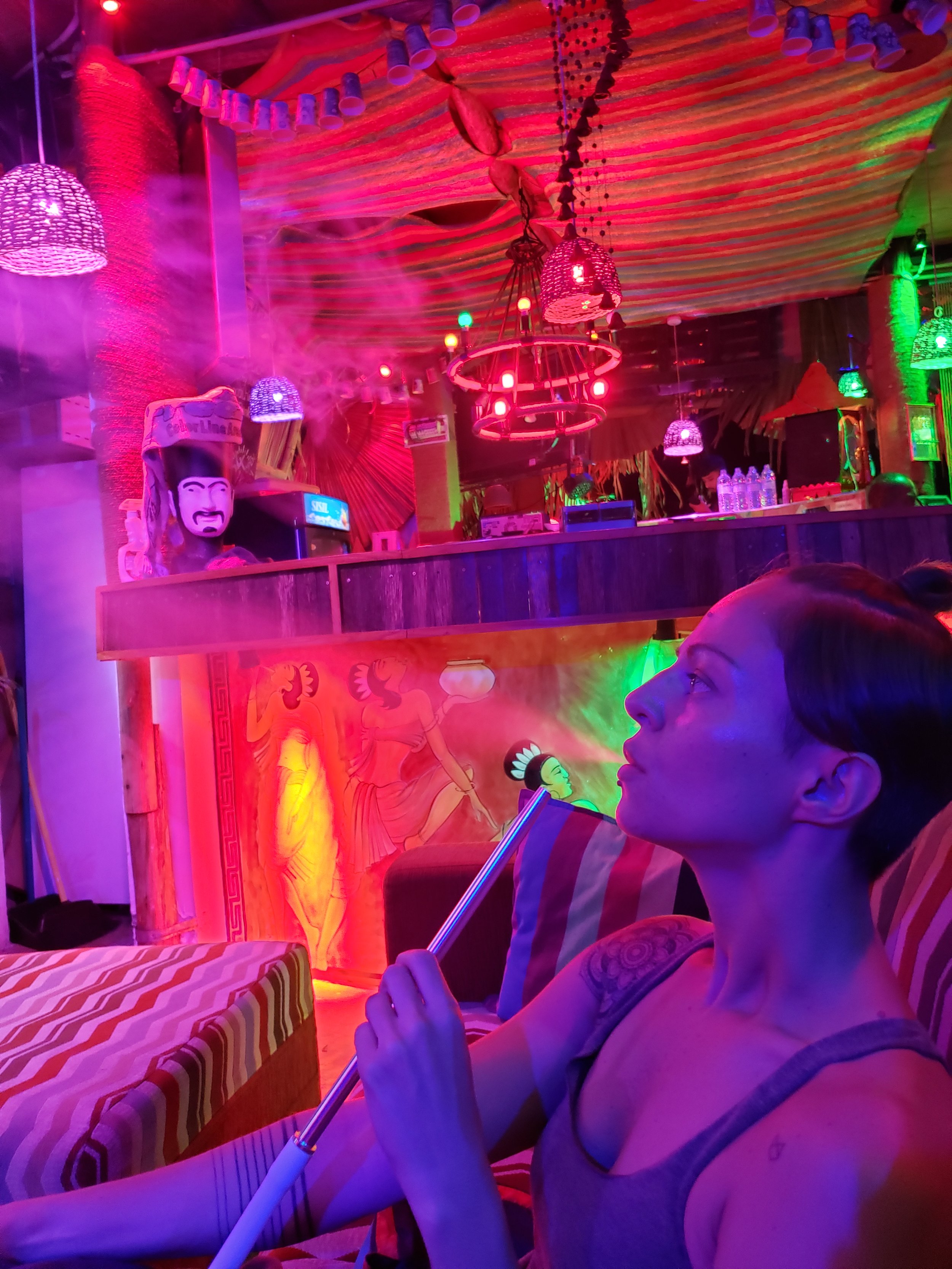Ella, Sri Lanka
Epic Waterfalls, Train Rides & Jungle Mountains
Sri Lanka, formerly known as Ceylon and officially the Democratic Socialist Republic of Sri Lanka, is an island country in South Asia in the Indian Ocean. Its nicknames, Pearl of the Indian Ocean and Teardrop of India, come from this small nations natural beauty, extraordinary biodiversity and precious gemstones, along with its teardrop shape just off the coast of India. An island of wondrous proportions, Sri Lanka has it all including diverse wildlife, delicious flavors, stunning landscapes, kind welcoming people and a rich culture and history worth celebrating.
Ella, a small town east of the capital, sits 3,415 feet above sea level and is surrounded by rolling hills covered with cloud forests and tea plantations. It’s a lush jungle town with rich varieties of flora and fauna, not to mention stunning waterfalls and Buddhist temples. Due to its elevation, the climate is a bit cooler than the surrounding lowlands but it’s a nice break from the intense dry heat elsewhere in Sri Lanka. Ella’s most famous and highly photographed attraction, Nine Arches Bridge, is something you won’t want to miss, along with catching a scenic train ride from Ella to any nearby town.
Traveling through Sri Lanka lasted an incredible three weeks and began north of its capital city, Colombo, circling the country clockwise with our first destination, Elephant Watching in Pinnawala. From there we moved on to the dusty city of Sigiriya to hike the Eighth Wonder of the World (So They Say), explore the Ancient City of Polonnaruwa and experience a real life Elephant Safari at Minneriya National Park. Marveling at Giant Buddha’s, Botanical Gardens & Fire Dancing in Kandy, touring Nuwara Eliya, also known as the City of Light and enjoying Ella’s epic waterfalls, train rides and jungle mountains followed in the weeks to come, along with a safari at Yala National Park in Tissamaharama and finally, soaking up the sun in the seaside town of Mirissa for its Iconic Old City of Galle, Whale Watching & Stunning Beaches.
Arrive in Ella
From Nuwara Eliya, the ride to Ella took about two hours with a taxi from the PickMe Sri Lanka app. The drive was peaceful and arriving at our stay in the late afternoon, Green Paradise, felt somewhat magical, as if we were entering a sacred jungle. It was tucked into rolling hills covered in tea plantations near the Ella train station and off the town’s main street (there’s really only one in town). The setting was pure jungle vibes, with lush greenery in all directions, especially behind our little bungalow overlooking the train station.
Ella is a small town that’s quiet and unassuming but its charm makes a great impression. All the best restaurants, cafes and shops are located on Ella Road, the main street running through the center of town. So after settling in, we stepped out for a quick bite to eat at Matey Hut Ella Sri Lanka. A no frills cafe serving up all things local, the spot was so packed that my friend and I ended up taking a seat with fellow traveler, Nora from the UK, and enjoying our meal together.
Excited to try something new from this area, I ordered mixed juice, a spiced veggie and fruit salad, chicken curry and hoppers, one egg, one regular and one sweet. Named after the pan that gives them their shape, hoppers are thin bowl-shaped pancakes made from fermented rice flour and coconut milk. The fermented, live batter gives a slight sourness to the flavor and a bubbly texture that’s light and airy.
Typically, just as the batter is beginning to cook, chefs break an egg over the center and cover the pan but some are made without eggs and filled with other toppings after being cooked. These crispy basins call for a variety of fillings such as curry, fresh fruit, dhal or various chutneys. To eat, smoosh the hopper between your fingers and dip it into your curry, chutney or sambol (an Indonesian chili sauce) of choice and enjoy. This was by far one of my favorite dishes in Sri Lanka and I simply couldn’t get enough.
After spending some time researching the surrounding area, a plan was hatched for the following day. A tuk tuk driver would arrive in the morning to help us explore the town and its natural wonders.
Hike Little Adam's Peak
Early in the morning, breakfast at Ella Coffee Avenue included an American spread of scrambled eggs, toast, french fries, baked beans, sausage, bacon, grilled tomato and pineapple juice, alongside a hot cappuccino. The meats and coffee were the best parts of the meal and more than enough to get the day started.
Following breakfast, it was time to meet our driver for the day, a tuk tuk arriving at 9 a.m. promptly. He’d be zipping us all over town, anyplace desired and the first stop was Little Adam’s Peak about 15 minutes away. Due to its striking similarity, Little Adam’s Peak is named after the sacred mountain Adam’s Peak (Sri Pada) located four and a half hours west, where according to Sinhalese Buddhist tradition, lies the sacred and preserved footprint of Buddha himself.
As our driver pulled over to park, we hopped out and followed signs leading to Little Adam’s Peak. Free of charge, the trail was clearly marked, well maintained and easy to follow. Though the peak stands 3,743 feet high and has some of the best views of the surrounding landscape, the hike begins at a high elevation, leaving visitors with only roughly 1,000 feet to hike.
Near the beginning of the climb there was a zip line costing $20 USD for those daring to be brave, along with a set of stairs leading up to the first set of views on Little Adam’s Peak. Foregoing the zip line, we continued onward. Multiple stops along the way, large rocks, platforms and viewpoints gave many opportunities to stop and rest or take photos, which we happily took advantage of along the way.
Across the valley, stilted bungalows were nestled within the dense trees, perched along the mountainside. The panoramic views of the surrounding valley and lush green forests were so impressive and the hike was peaceful, not too busy or strenuous. All in all, the hike took about 45 minutes including time to stop along the way and enjoy the vista at the lookouts.
At the top of Little Adam’s Peak, a small shrine with a golden Buddha was placed on a flat dusty area. Tattered and faded flags tied on a string flapped in the wind and added a pop of color set against the soft blue sky. There was also some additional hiking to be done along a more narrow ridge leading to a peak further out, where one can only assume the views improved, but we weren’t up for the hike as it looked a bit dangerous.
Instead, we continued to enjoy the main platform, appreciating the stunning views. The grassy green mountains were covered in abundant plant life and looked as if they were waves rolling endlessly across the landscape.
At the top, a few vendors were selling water and ice cream to help hikers cool off and somehow, a tiny puppy had made his way up there too. He was greeting guests as if it were his mountain and we were in his domain.
After a moment to explore the peak we returned back down the mountain. The hike down was just as enjoyable as the way up, fairly simple and on the whole, a very lovely hike.
Discover Nine Arches Bridge
Nine Arches Bridge, also known as Bridge in the Sky, is a viaduct bridge and one of the best examples of colonial-era railway construction in the country of Sri Lanka. Located between the Ella and Demodara railway stations, it’s best to arrive with enough time to witness one of the colorful old trains stop to let off passengers and receive others.
From Little Adam’s Peak, we made our way over to Nine Arches Bridge, a quick 10 minute drive. Our driver stopped alongside the road at a tiny trail leading down the mountainside. At first confused because the bridge wasn’t visible, he explained this was the best way to approach the bridge while avoiding the crowds. Climbing down through the brush from above, the secret trail was the best idea, allowing for gorgeous views from above as we emerged from the thick bushes and trees.
Mesmerized as the bridge seemed to appear out of nowhere, we continued the hike downward. Mostly effortless and uneventful other than dodging the greenery and stopping to say hello to a woman working on the hillside, we reached a clearing below within 15 minutes or so. Crowds had already begun to form, anticipating the arrival of a scheduled train. First, though, we hiked down even further to the main platform and wandered around a bit.
To my surprise, visitors were allowed to walk on the train tracks, as well as follow a narrow pathway alongside the tracks, crossing over the bridge to the other side of the valley.
The bridge itself was impressive. Constructed in 1921 and reaching 80 feet high, 25 feet wide and nearly 300 feet in length, it was made of stone, brick and cement. Rumor has it that when construction work started on the bridge, the Great War began between empires of Europe and the steel set aside for this site was reassigned to Britain’s needs at the battlefront. Consequently, the work on Nine Arches came to a halt, leaving locals to build the bridge with materials other than steel, namely the stone, brick and cement.
After reaching the bridge, we spent sometime exploring the area, walking across the bridge to the other side and admiring the views from the bridge itself. What I loved most was how it seemed to magically appear from the jungle, contrasting with its surroundings but somehow, fitting in seamlessly, honoring the landscape.
The coloring on the worn stone and brick was also something to admire. Over the years, shades of copper and black began to smear and drip down the sides of the massive arches creating a uniquely beautiful pattern.
In regards to arrival, it’s important to time your visit with the local train schedule as trains arrive throughout the day with stops at 9:30 a.m., 11:30 a.m., 3:30 p.m., 4:30 p.m. and 5:30 p.m.. But make sure to double check the current schedule so you don’t miss the train as it’s truly the best part of the visit and will make for some pretty incredible images.
Assuming a view from above would be the best, we hiked back up the trail and found a juice bar with a great patio perched over the hillside. To cool off, I ordered a tall mixed fruit juice and sat patiently waiting for the train to arrive.
And there it was, right on time. The dusty red train was certainly neat to see but the whole experience was quicker than anticipated. The train pulled up, passengers jumped off and within a moment, the train was off.
After the train passed, the crowd below began to slowly disperse and we made our way back to our driver as he waited patiently. Honestly, though I hadn’t thought of it at the time, it might be nice to wait it out and catch the next train passing by, if you have time to spare.
Explore Ravana Ella Cave
Ravana’s Cave is a secluded cave linked to a mythical Hindu king and it’s where Ravana imprisoned Sita after stealing her. Legend has it, evil Ravana, King of the Demons, spied Rama’s beautiful wife, Sita, in the forest. Falling in love instantly, Ravana arranged for his servant to disguise himself as a golden deer to help capture Sita. Once captured, Ravana then hid Sita in the caves behind Ravana Falls.
Formerly hidden by dense forest, Ravana’s Cave is part of a network of falls and steep mountainside now covered by Ravana Waterfall. The falls stand 82 feet tall with a lake at the base where Sita is said to have bathed. Along with multiple waterfalls and the cave, a temple can also be found in the surrounding area. And interestingly, excavations in the cave have uncovered evidence of human habitation dating back 25,000 years.
Reached by steep steps on a lush forested path, the cave was our first destination. The first portion of the climb was fairly tough and nearly straight upward into the forest. On the way up, we passed a small tea hut serving tea to a few guests. After about 30 minutes, the skies began to open and sprinkle down cool rain. Using caution on the slippery rocks was absolutely necessary but looking back over the forest, the views were incredible.
Upon reaching the cave, there were additional steps at the top to help visitors over the rocky terrain and inside, the small cave was dark, damp and cool with bats zipping in and out, flying overhead. After exploring for a few short moments, we hiked back down the hillside and walked over to the temple which was un assuming and underwhelming.
Lunch at Chill Cafe
Working up a huge appetite, it was back into town for lunch at Chill Cafe, a multistory roadside cafe with tiki hut vibes. Massive, with three levels and packed full of tourists, we were able to grab seats upstairs on the top level at the bar.
With a menu filled with more American style dishes, we ordered a mixed fruit juice called ‘Detox’ with celery, mint and pineapple and a mixed veggie salad and potato wedges.
The presentation was beautiful and my drink was especially delicious. The dishes were pretty good but not amazing as the salad dressing was a bit too sweet. Overall, the meal was satisfying but pricey.
Appreciate Ravana Falls
Our next destination was Ravana Falls, those connected to Ravana Ella Cave visited earlier in the day. Just off the main road leading into town, Ravana Falls cannot be missed. Currently one of the widest waterfalls in the country, it stands approximately 82 feet high, though seemingly much taller, with water cascading forcefully over the mountaintop and down its rocky side.
Near the base of the falls are multiple rock terraces and a wooden bridge allowing visitors to climb even closer to enjoy the views. Those interested in getting wet can wade in the calmer pools of water or dunk themselves under the rough waters of the waterfall itself.
At the very bottom of the falls, water fountains were formed by metal piping protruding from large rocks that were carved with patterns. Likely used for washing hands or to drink, small pools of water formed below the fountains.
Looking up at the falls, I was reminded about its legend. As the story goes, Ravana Falls was named after the legendary King Ravana, who is linked to the famous Indian epic, Ramayana. Ramayana is one of India’s most well known ancient texts other than the Bhagwat Geeta. Rama, the hero of Ramayana, and husband of Sita, is one of the most respected incarnations of Vishnu and most notable characters of Hindu Mythology.
As previously mentioned and according to legend, Ravana kidnapped princess Sita and hid her in the caves behind this waterfall, now known as Ravana Ella Cave.
It’s also said that during the wet season, the waterfall resembles a flower with withering petals but during the dry season, the water flows with much less strength and volume. Not sure where we landed in time, the waterfall seemed quite full.
Regardless, the sheer beauty and scale of Ravana Falls were awe-inspiring as it seemed to reach upward into the sky. Though absolutely gorgeous and worth the visit, the falls were quite busy in certain areas and at times, a little overwhelming, so be prepared.
Near the busy street vendors were selling snacks like corn and green mango, along with all kinds of jewels and gemstones. One of which kindly gave me two stones as a gift, expecting nothing in return.
Uncover Dhowa Rock Temple
Dhowa Rock Temple or Dowa Raja Maha Viharaya is a Buddhist rock temple located in the central mountains of the Uva Providence next to the small village of Dhowa. The temple is believed to have been built by King Valagamba in the first century BC and is one of many built by the king while taking refuge after an army from South India invaded the Anuradhapura Kingdom. Dating back over 2,000 years, the temple was officially acknowledged by the government as an archeologically protected monument.
To enter the gournds, a fee of Rs150 or about $0.50 USD was charged. Once inside, there were exterior courtyards to explore, along with a small temple housing beautiful artwork, sculptures and paintings. My favorite piece was one of the brass doorknobs carved in the shape of an elephant head. The intricate metalwork was simply stunning and the weight of the door knocker, robust.
But perhaps most famous, was the 38 foot tall Buddha statue near the back edge of the grounds. Carved out of a vertical granite rock face, the Buddha was breathtaking. This secret gem could possibly be missed if it weren’t for the brightly colored flower offerings at his feet.
Feeling in some ways incomplete, the Buddha statue stands tall with his feet close to eye level. With soft green moss covering his feet, Buddha stands still in time.
Offerings such as flowers are left at sacred sites and meant to purify one’s negative karma and help overcome unwanted emotions. Typically, flowers like chrysanthemums, lilies, orchids, daffodils, peonies and carnations can be offered, and they really do make a lovely sight.
Travel by Train from Ella to Haputale
In the morning, breakfast at Cafe Guru was incredibly delicious but costly. Maybe due to the ambience but this spot was adorable and one of my favorites, design-wise. The space was rich and authentic, not to mention tables that sat up in the trees with filtered light flickering through the leaves. It felt like dining in a real life tree house.
A simple breakfast consisting of an omelette, toast, potato wedges, coffee, latte and juice made from a special green fruit with mint covered the tabletop. The unfamiliar green fruit tasted a bit like green apple, slightly sour but incredibly refreshing and looked similar to a kiwi.
Today, we’d be hitching an exciting train ride from Ella to Haputale, a town about 45 minutes southwest. Only allowing tickets to be purchased 30 minutes before the train is scheduled, not before, was a bit stressful but worked out in the end. Costing a mere Rs60 or $0.25 USD, the train ride was meant to be an adventure and offer an opportunity to capture some amazing photos of the landscape and ride itself.
After waiting for some time at the station, the train finally arrived. We hopped on the third or fourth cart, not knowing which would be the best location and parked ourselves at a window seat waiting for the train to begin moving. Luckily, the train car was fairly empty so there was lots of space to move around and check out different vantage points.
Unfortunately, I learned pretty quickly that getting those incredible photos I’d seen online while researching my trip was going to be difficult. Perhaps a car at the very front or back of the train, rather than the middle, would’ve been better so that as the train turned you’d see more of it curling around the bend like a snake. It might have also be better to take the train ride during sunset for more interesting light.
Either way, we made the best of it. It was fun to hang out the open doors, zipping past the tall grass and palms along the tracks. It felt dangerous and went a lot faster than I’d imagined. Again, timing was everything with the photos. You had to snap during a turn to catch the end of the train and time things correctly so that as you’d stick your head out one window while someone else took the photo from another. Often times, a stranger would pop their head out instead, blocking your shot.
Along the ride, the train stopped at a number of smaller stations, maybe five or so, allowing riders to hop on or off, as desired. And then at Haputale, the next main stop, we hopped off with plans to explore the area.
In Haputale, we grabbed a tuk tuk driver to Diyaluma Waterfall for Rs2,500 or about $10 USD. Diyaluma Waterfall is the second highest in Sri Lanka at an impressive 720 feet tall. In Sinhalese, the language spoken by Sinhalese people of Sri Lanka, Diyaluma or Diya Haluma means “rapid flow of water”, literally translated as “liquid light.”
According to Sri Lankan historian, Dr. R. L. Brohier, Diyaluma is the setting of tragic folklore involving a young chieftain who had been banished to the highlands. In an attempt to reconnect with his lover, he let down a rope but as she was pulled up she bumped against the rocks, ultimately losing her life. Moved by compassion, the Gods created a stream of water to pour from the mountain hiding any evidence of the tragedy in a watery light.
As we traveled by tuk tuk to the falls and seemingly out of nowhere, the skies opened, first beginning to rain and then downpour. The road was incredibly bumpy, especially in a small cart but we continued to fly over the slick hills for an hour until we reached the falls.
Though typically accessed with a 20-30 minute hike to the top of waterfall, the weather was too dangerous and we didn’t dare get out of the tuk tuk. We could only peak up at the falls from the lower viewing area. We purchased tickets for Rs100 and hoped to wait out the storm but unfortunately it didn’t let up.
Slightly defeated, we headed back to the train station, speeding over the muddy roads and through the rain to make our train in time but when we arrived the schedule had been delayed by a few hours, a common occurrence in Sri Lanka. So instead of waiting, our tuk tuk driver agreed to return us back to Ella. Stopping along the way, we picked up a snack of roti with egg and vegetables for Rs50. A lucky surprise, it was so tasty and my first roti in Sri Lanka.
From then on, the ride back to Ella was smooth and easy, especially as the rain slowed. Back in Ella, we spent some time wandering the main street lined with coffee shops, cafes and clothing boutiques such as my favorite, Stolen Paradise.
In the evening, for something different we ate dinner at Rose Cabin, a Mexican restaurant just off the main street. Seats upstairs on the open air balcony were a really nice way to enjoy the evening. After studying the menu we ordered mango juice, mint lemonade, chicken tacos and chicken nachos.
Everything was incredibly delicious other than the cheese on the nachos which felt non-dairy. The tortillas were especially yummy, along with the yellow peppers atop the nachos.
After dinner, with intentions of unwinding and relaxing it was off to Mandala Cafe and Bar, a cafe and hookah lounge near our stay just across the train tracks. Selecting apple and mint, the hookah was exactly what I had in mind after an exciting but long day.
Some time later, a man brought out a giant hookah and set it down on the table. It was time to begin smoking. Seemingly lasting forever, the flavor was nice and mild. A few of the staff members came over to chat and were really kind. It was such a special experience. In the morning, we’d move on to Tissamaharama, a small town two hours south of Ella. Known for national parks, monastery’s, beaches and waterfalls it would surly wouldn’t disappoint this wanderlust.


